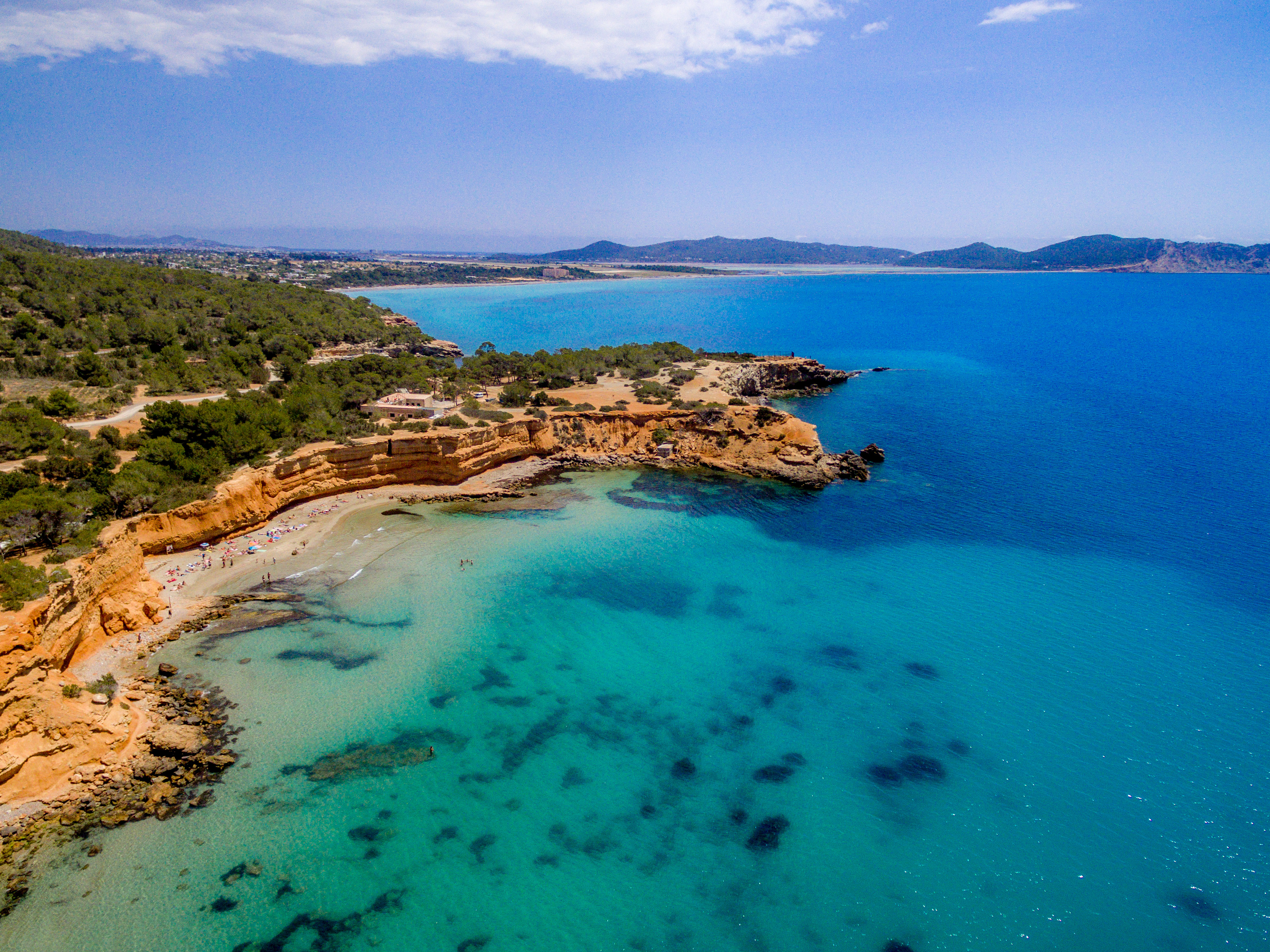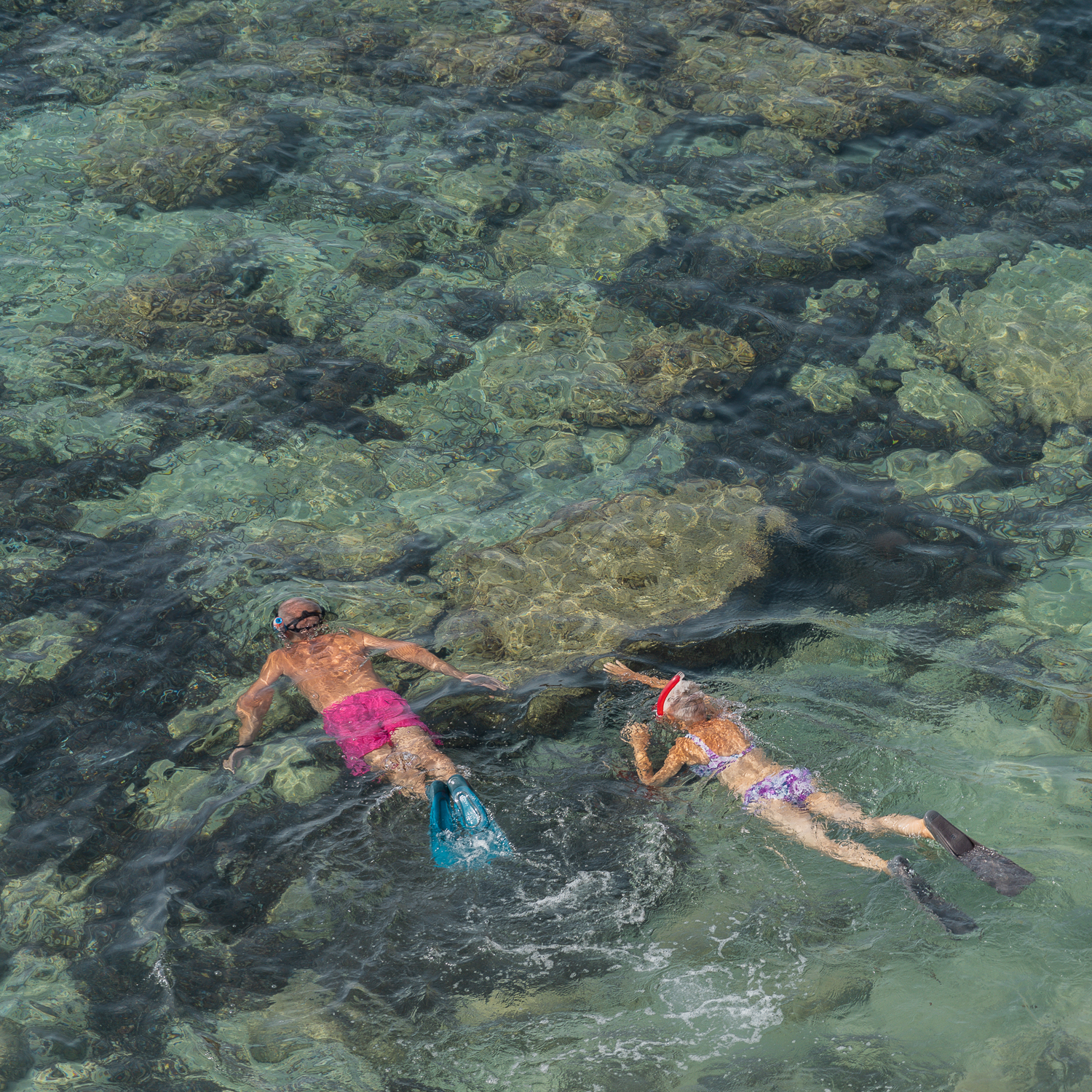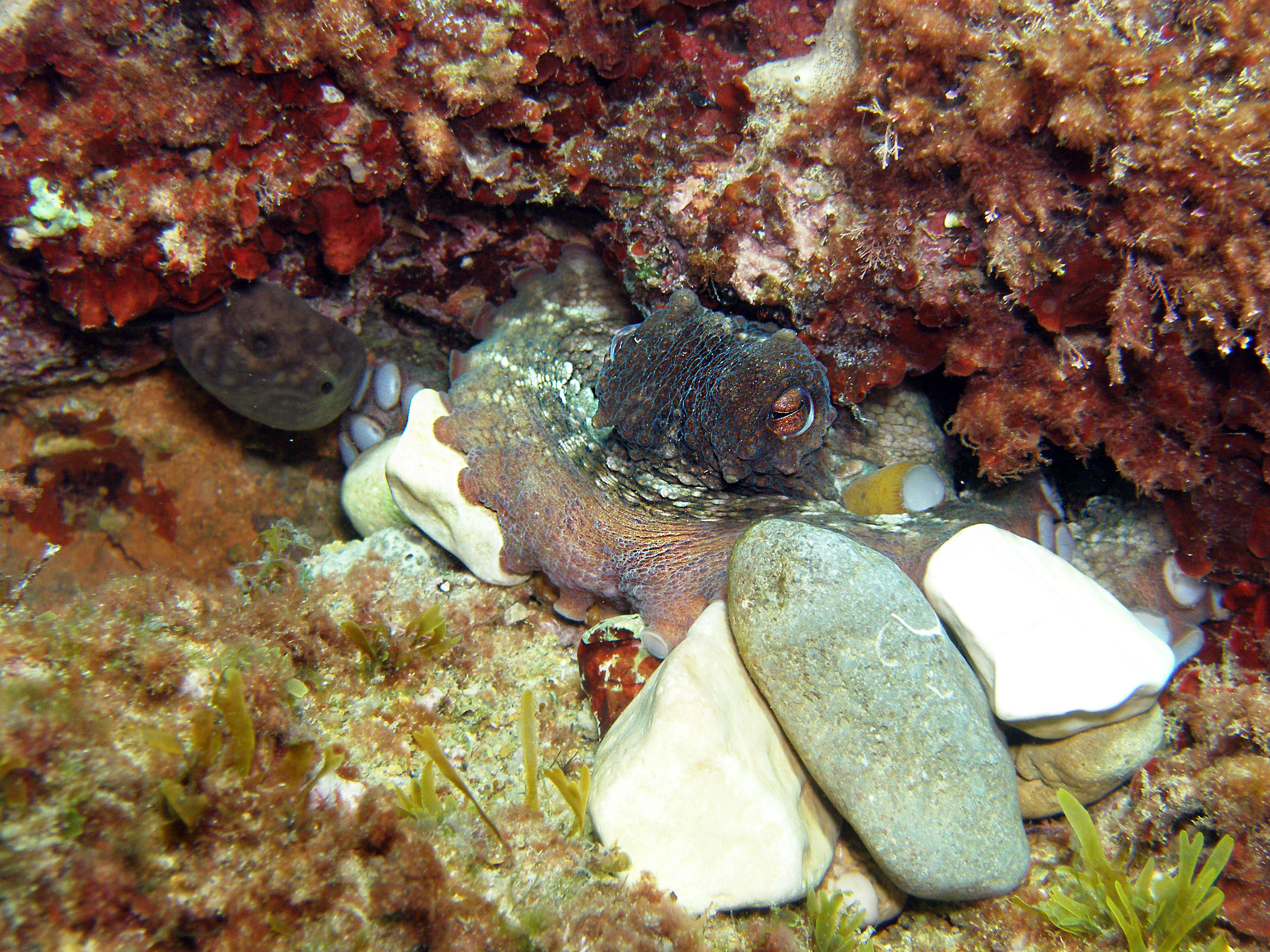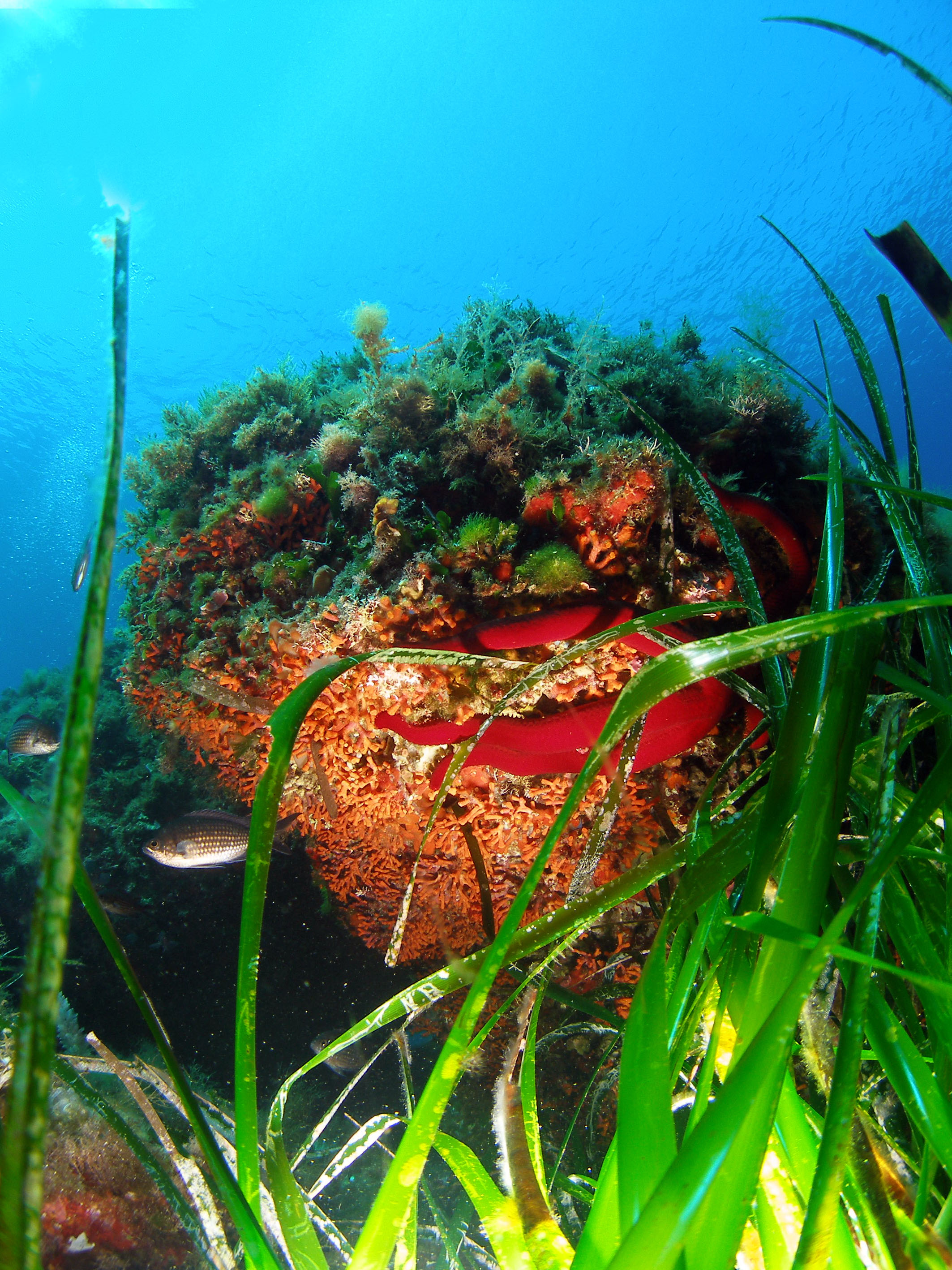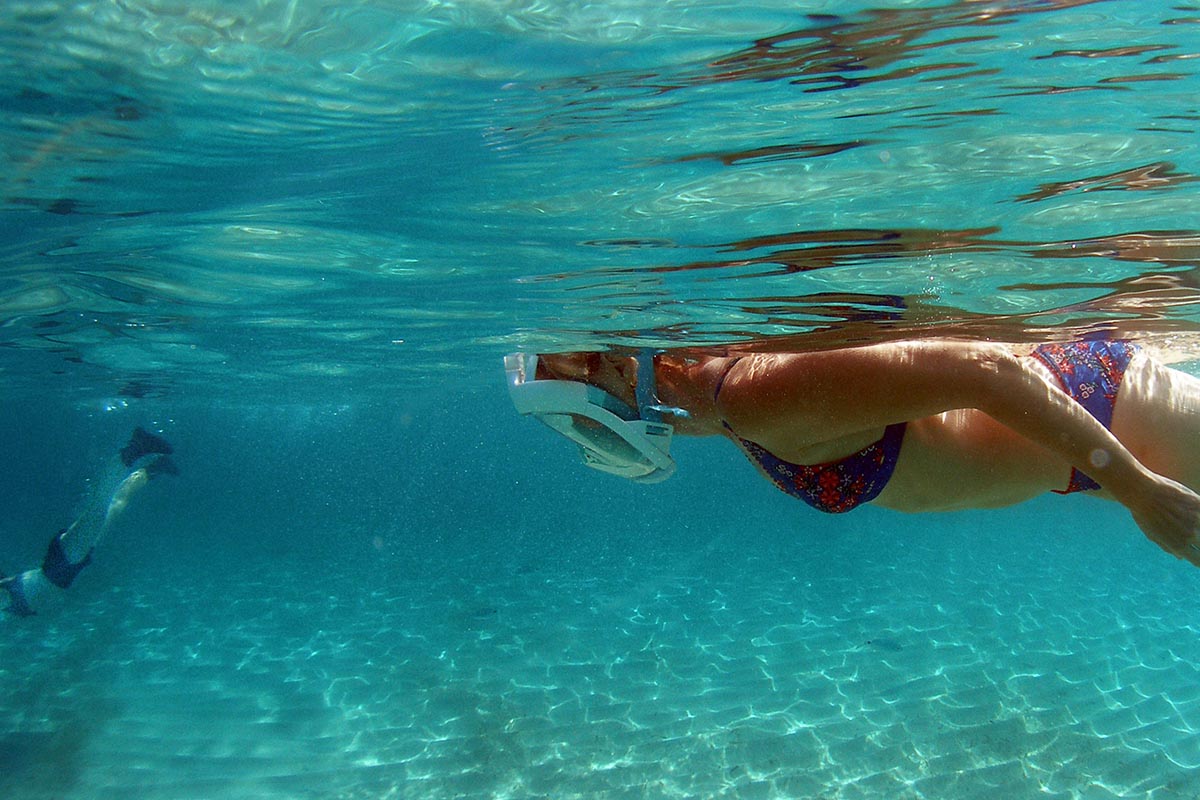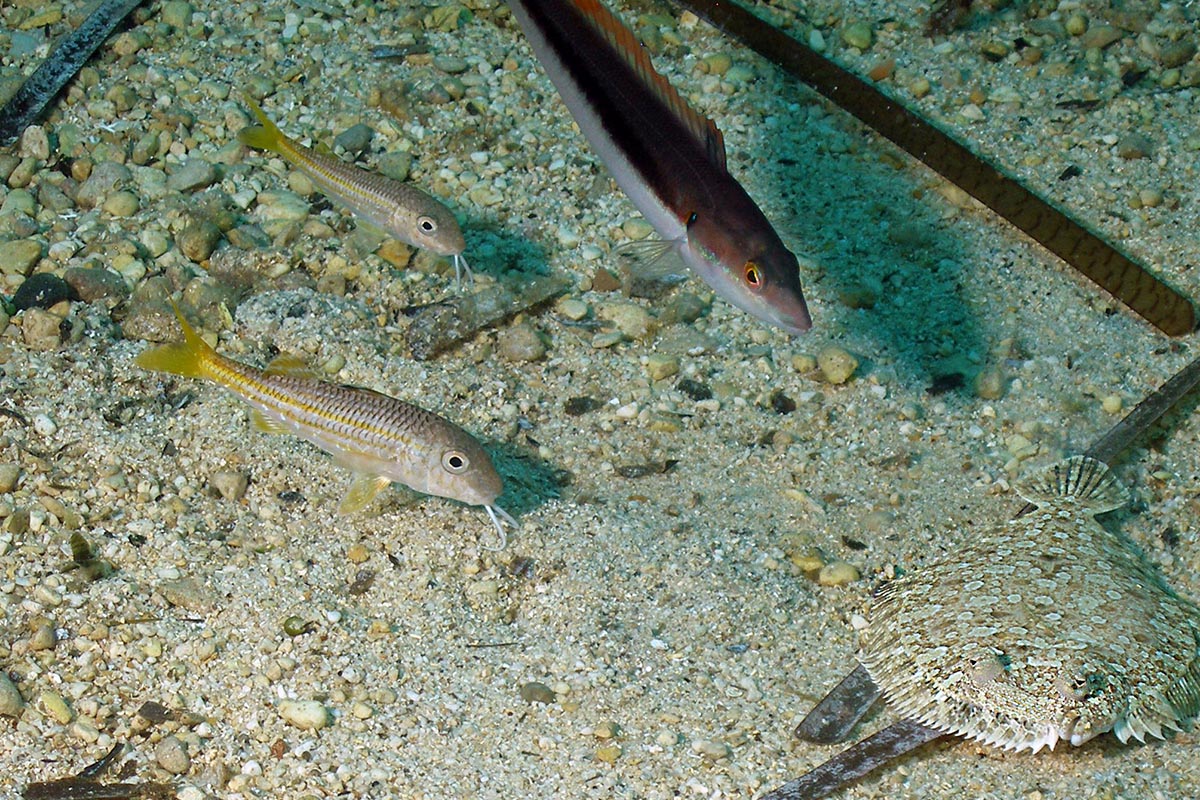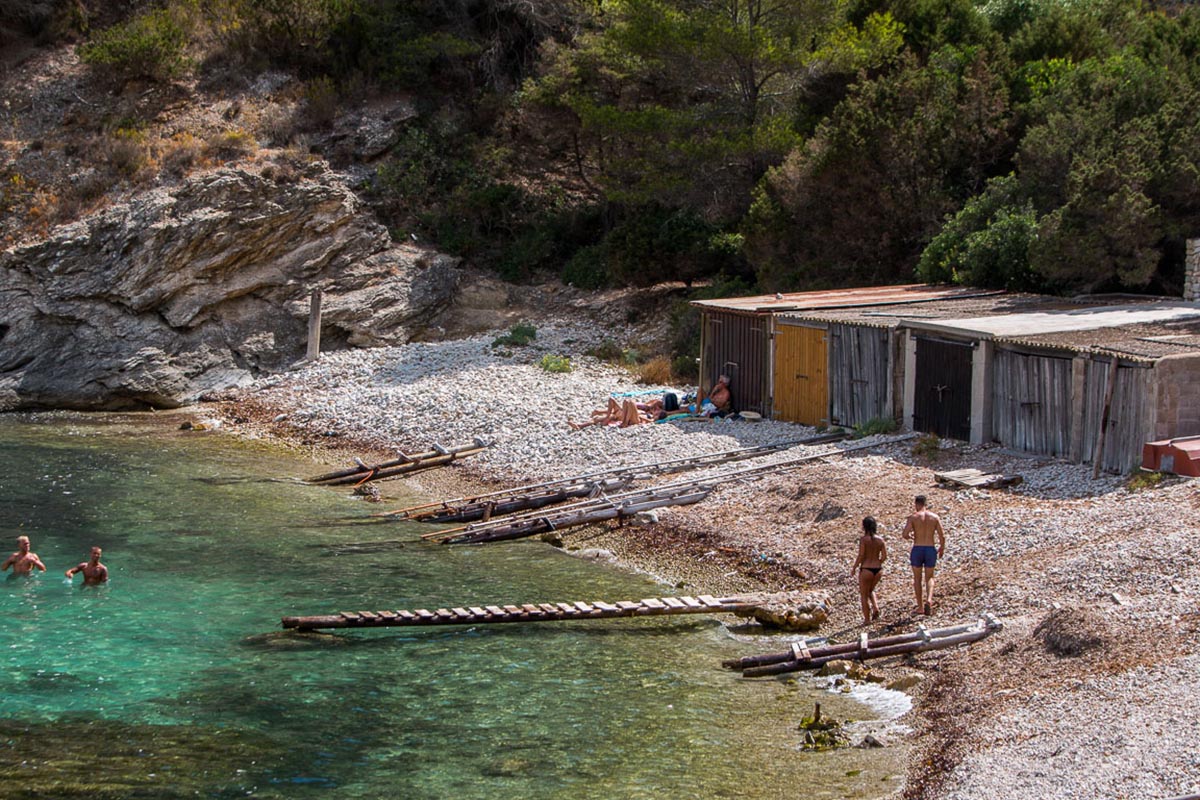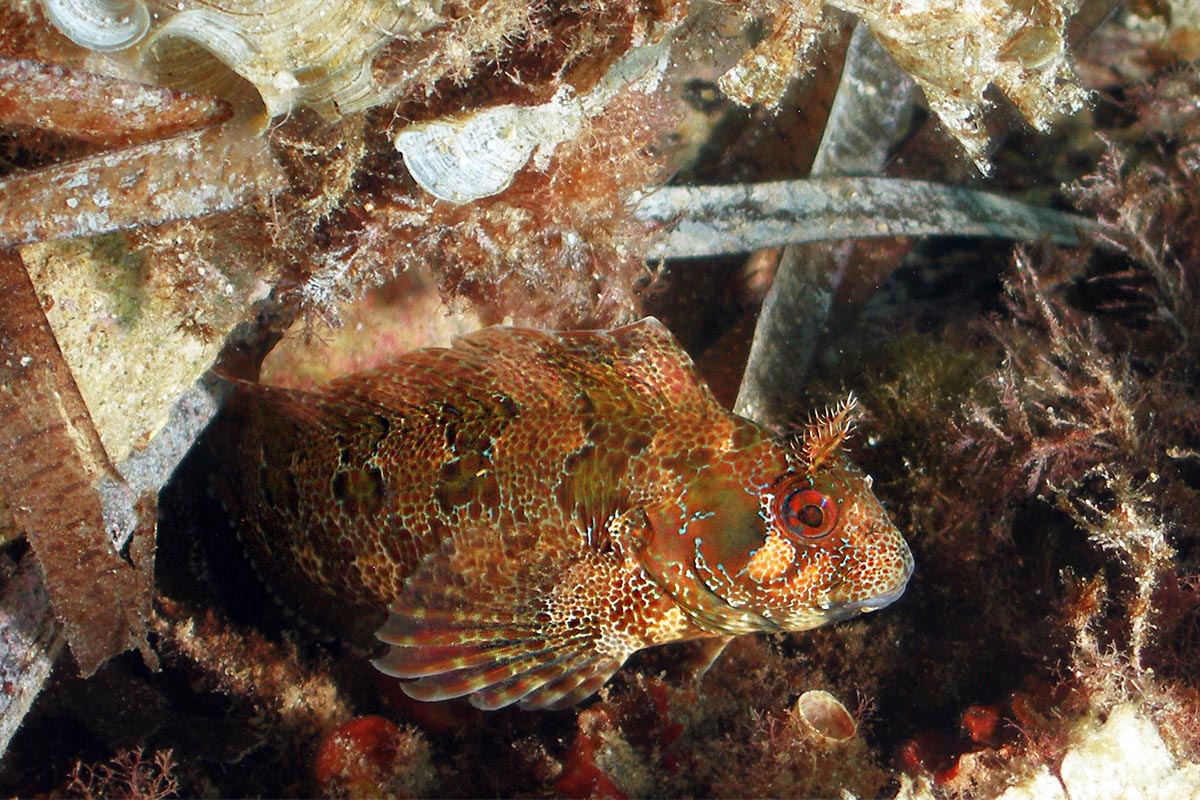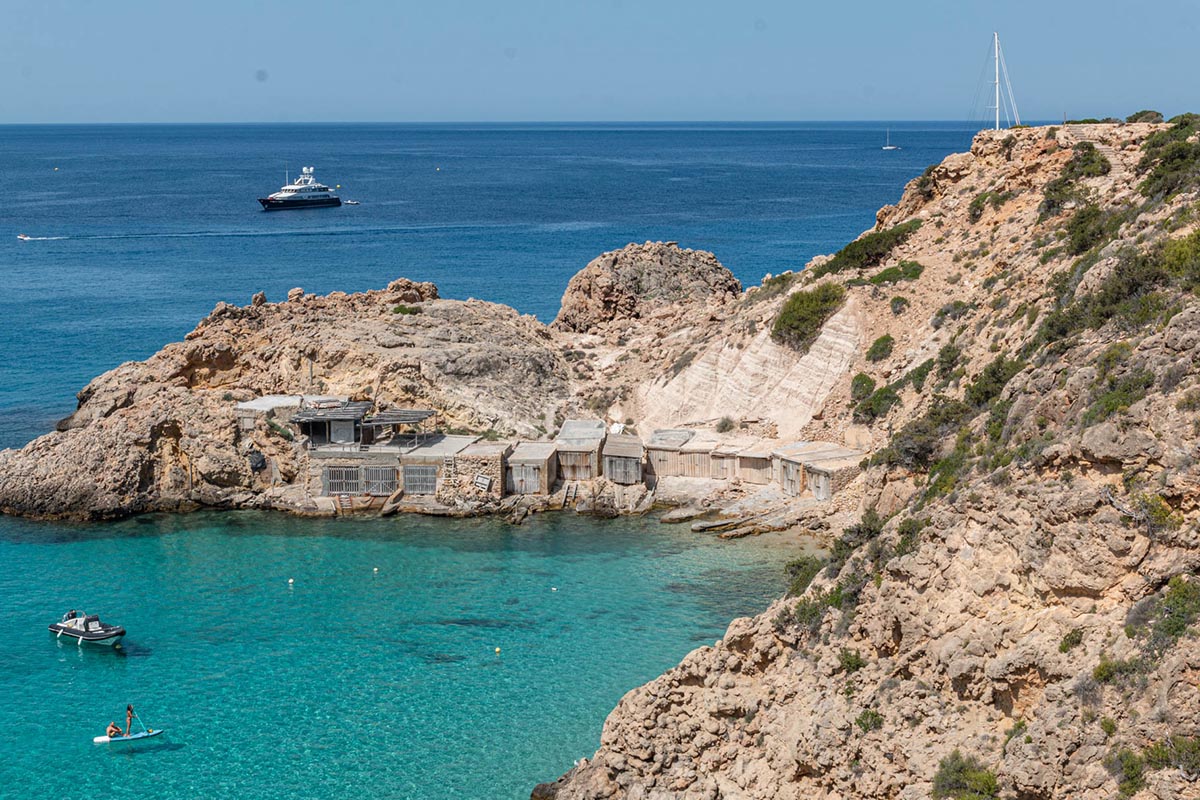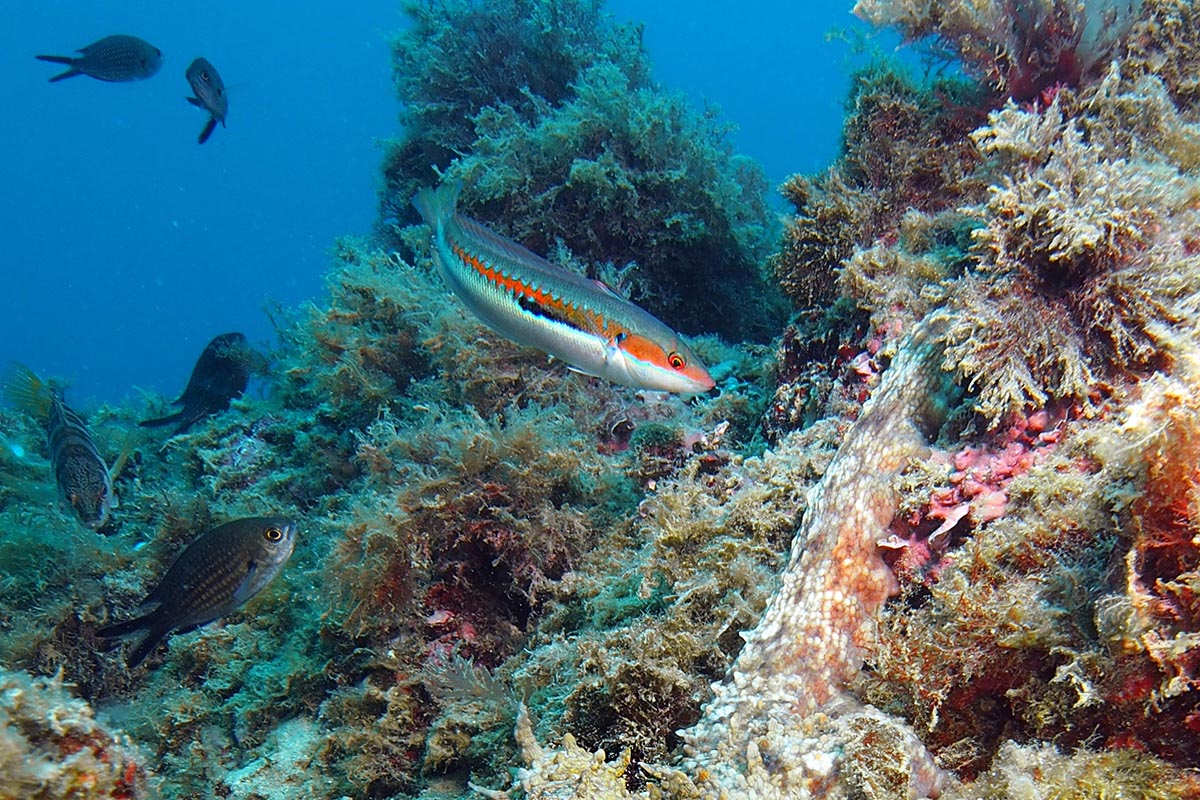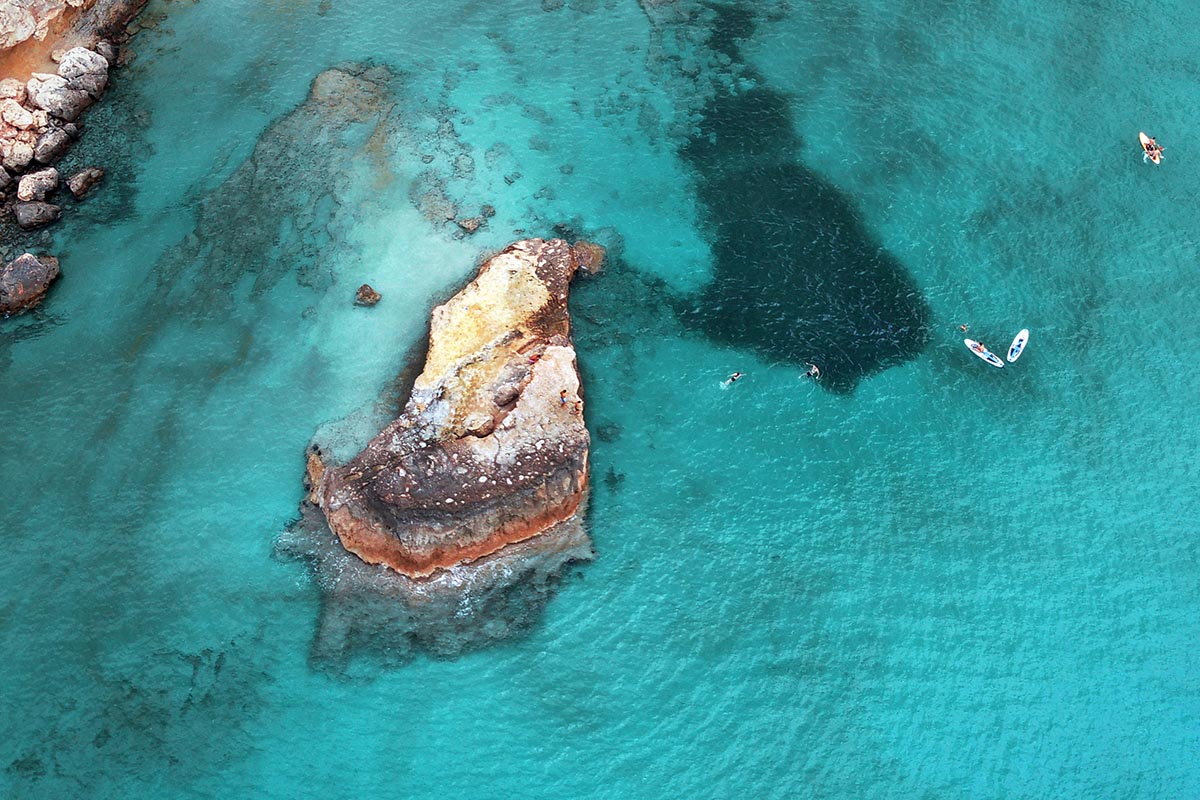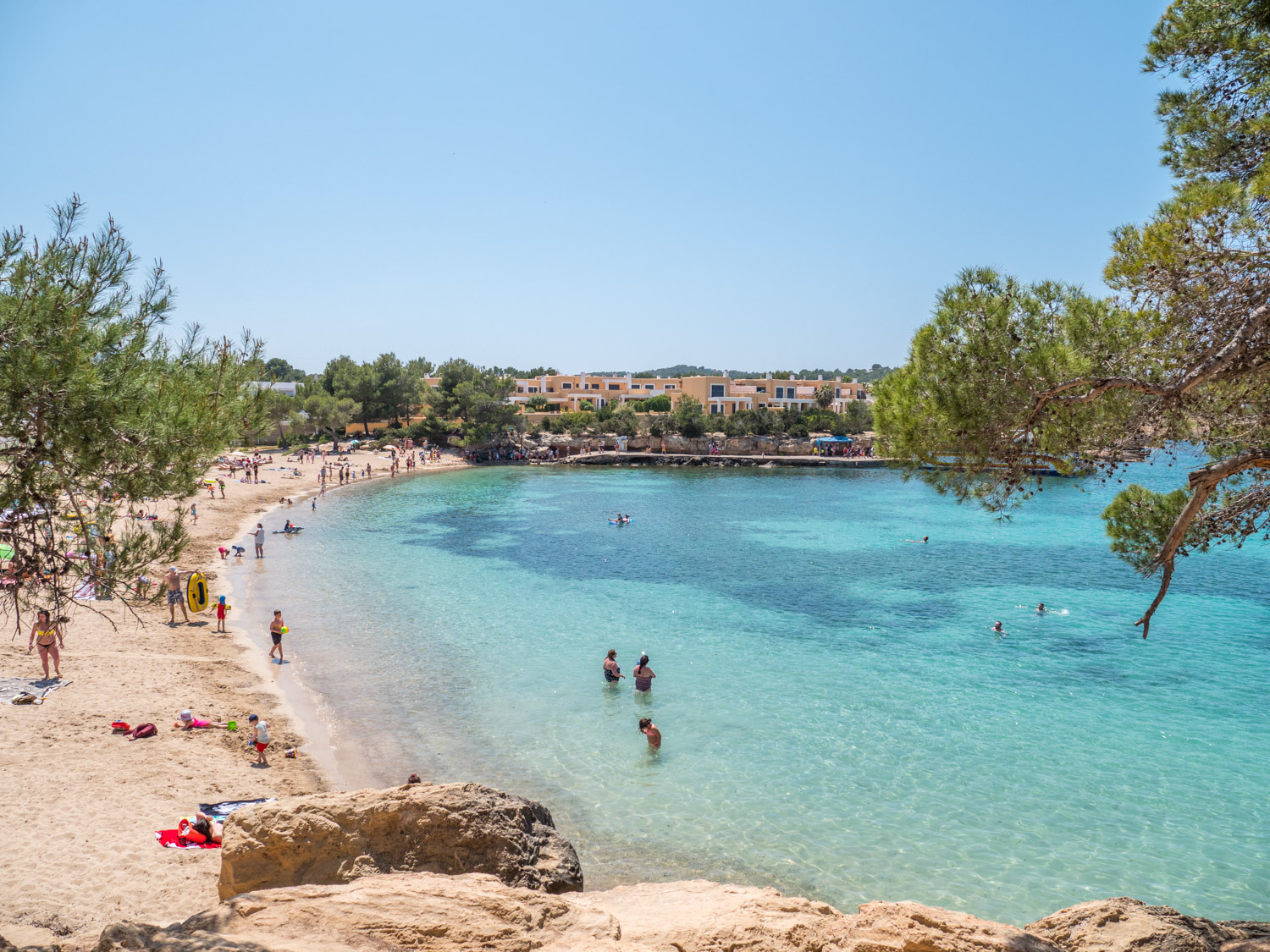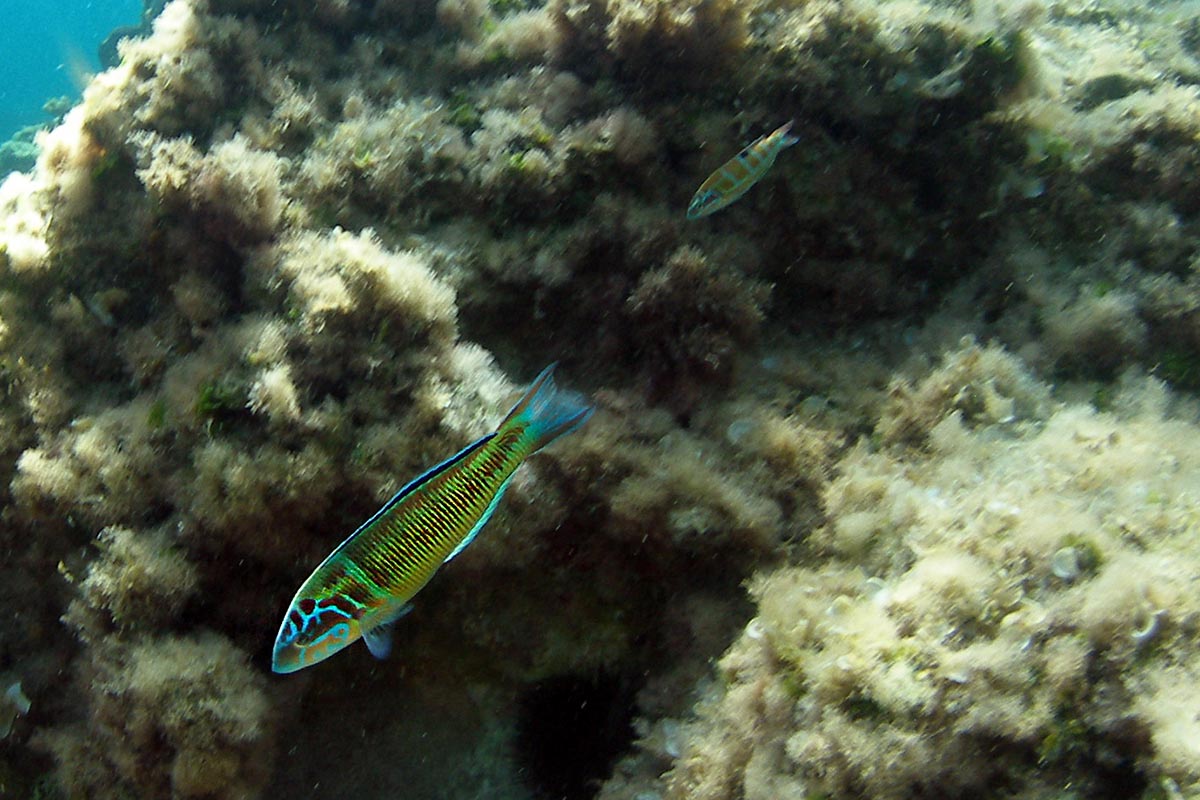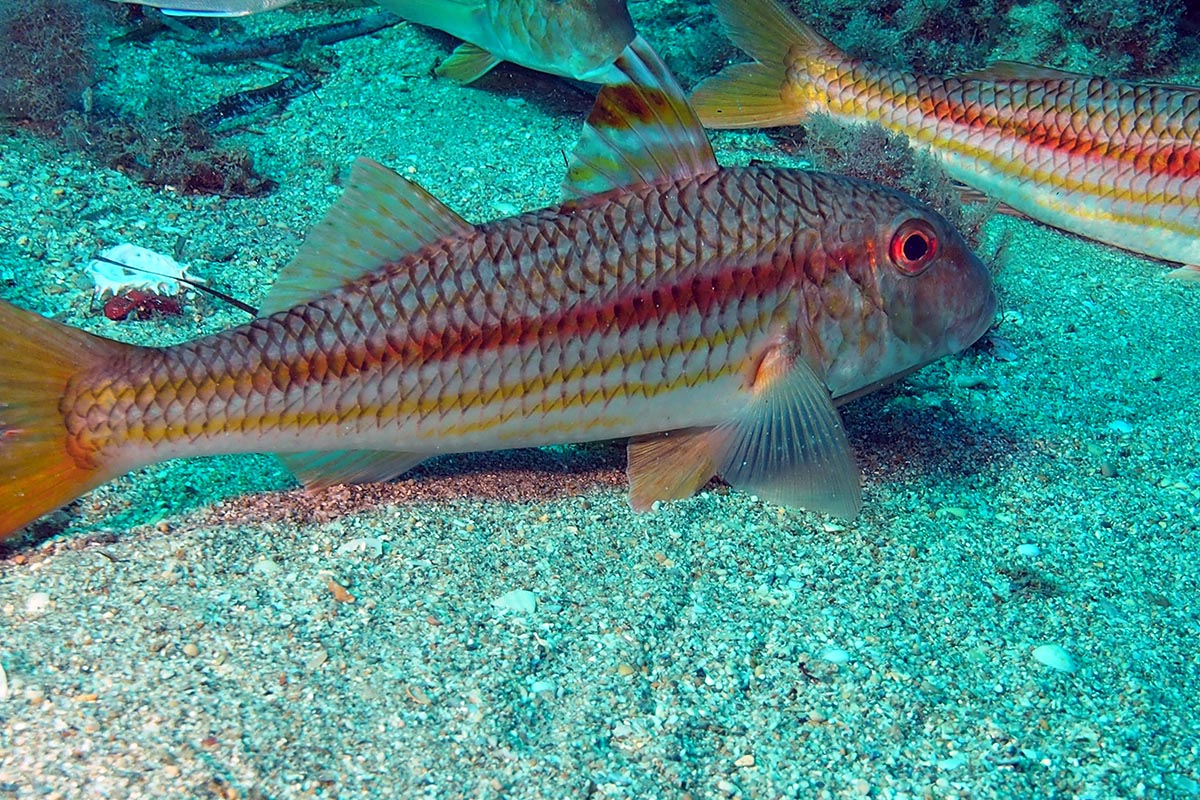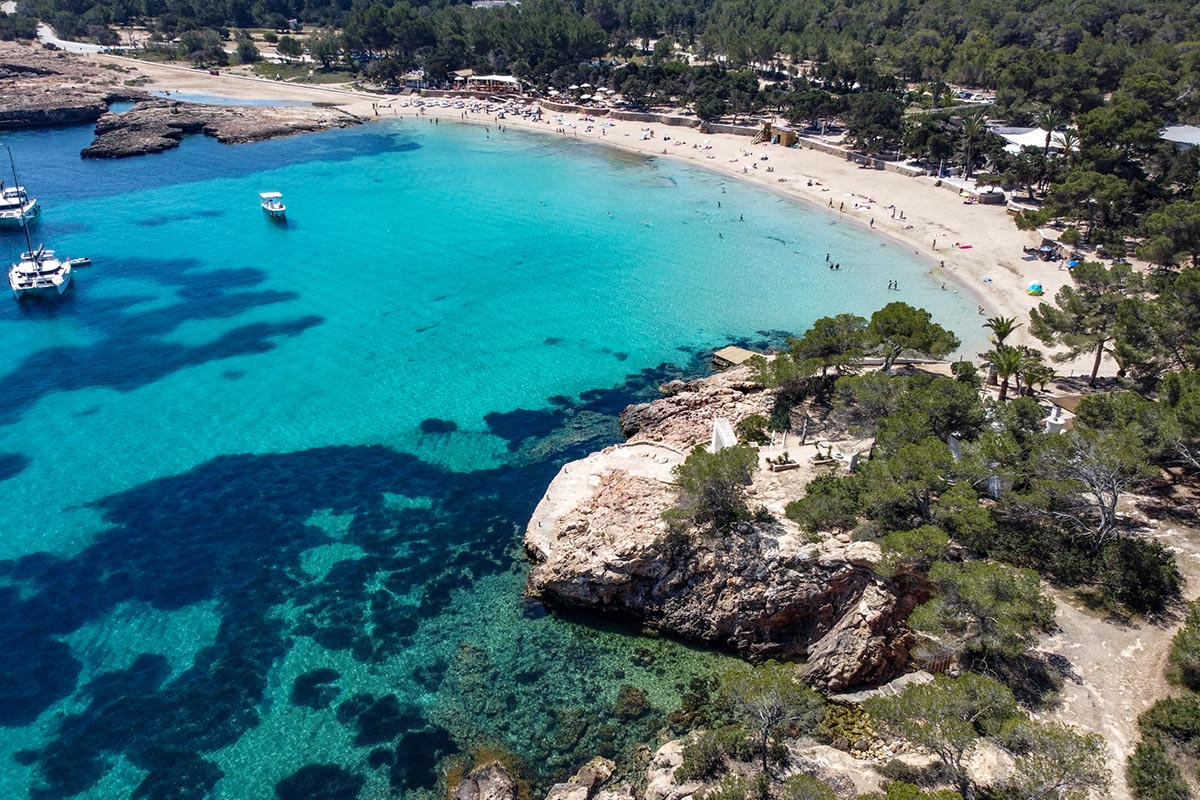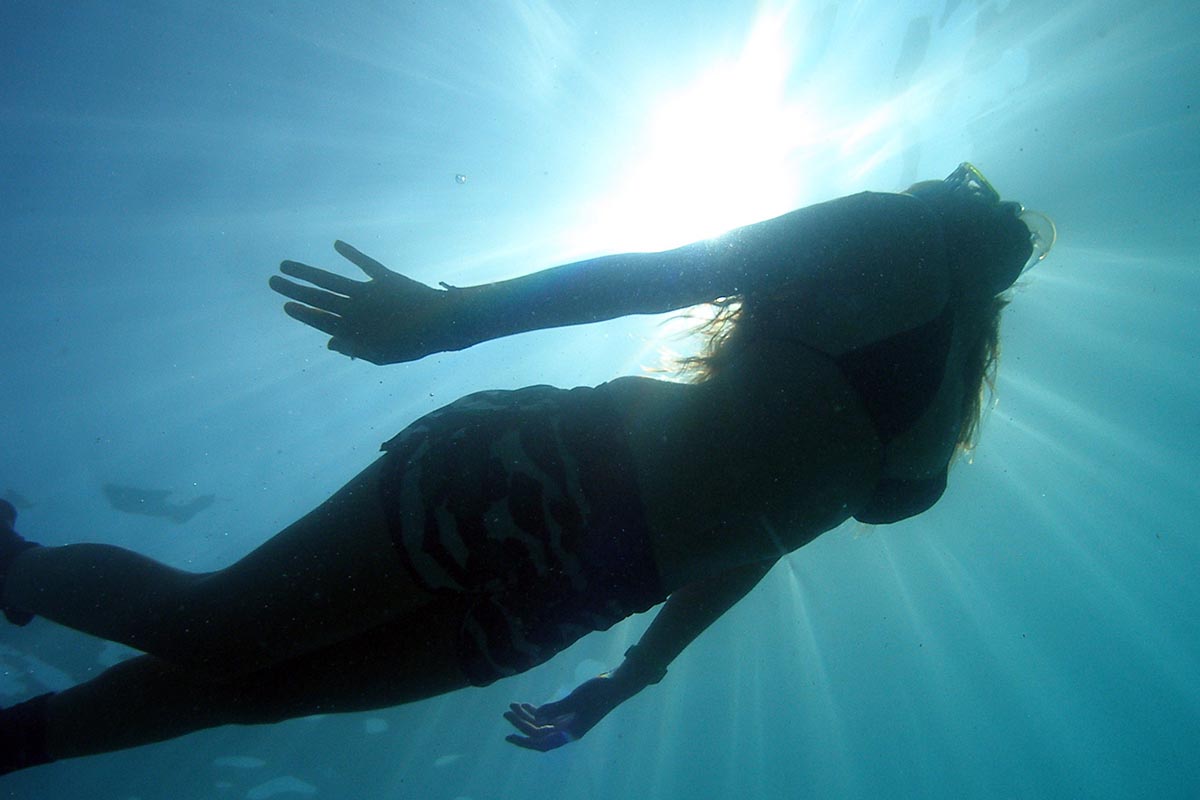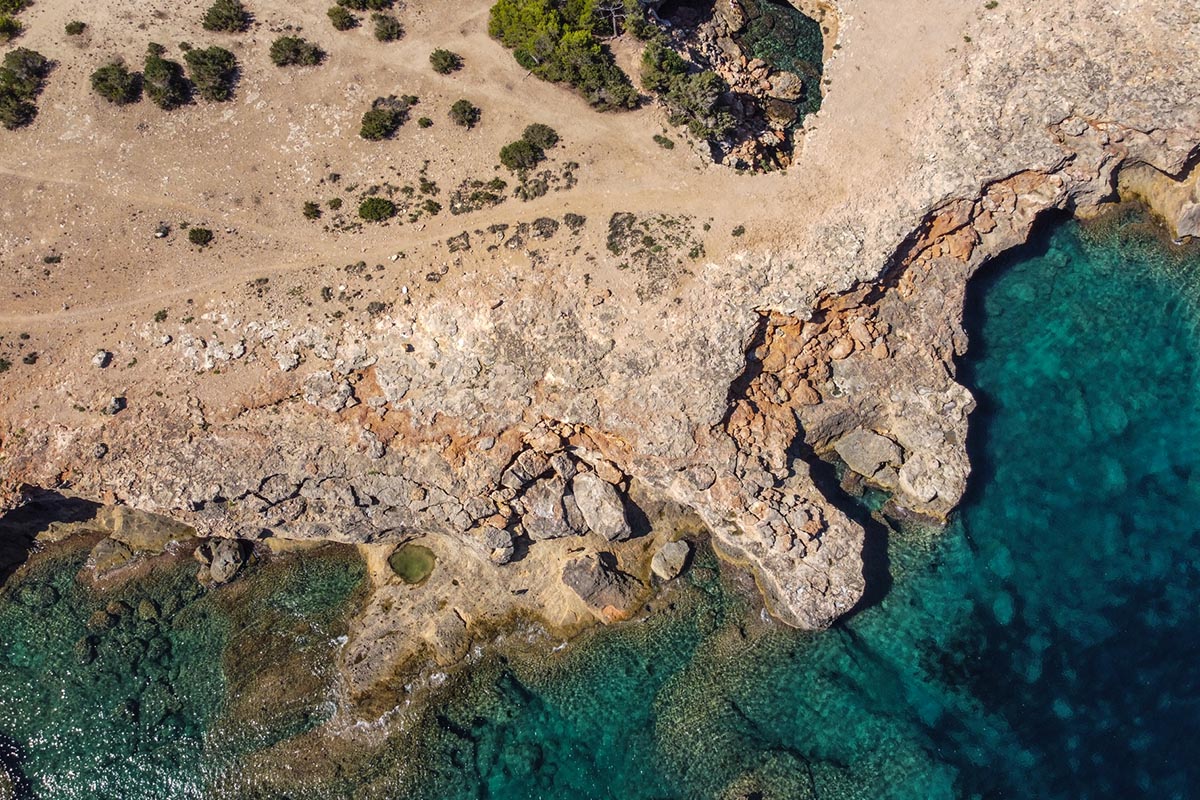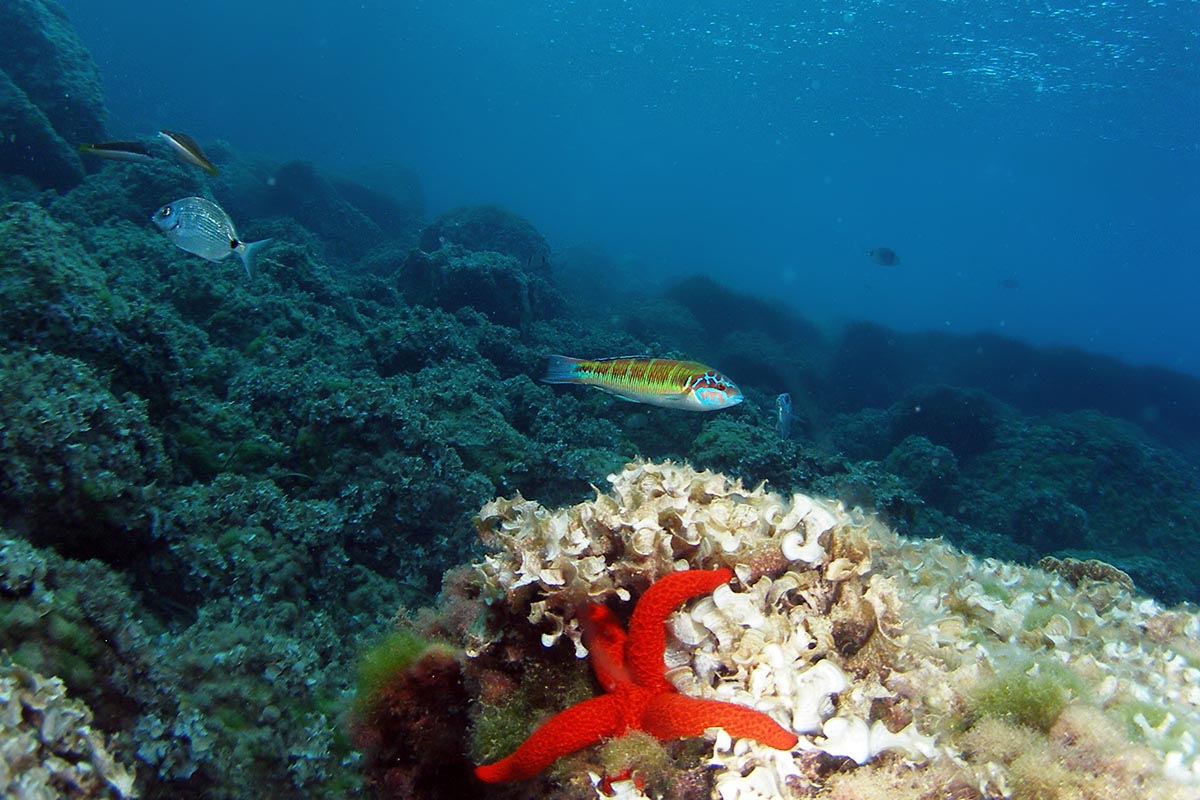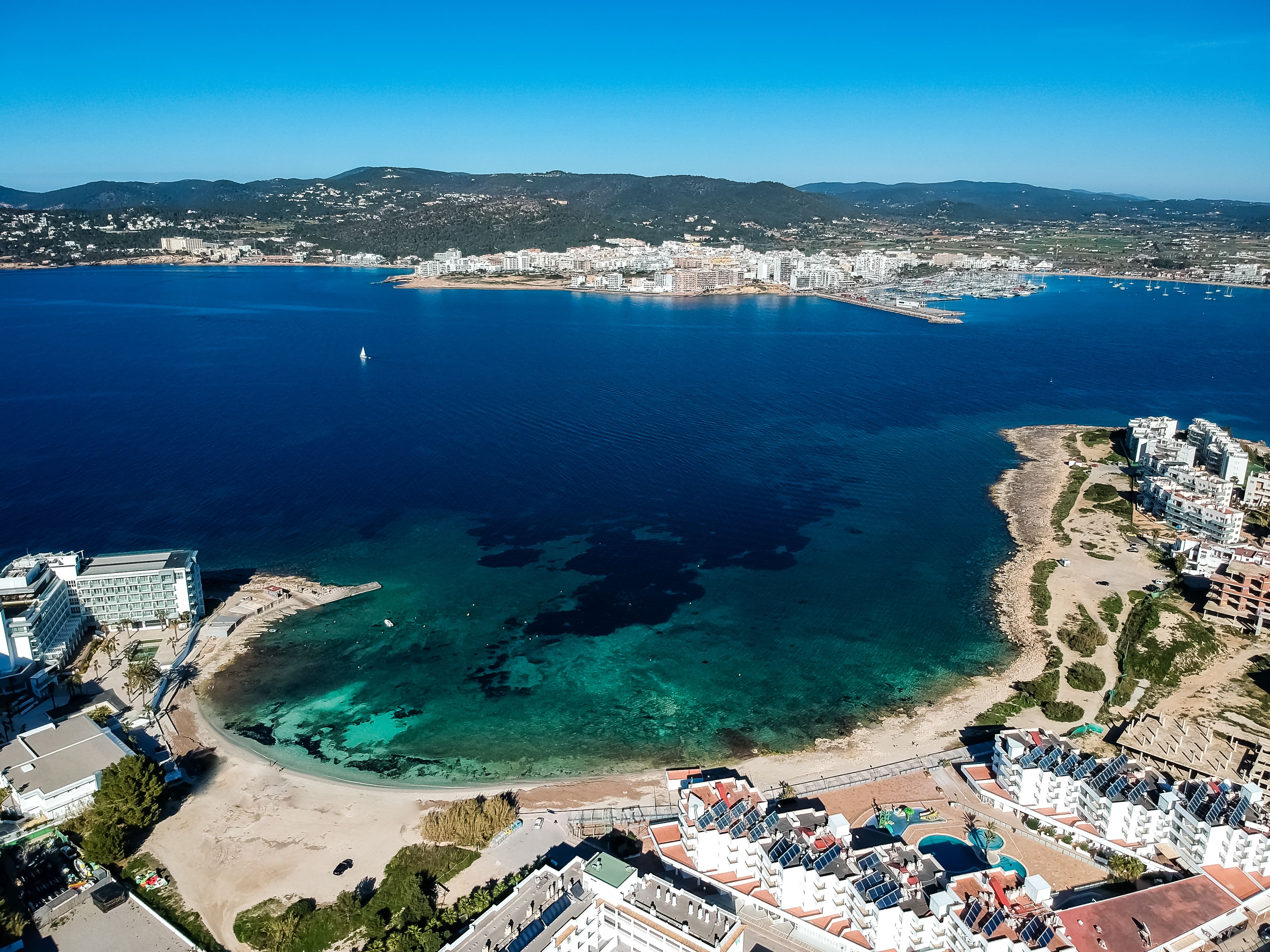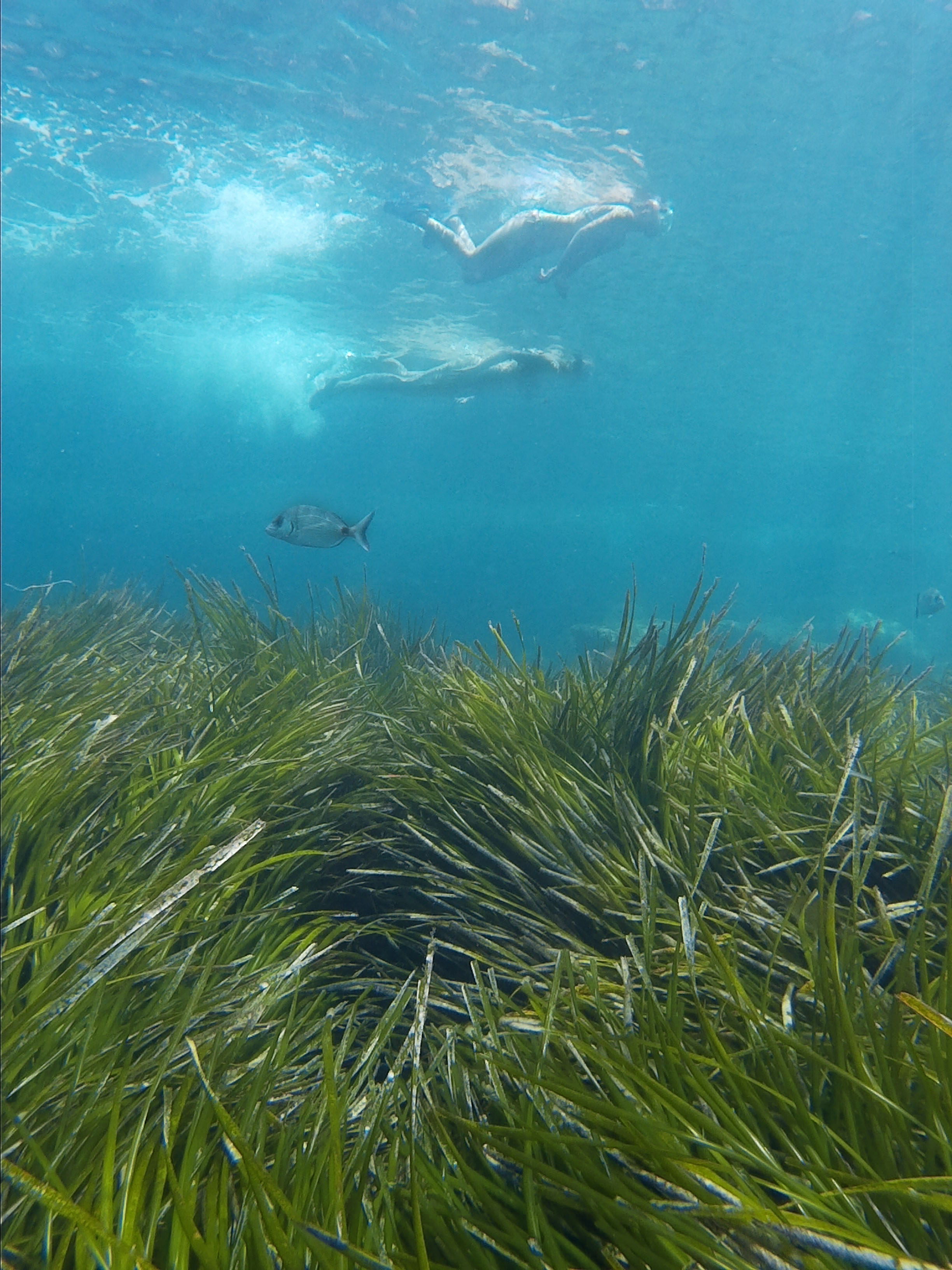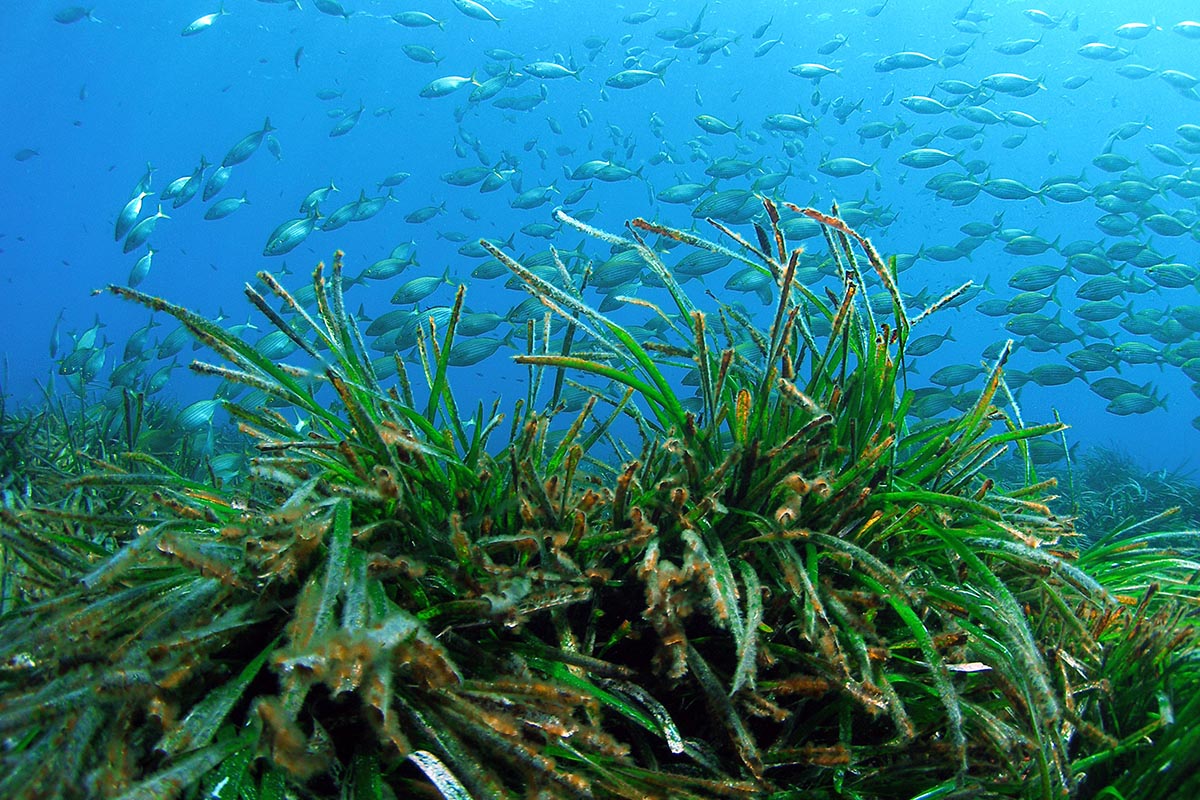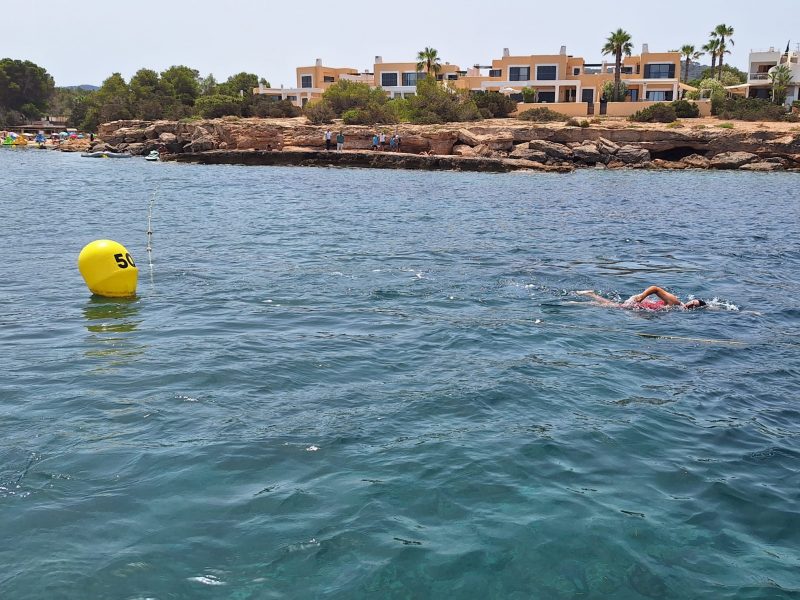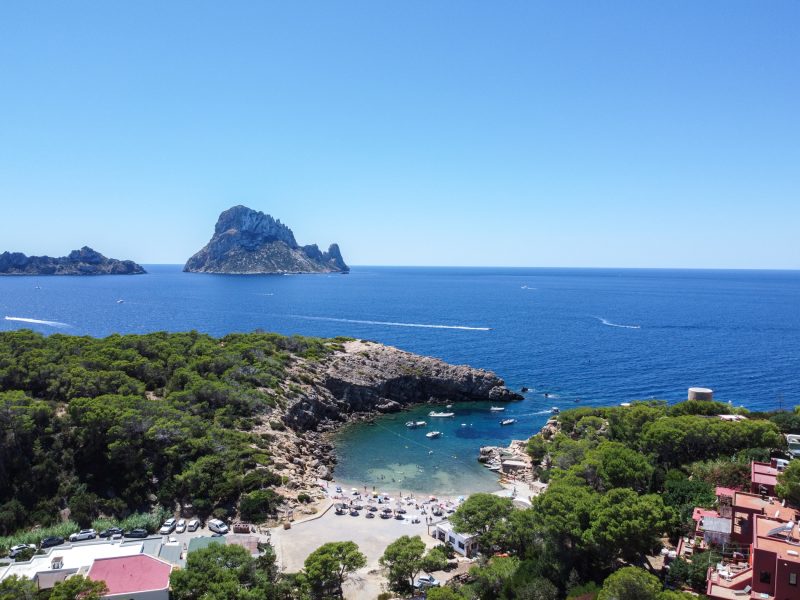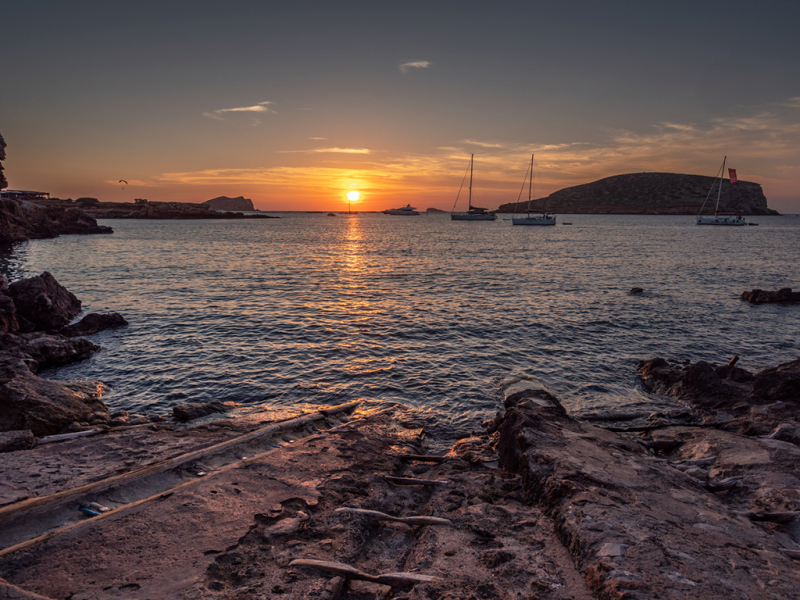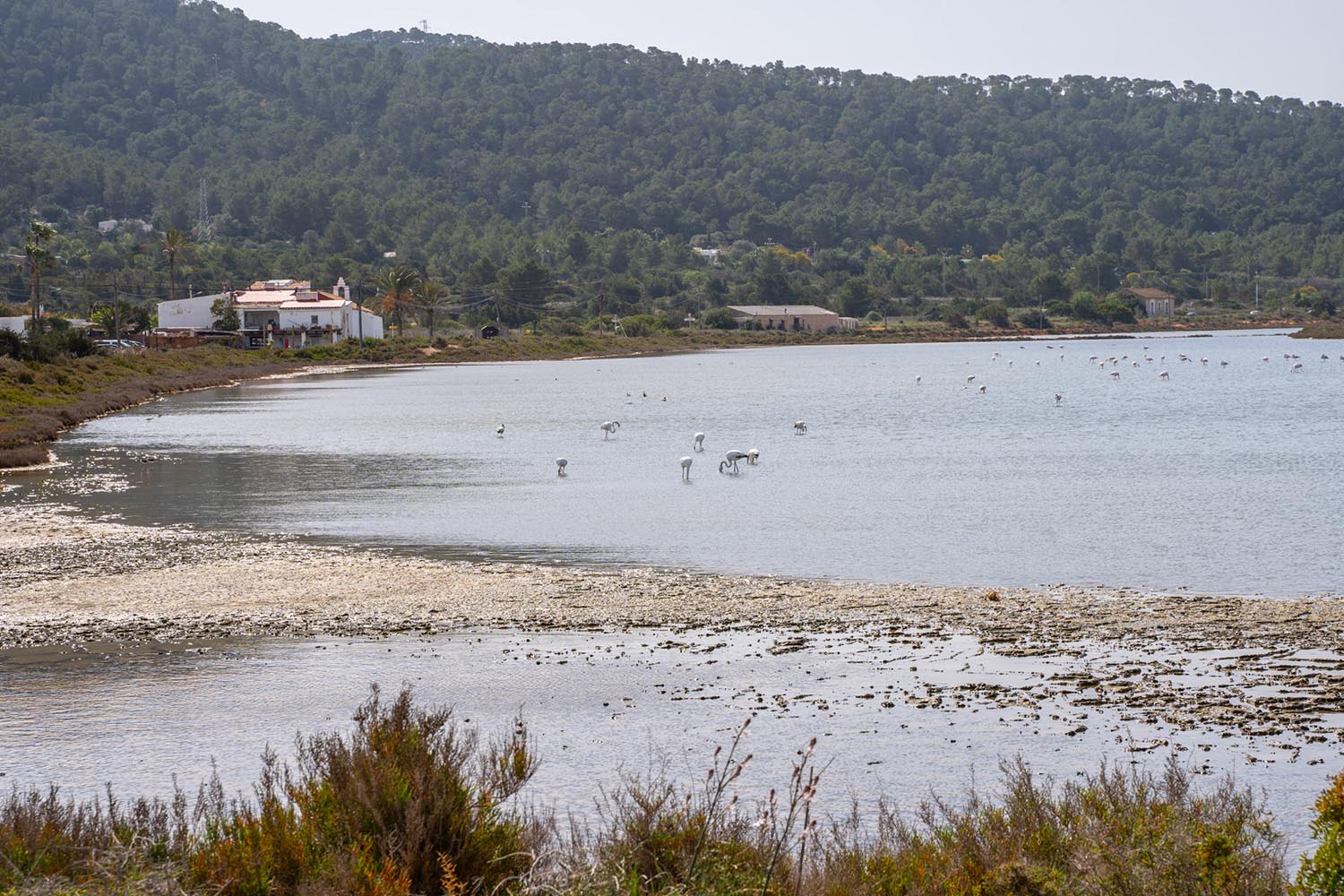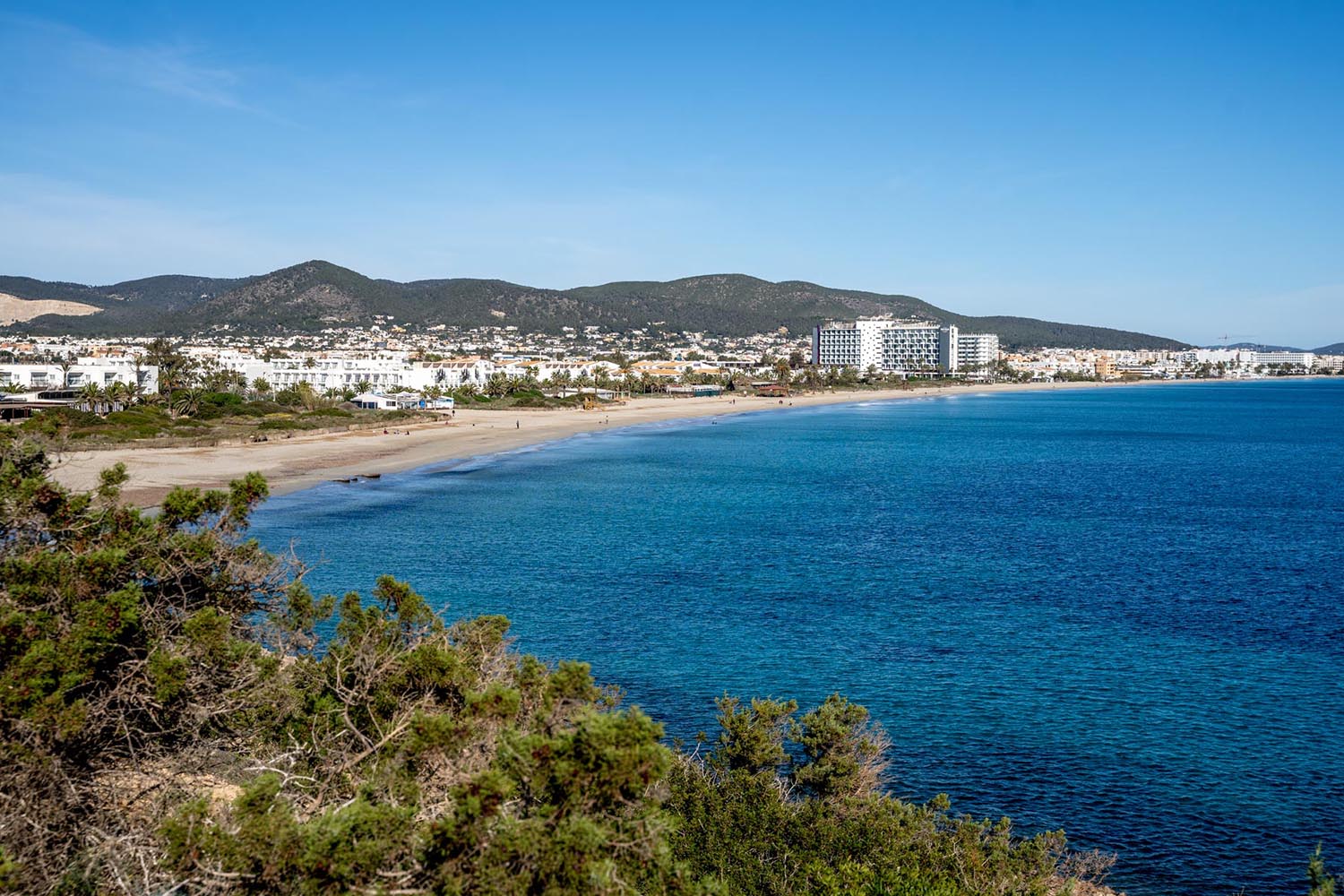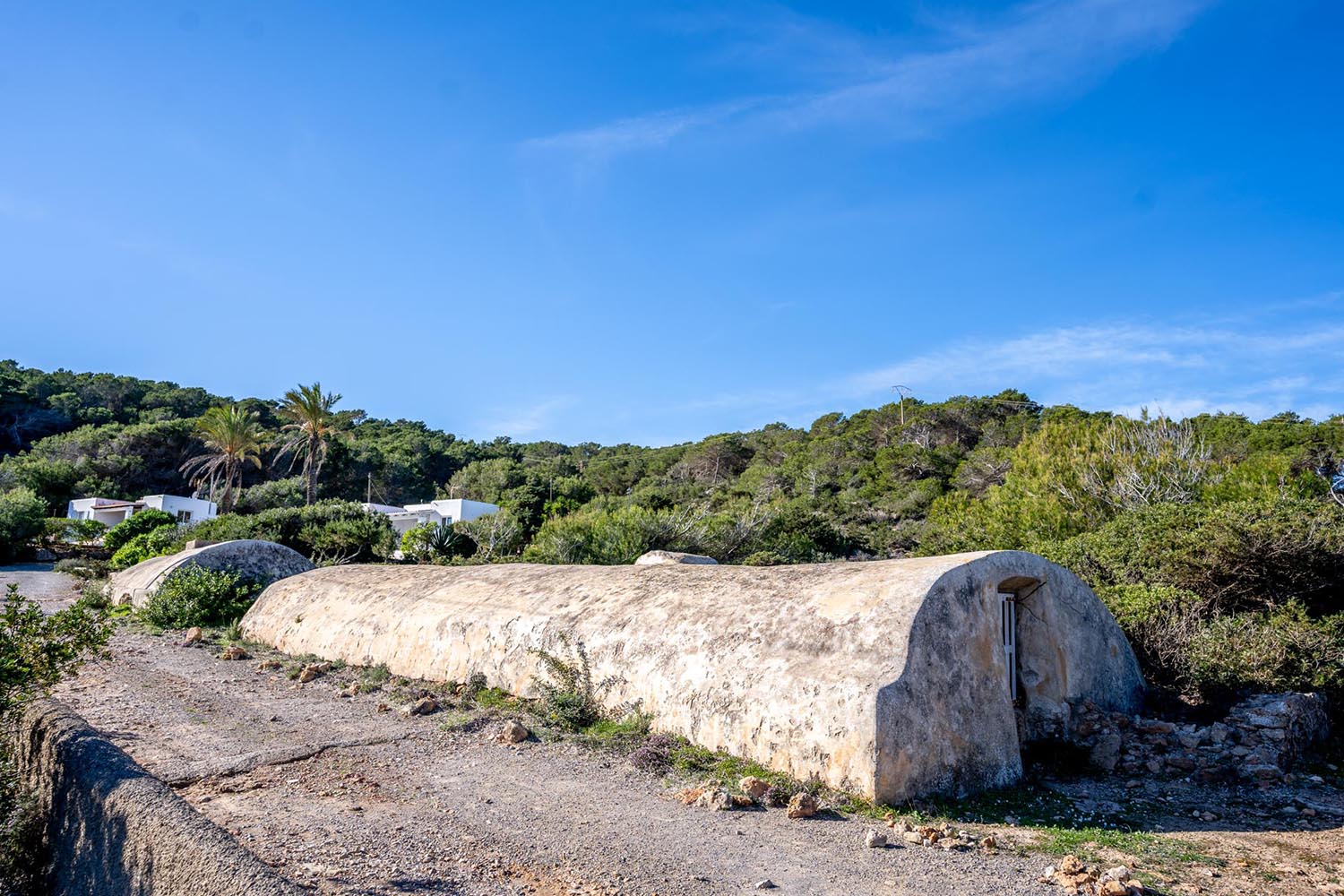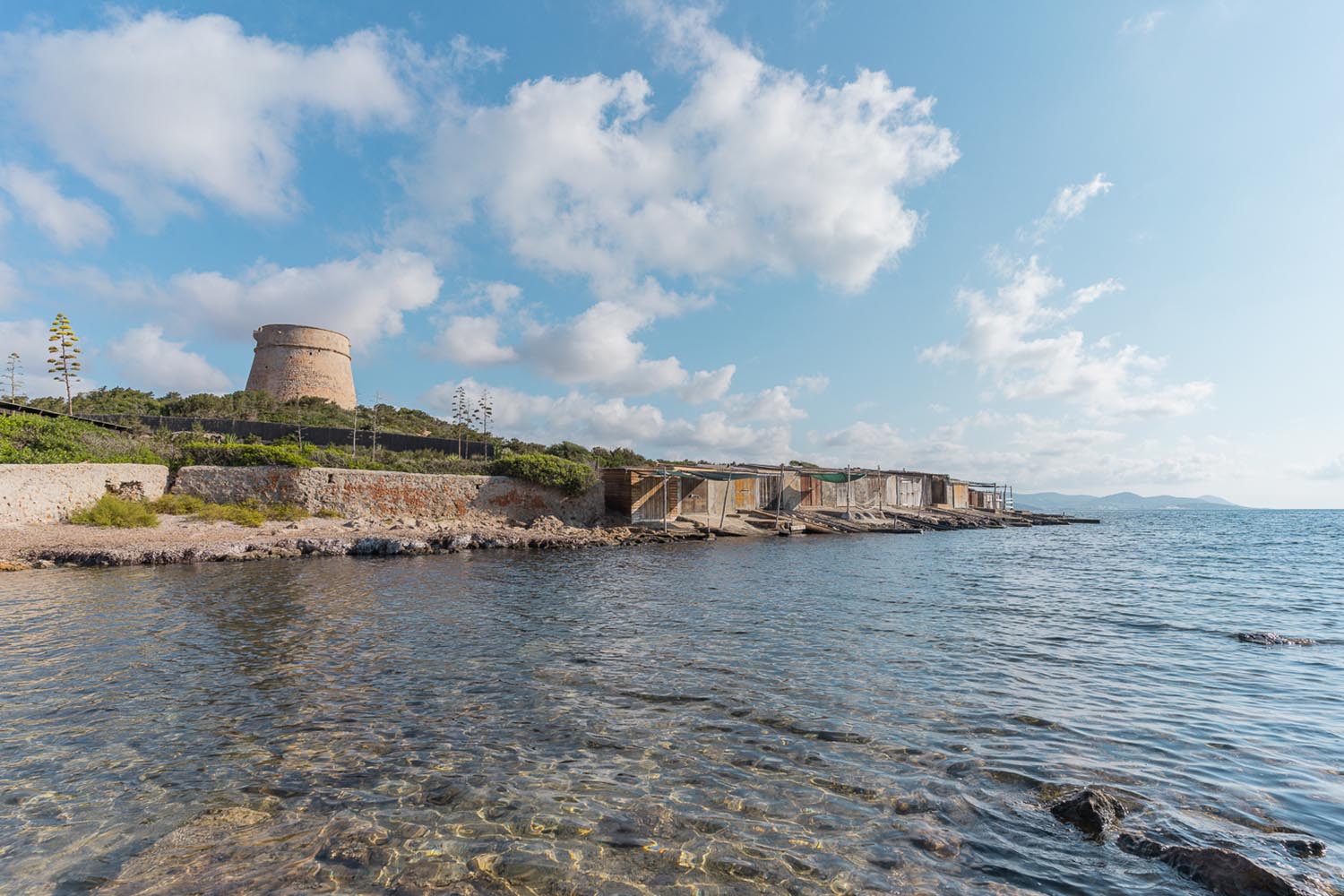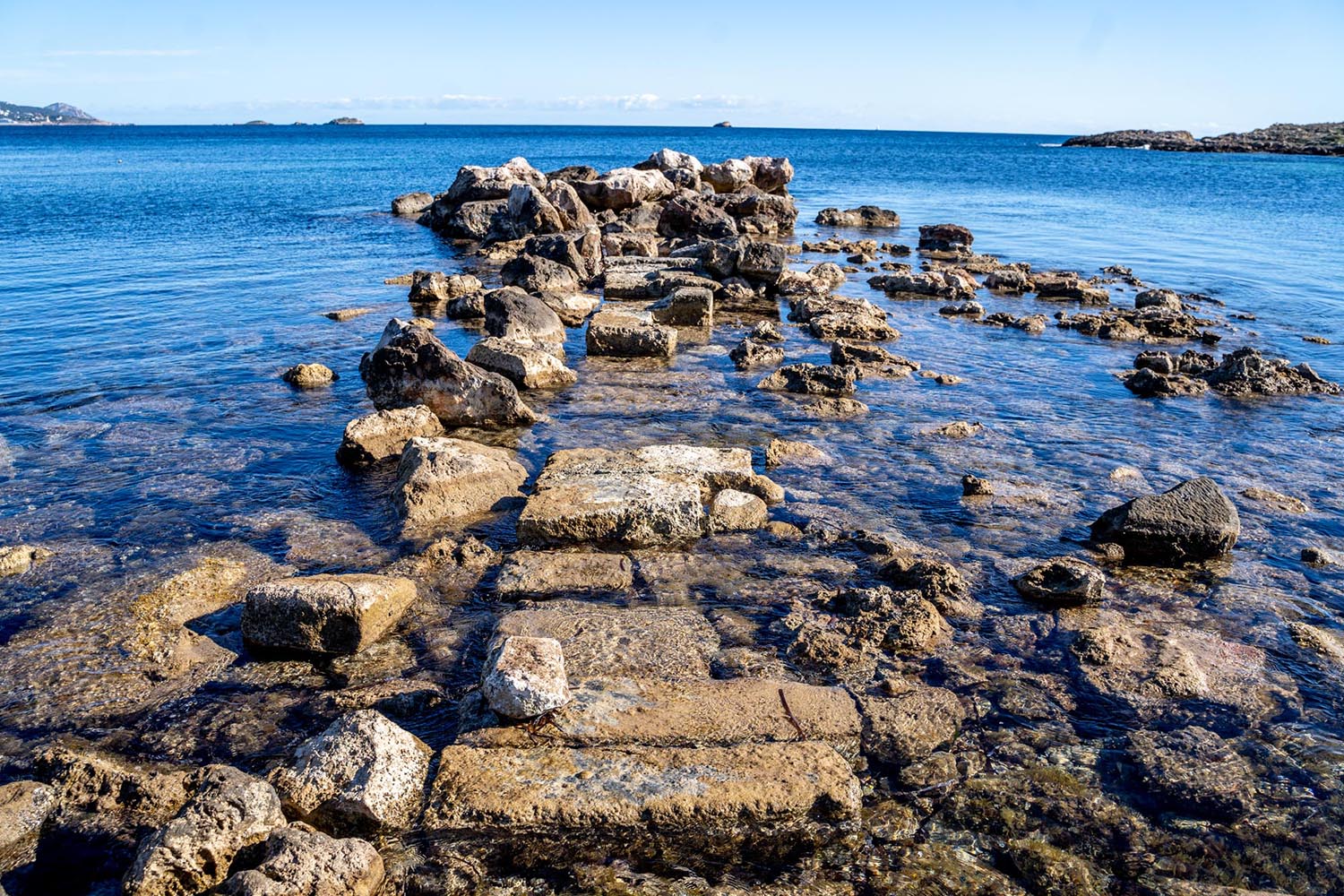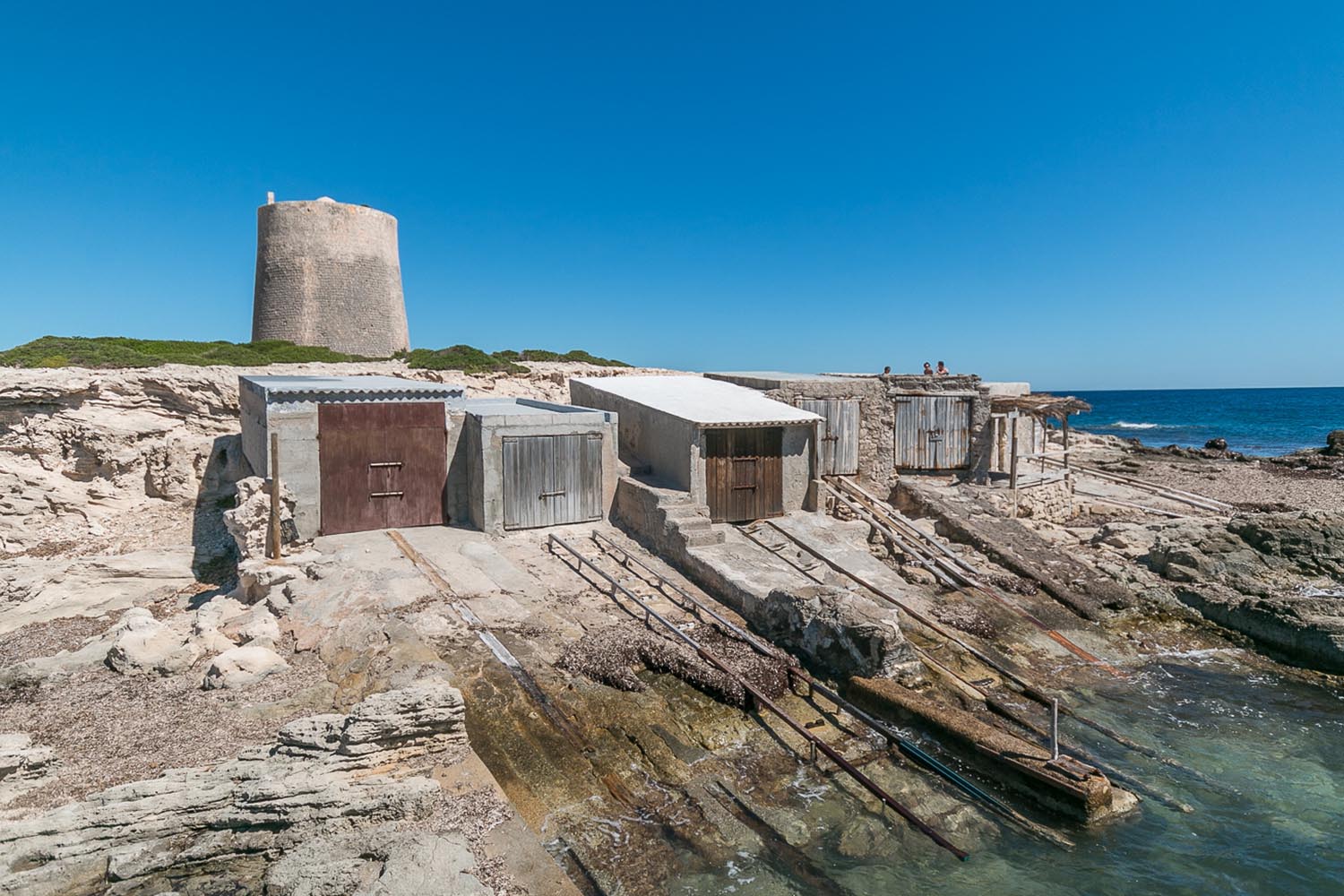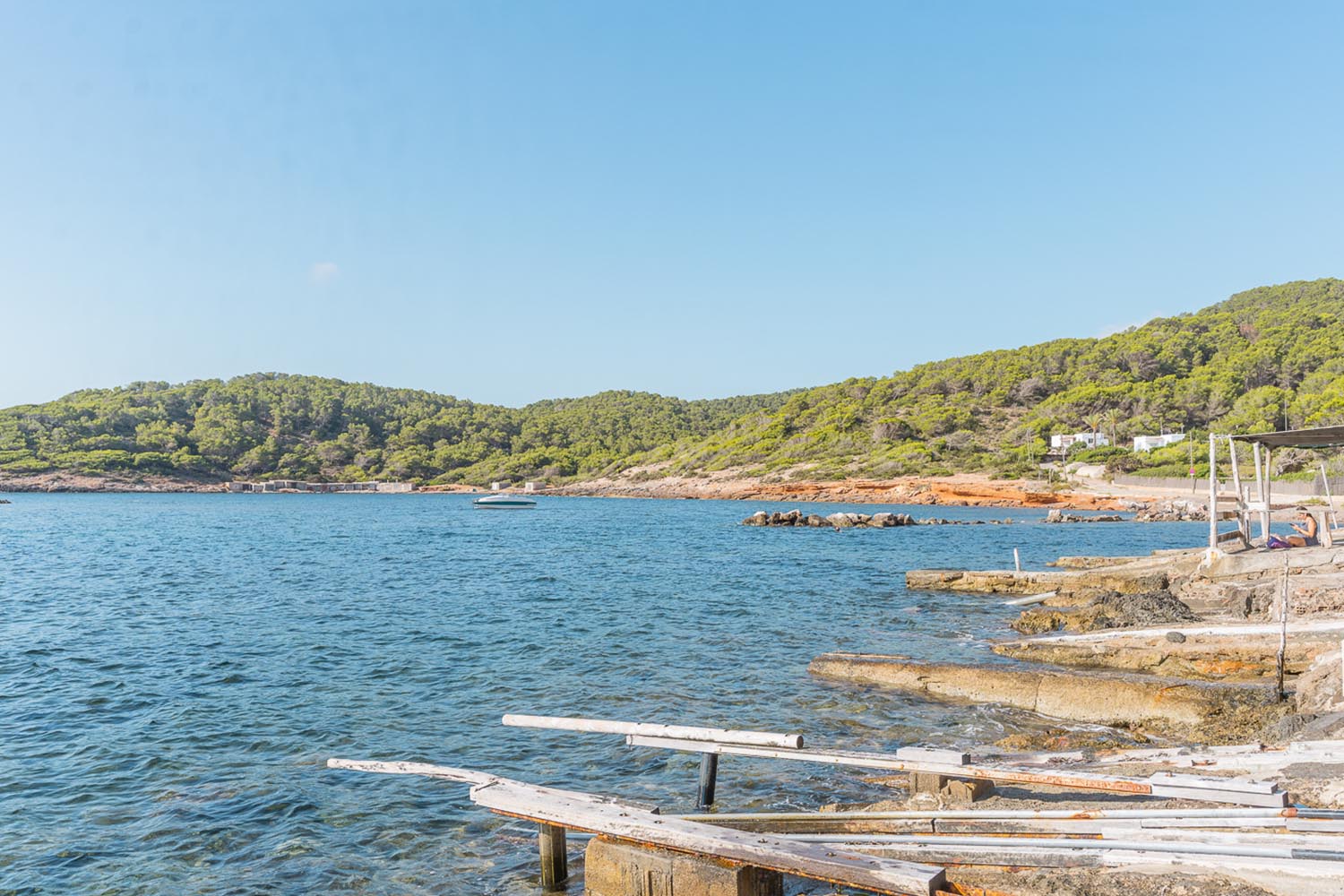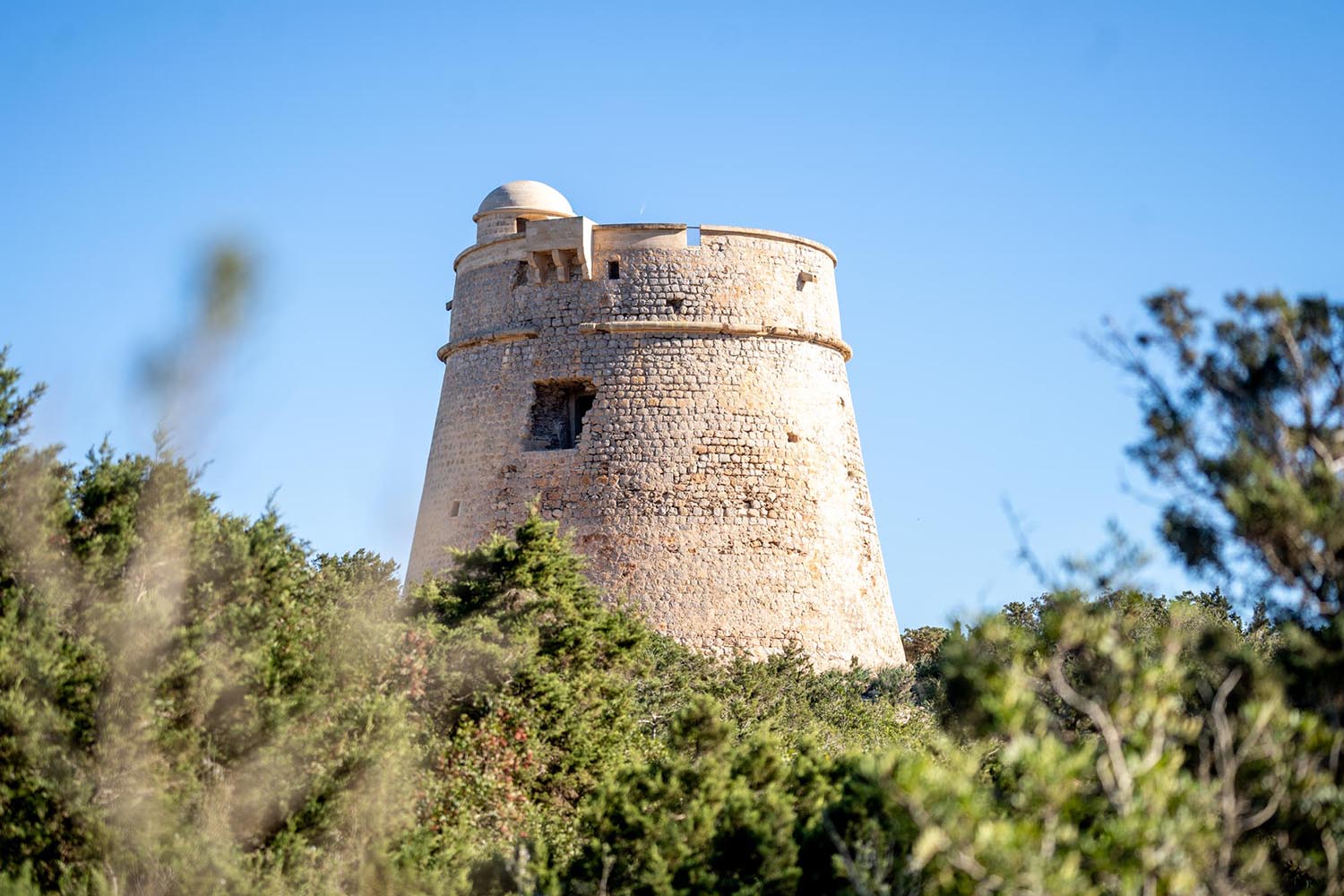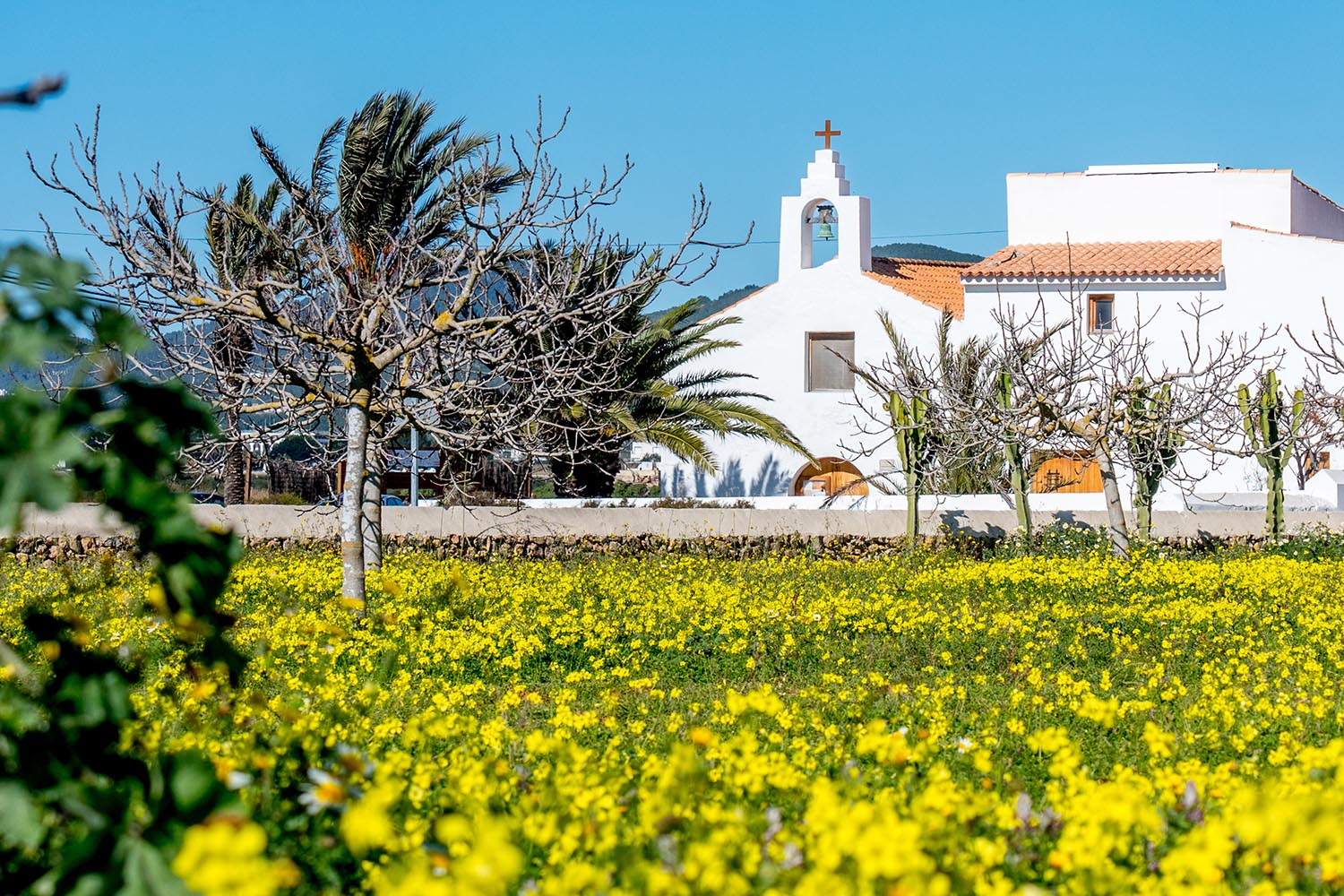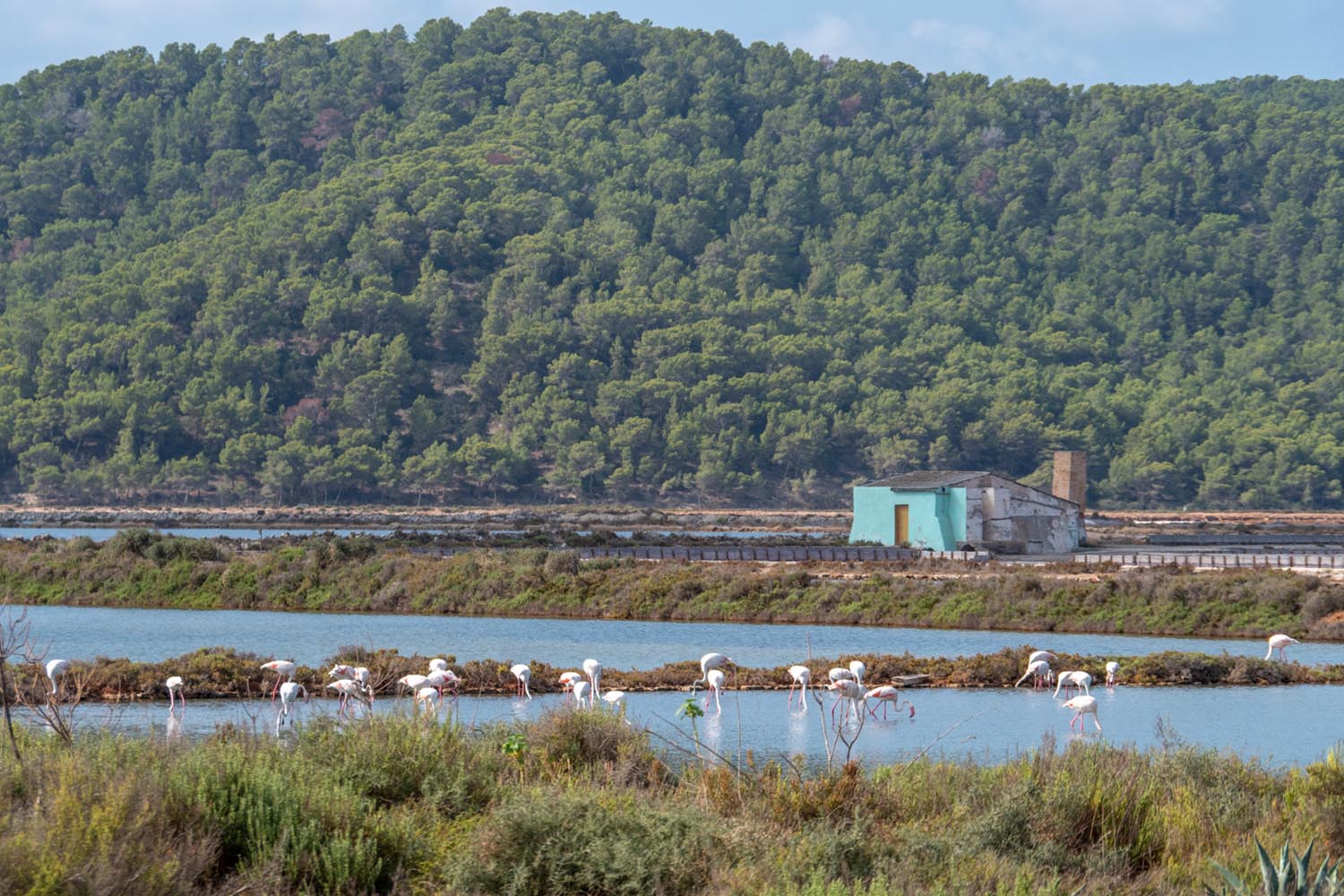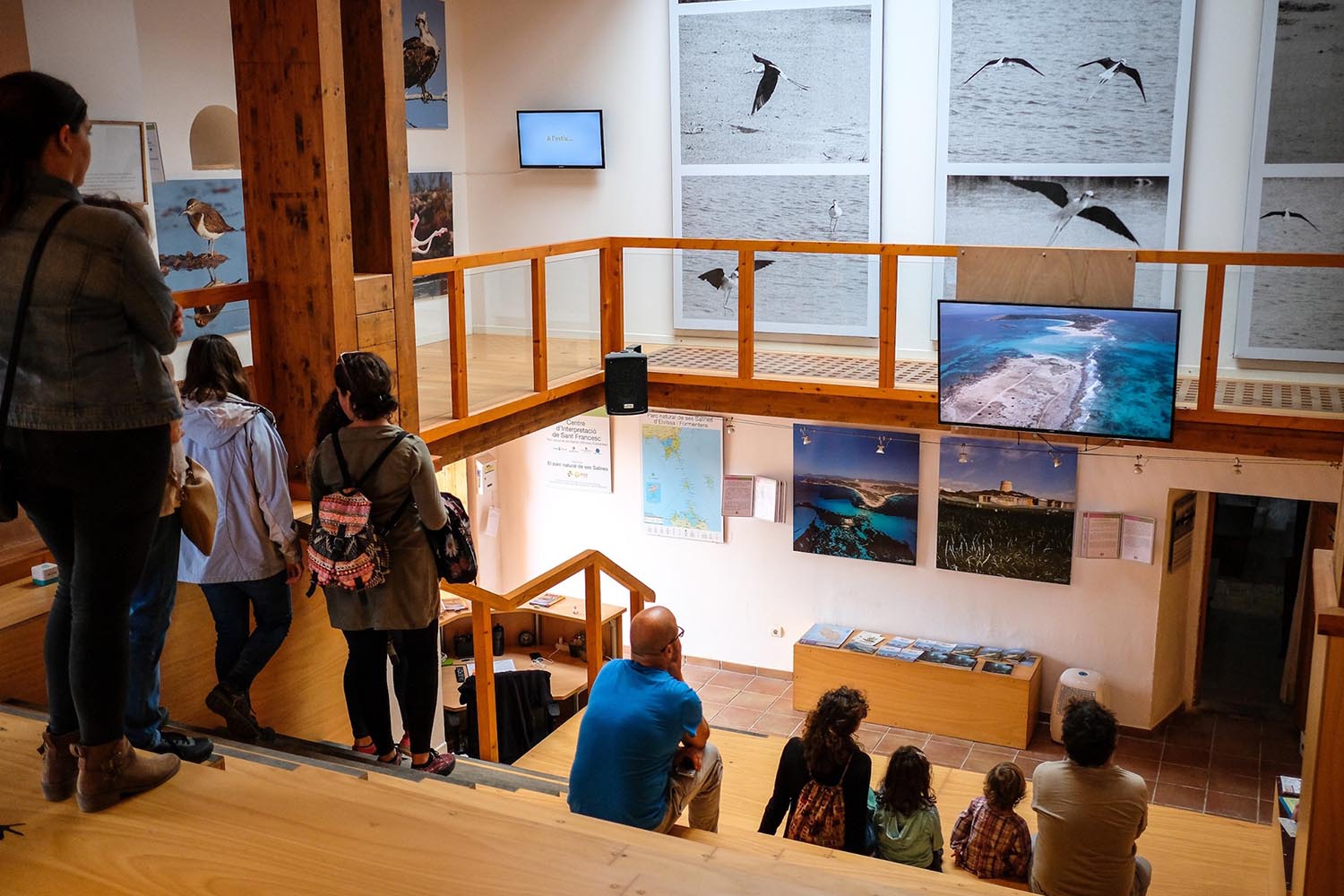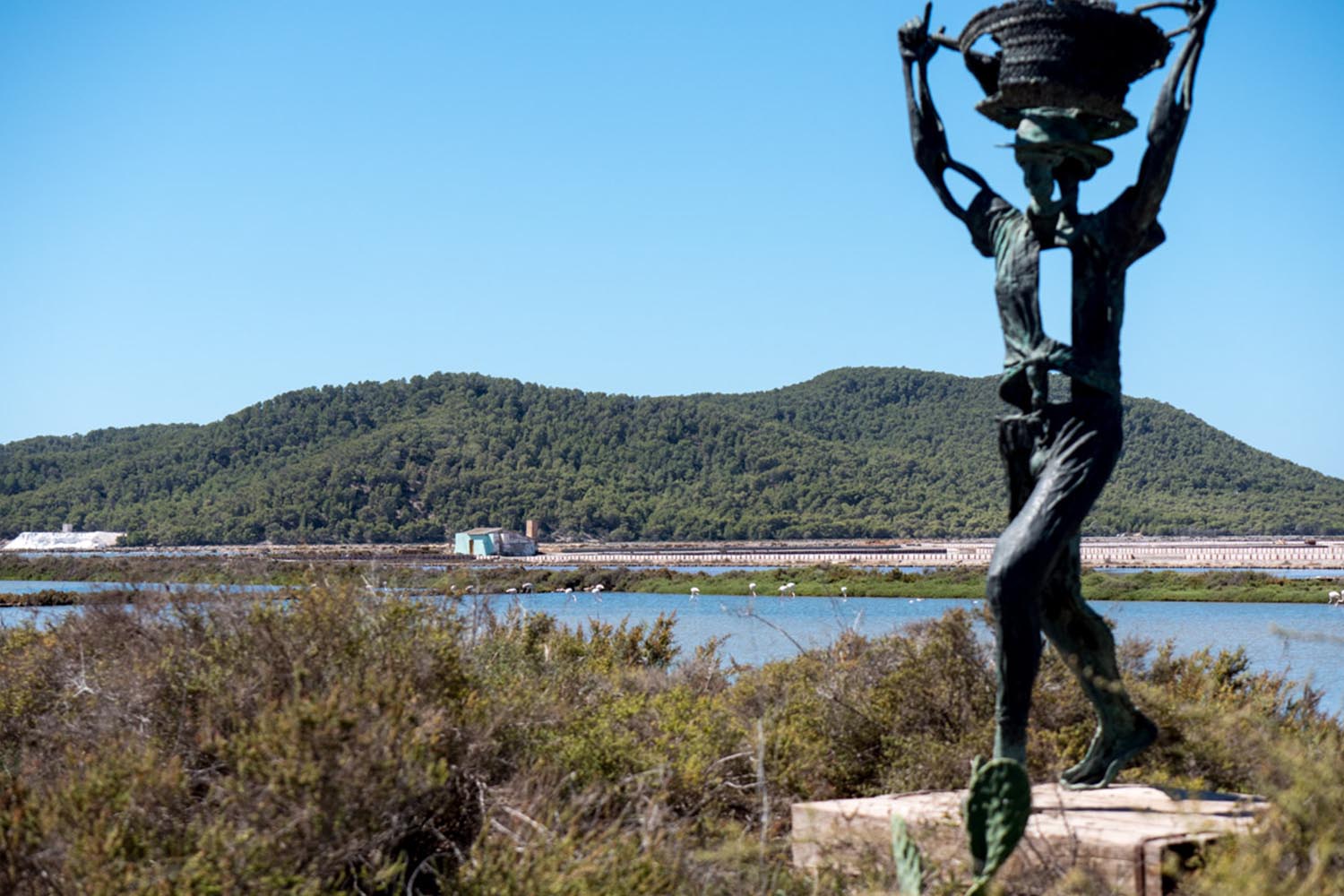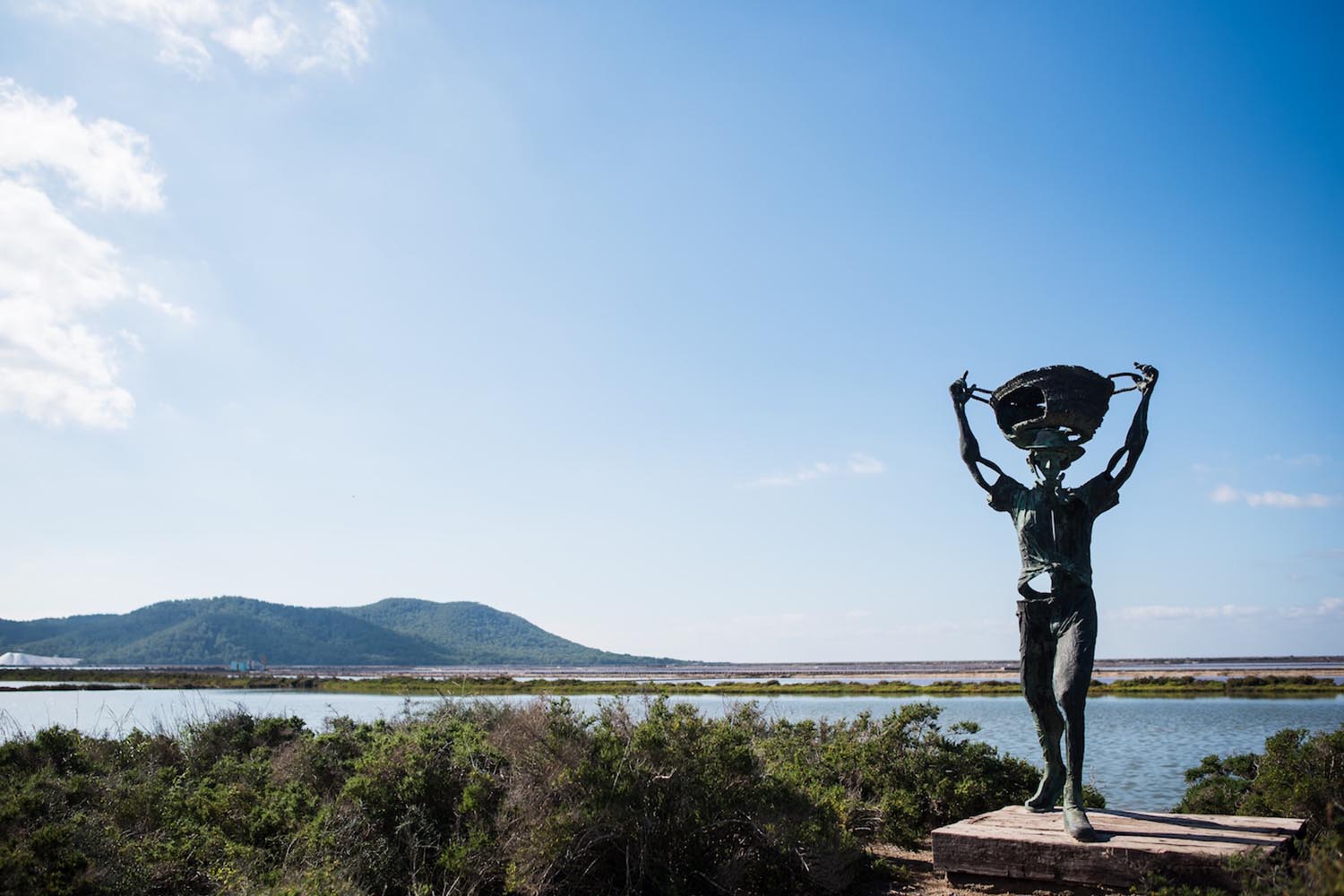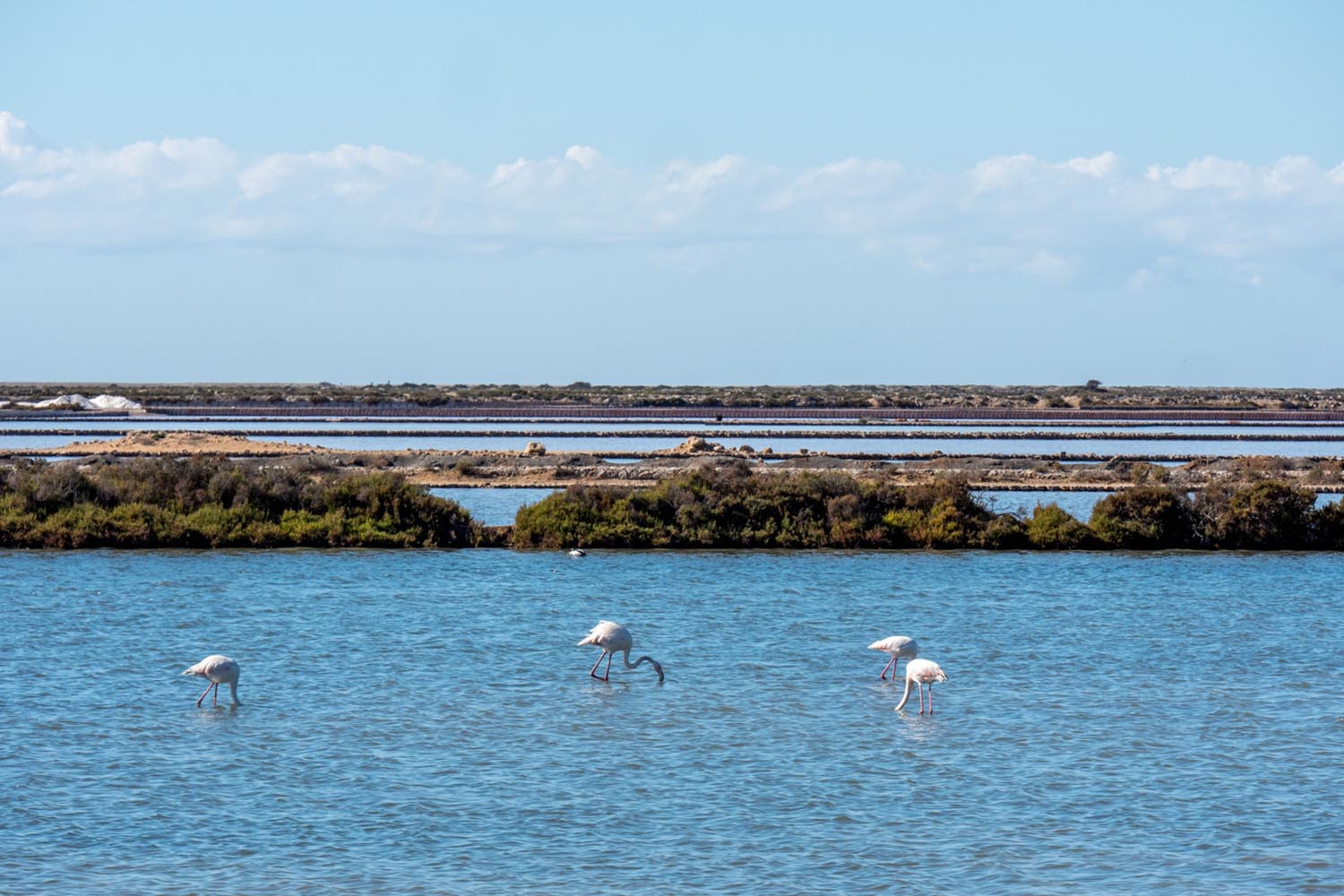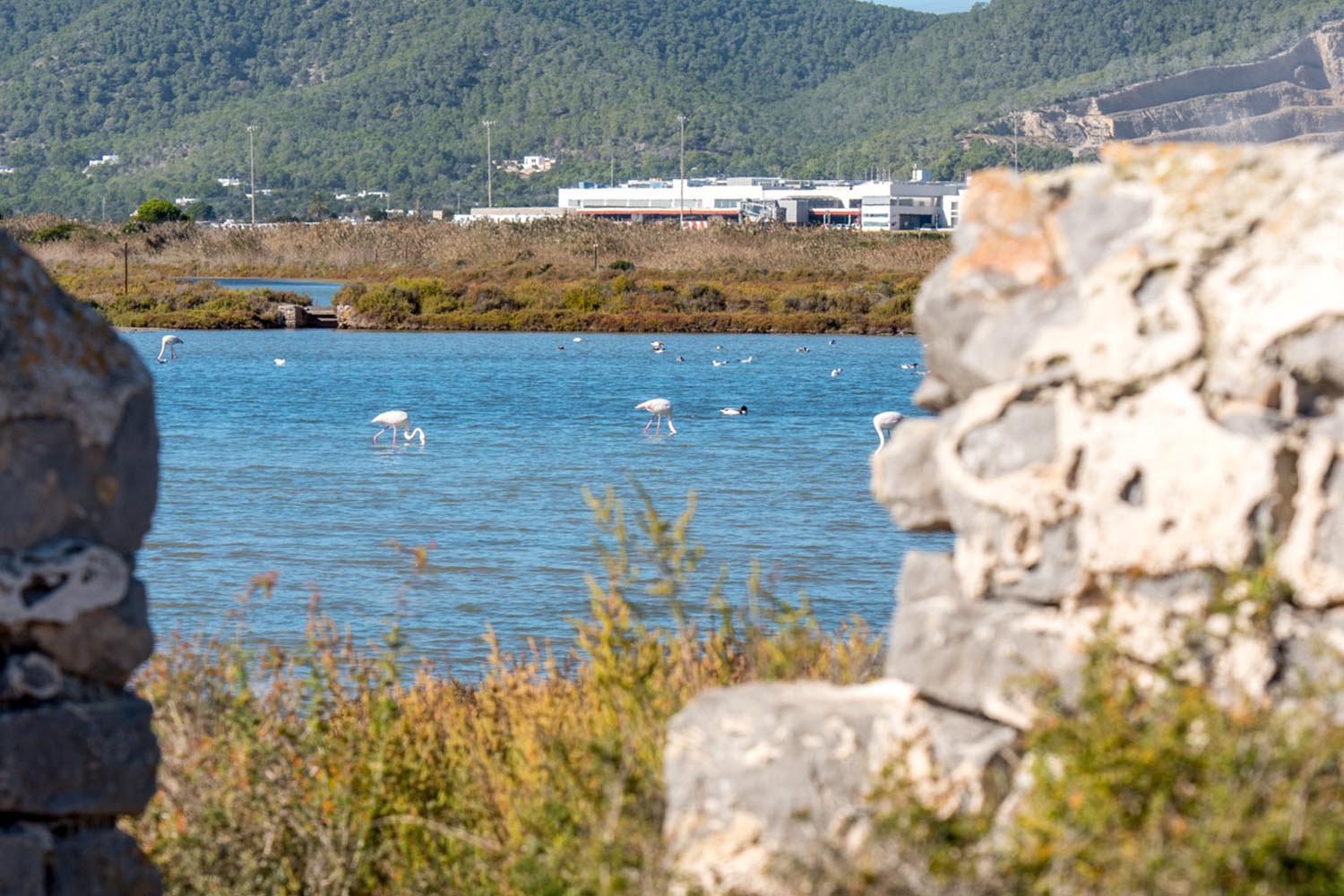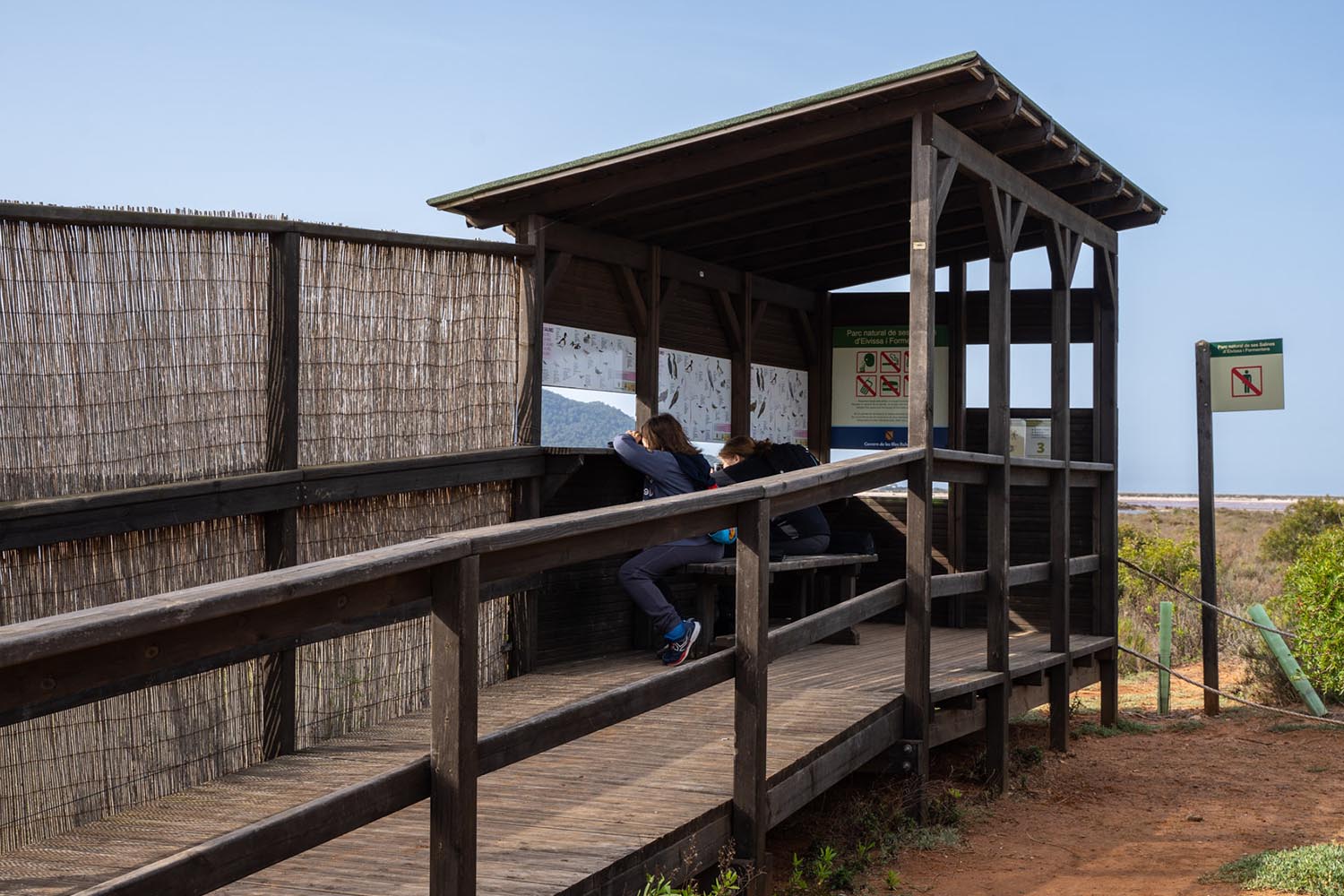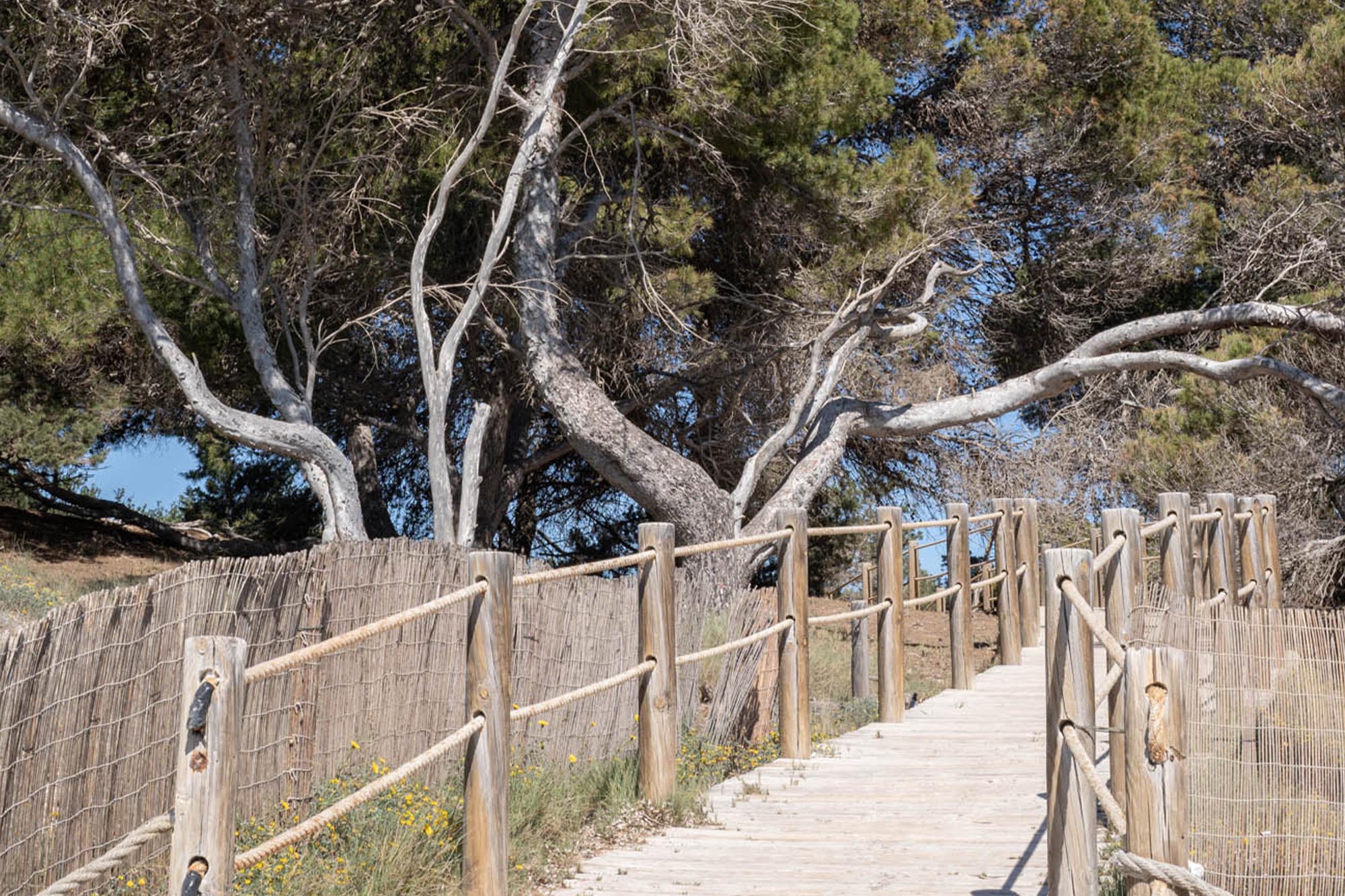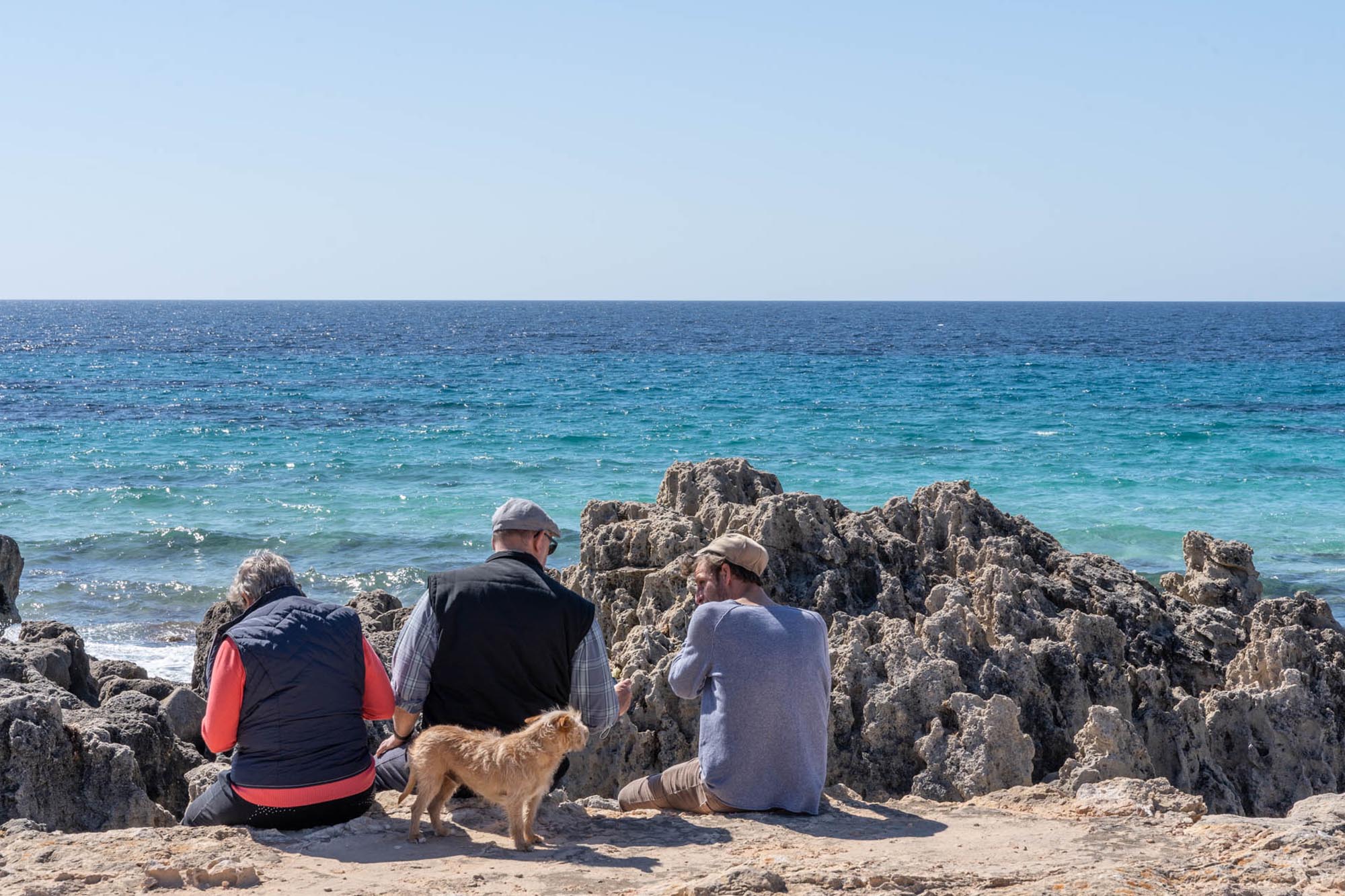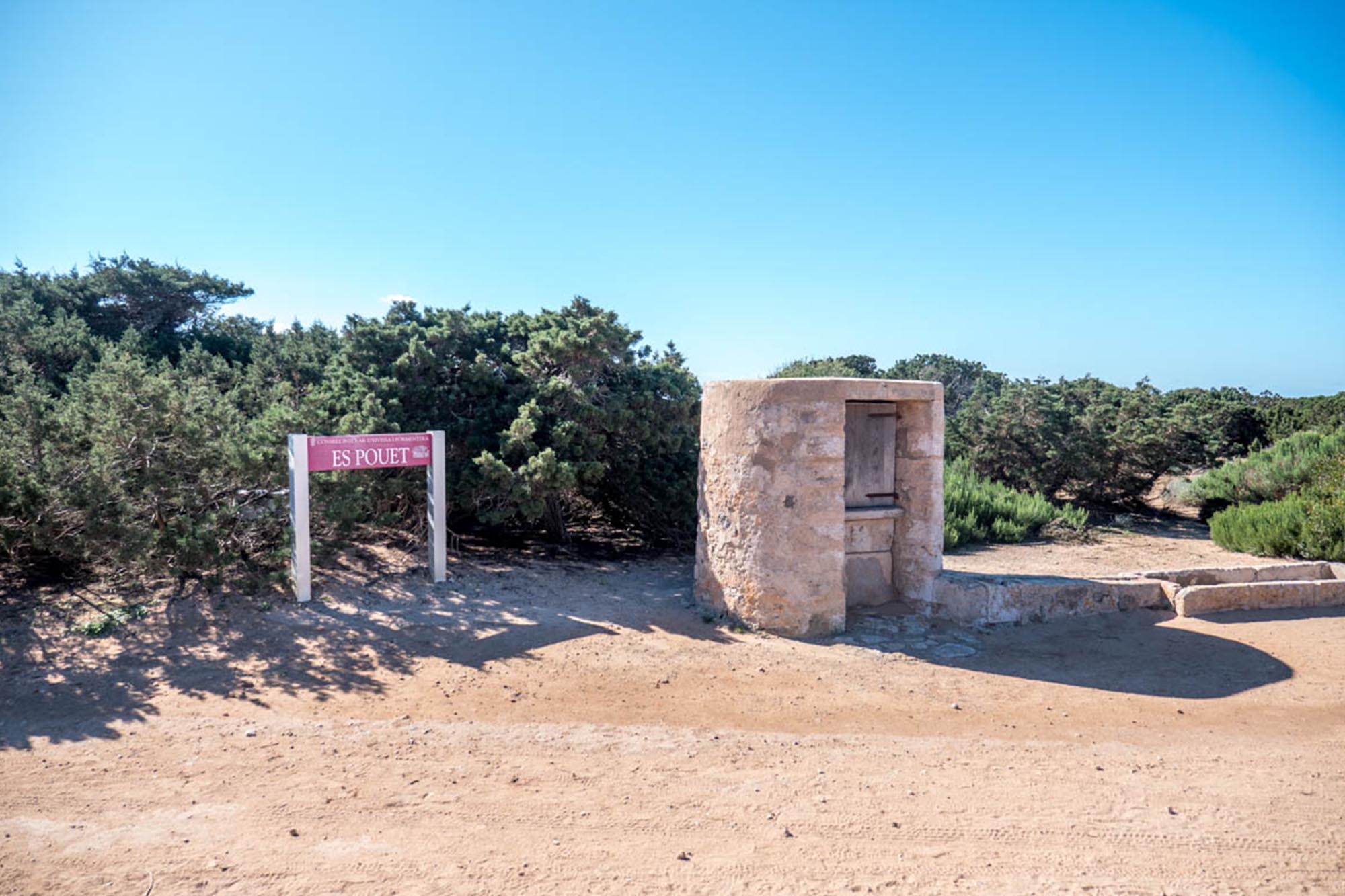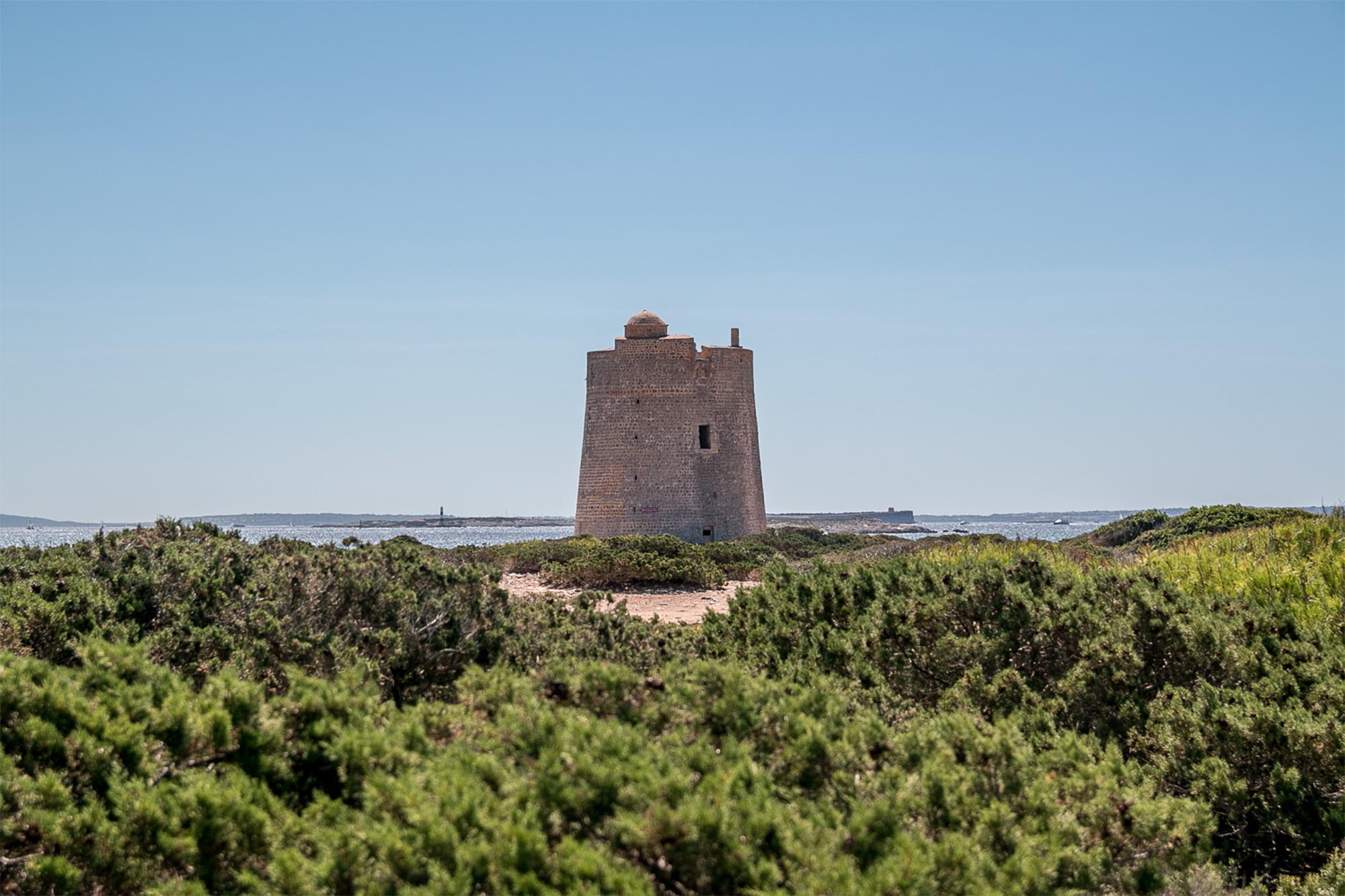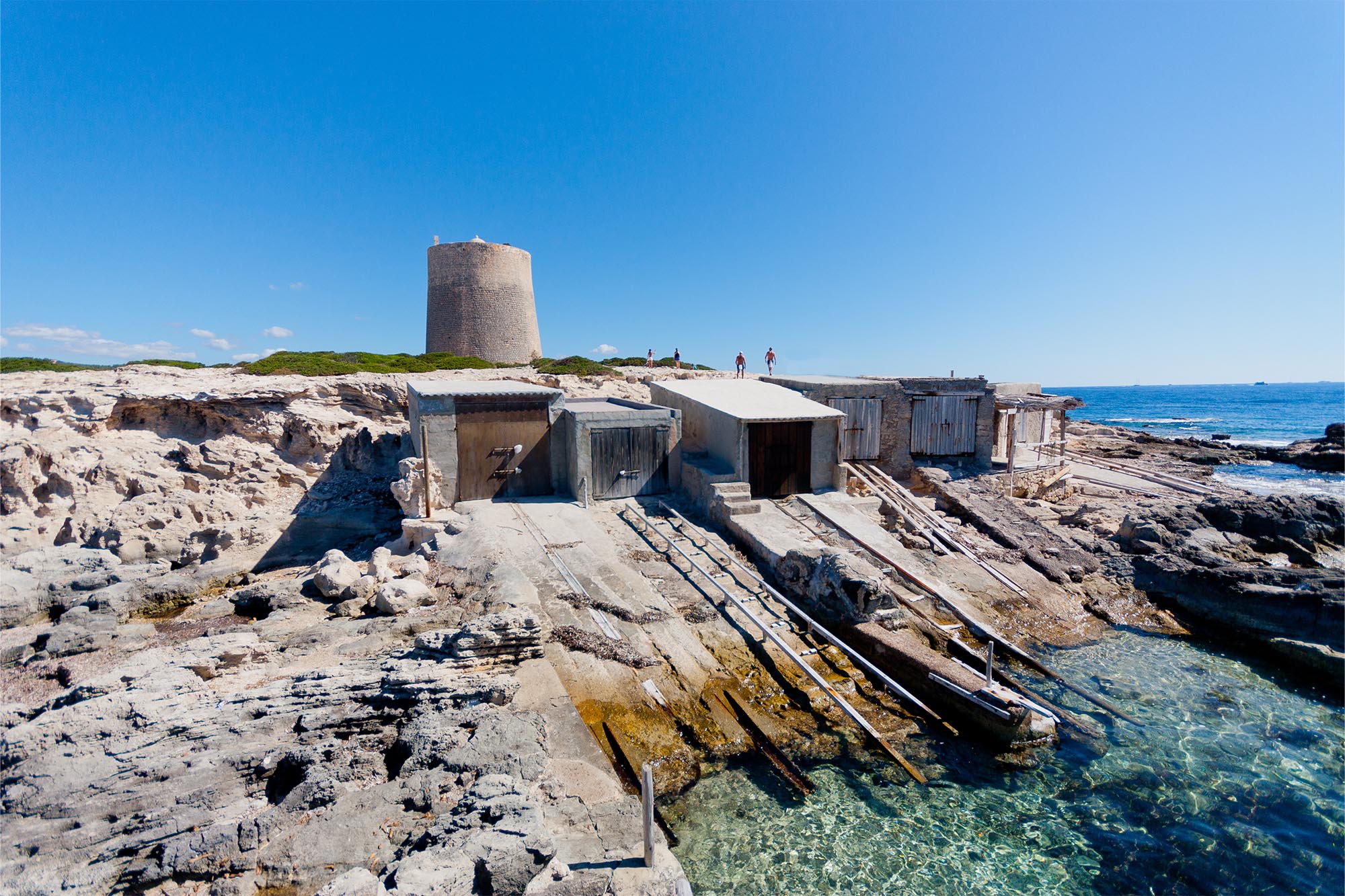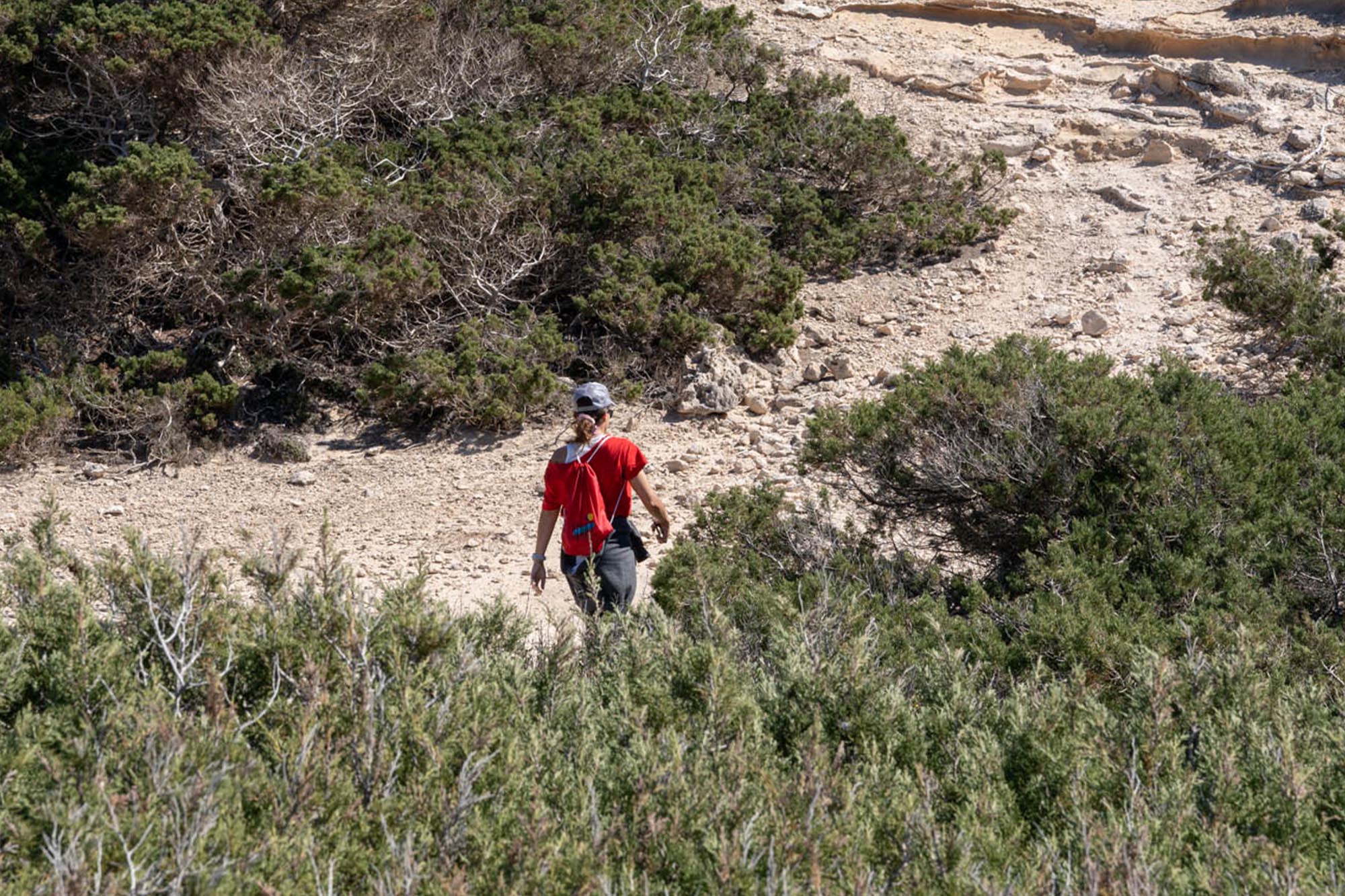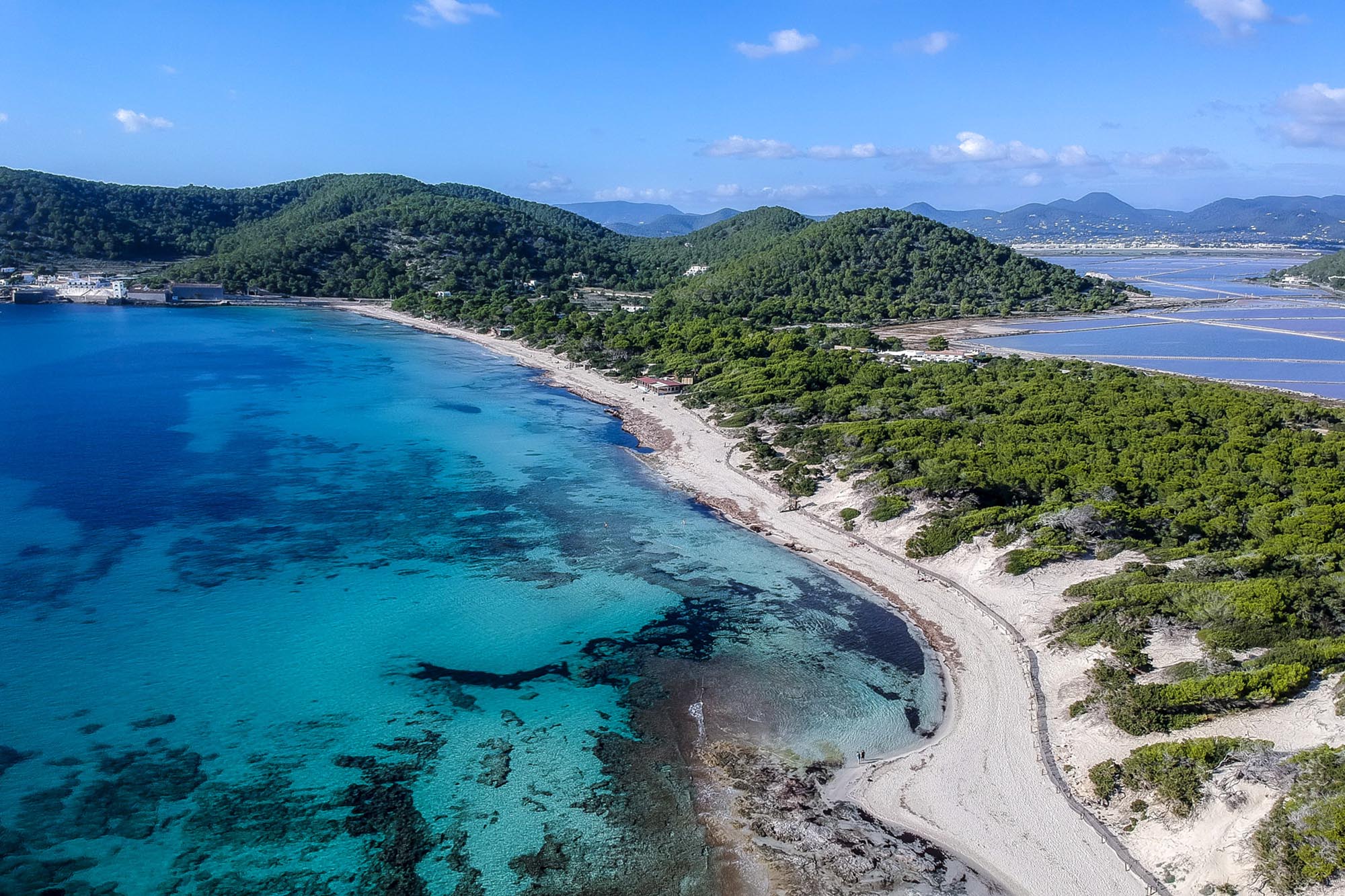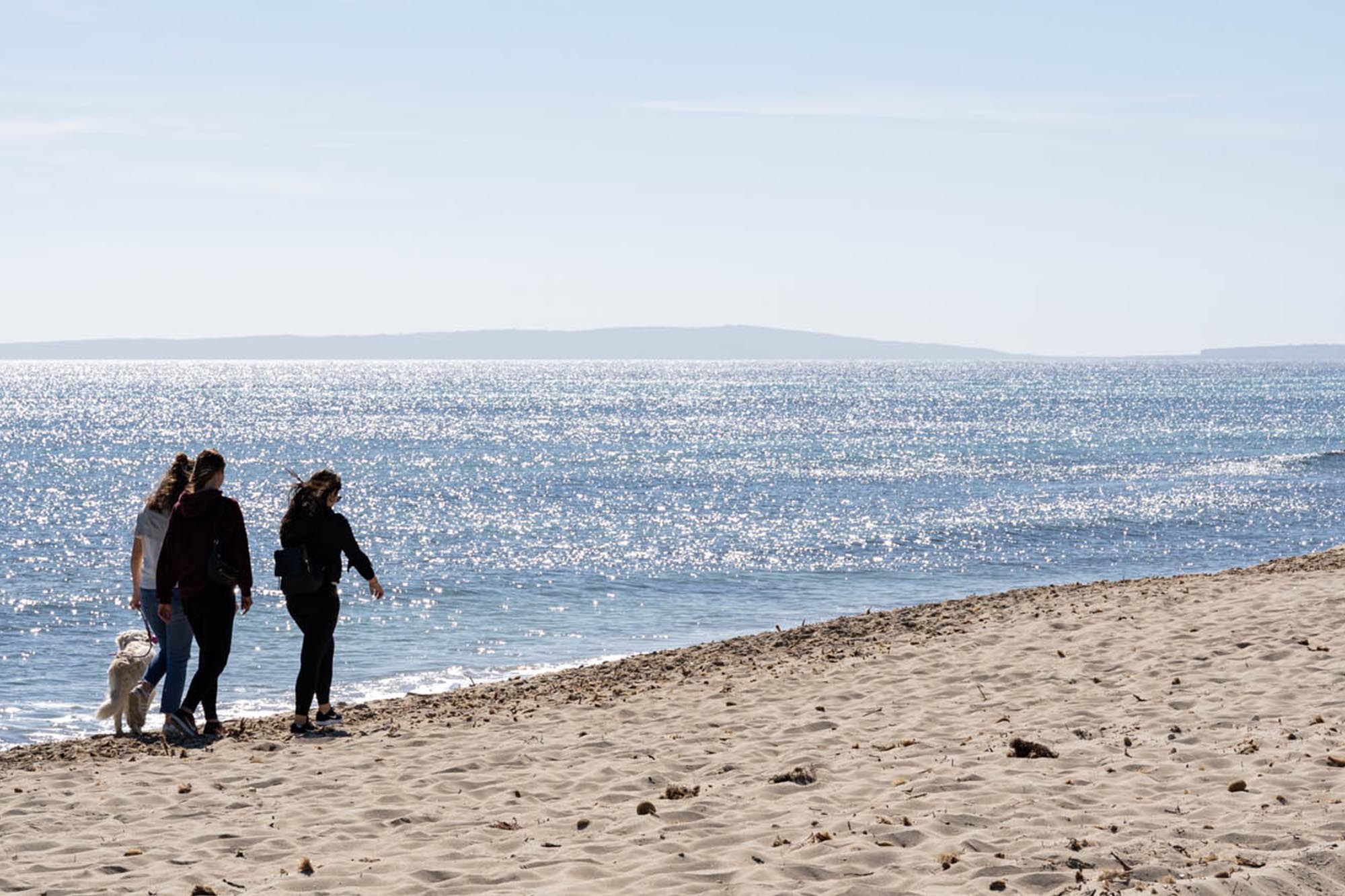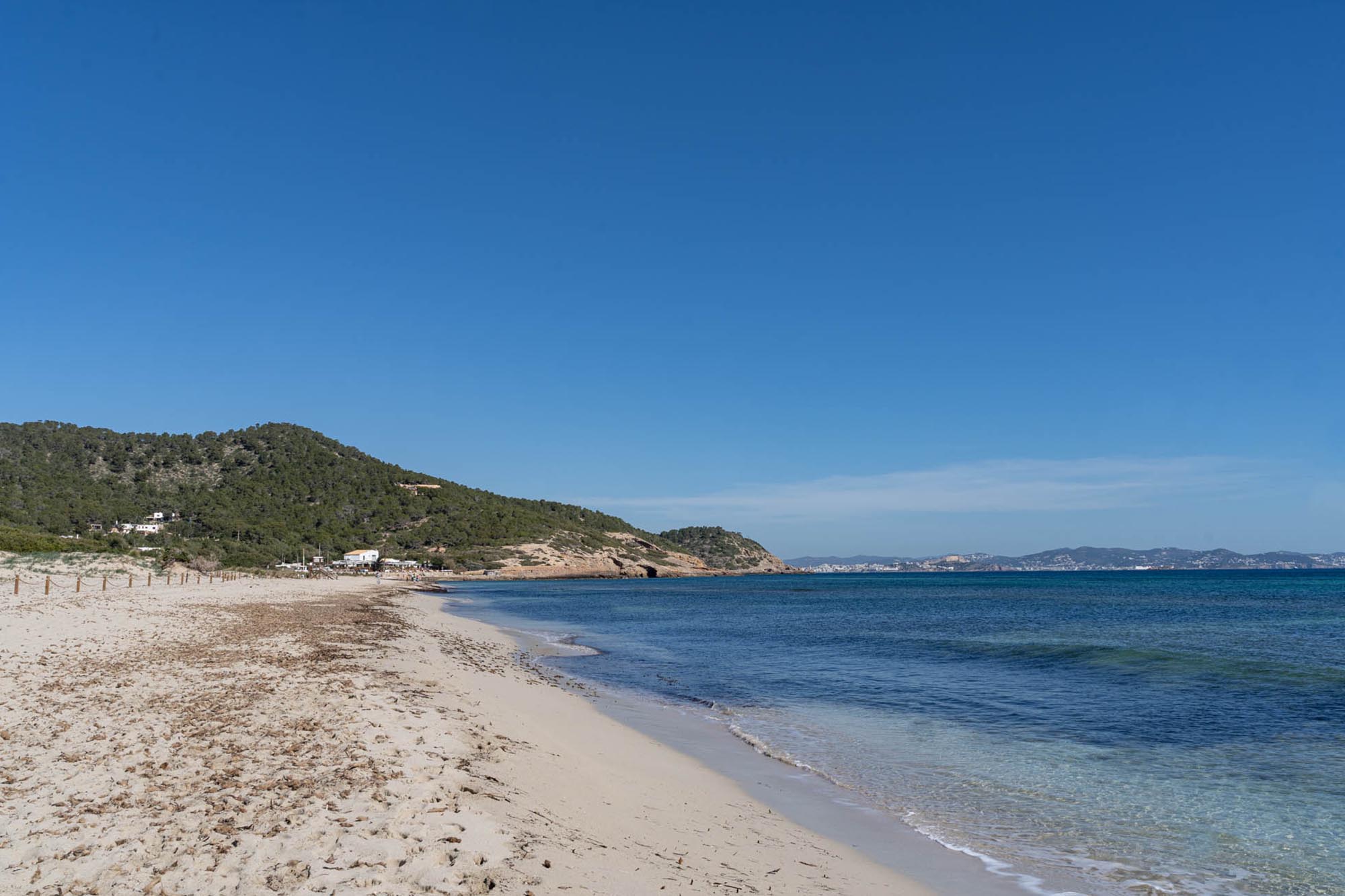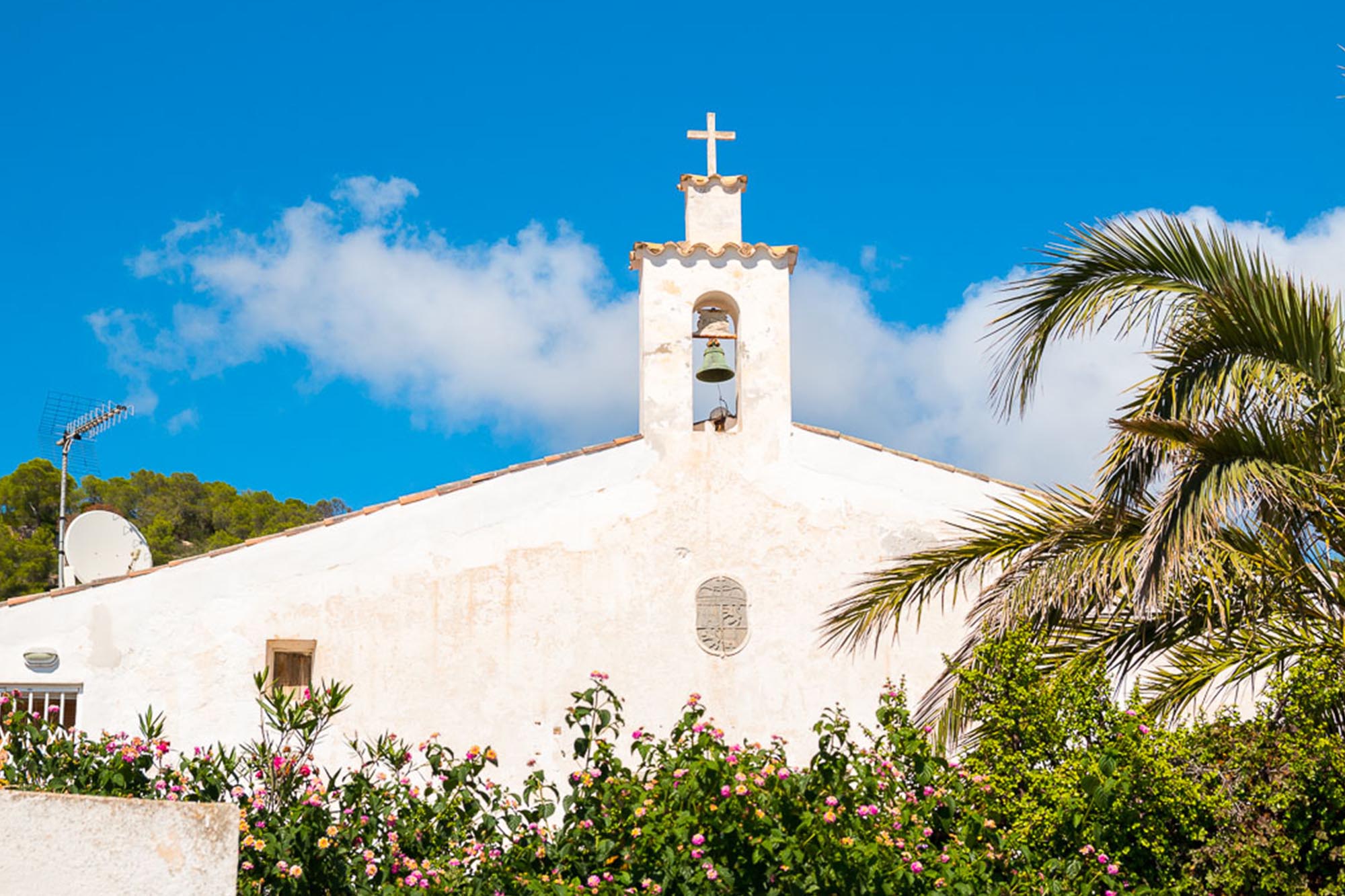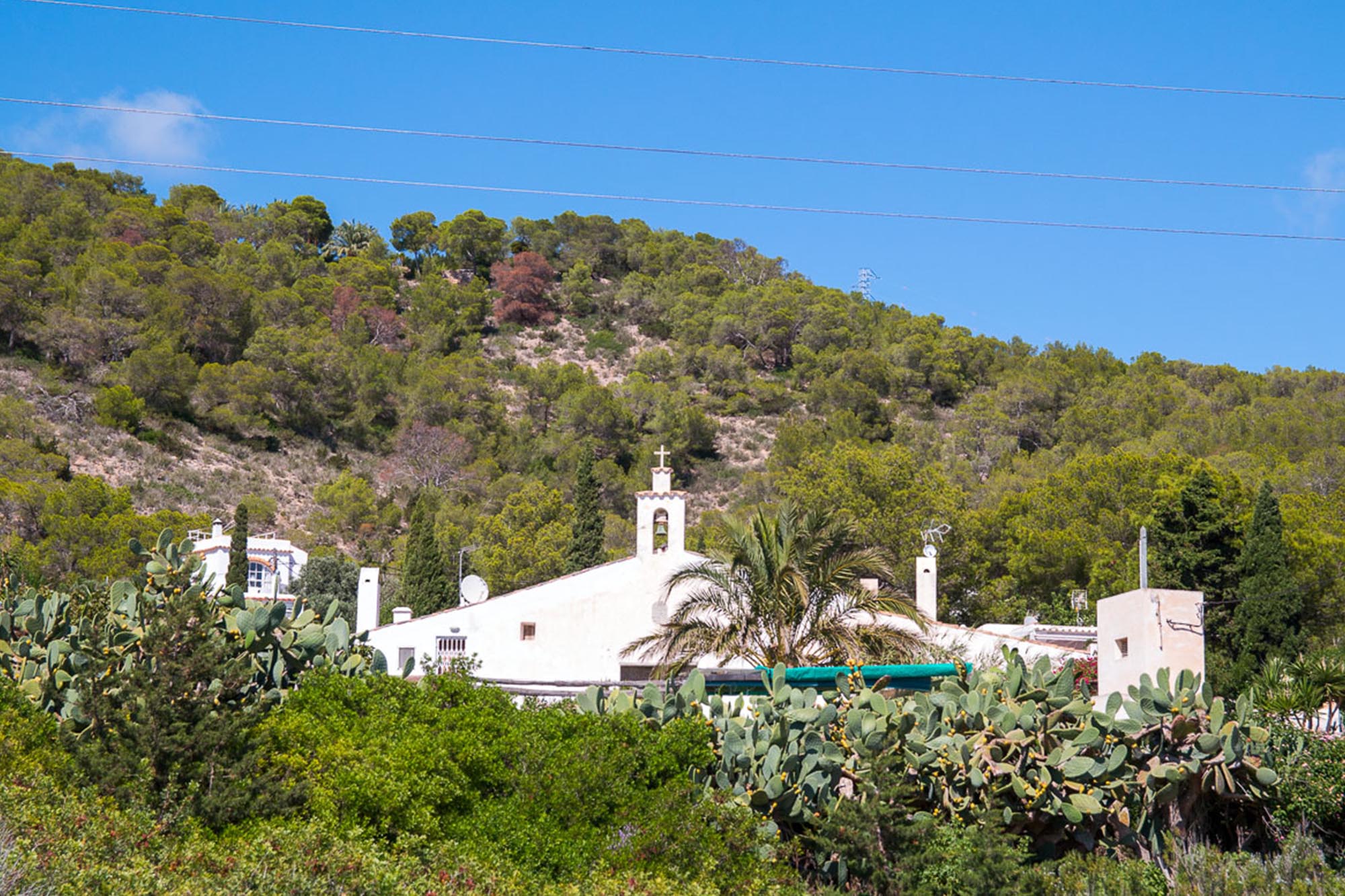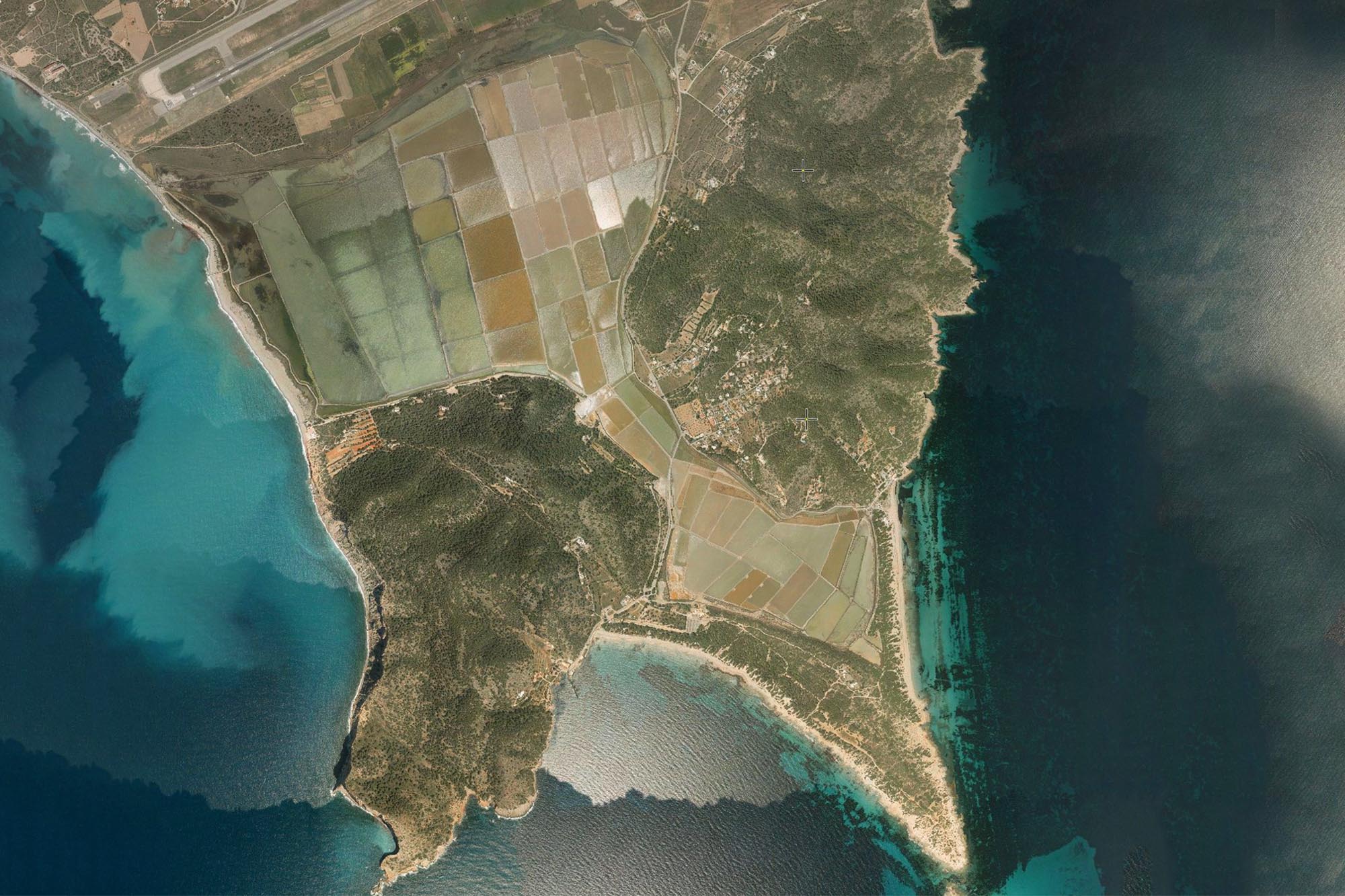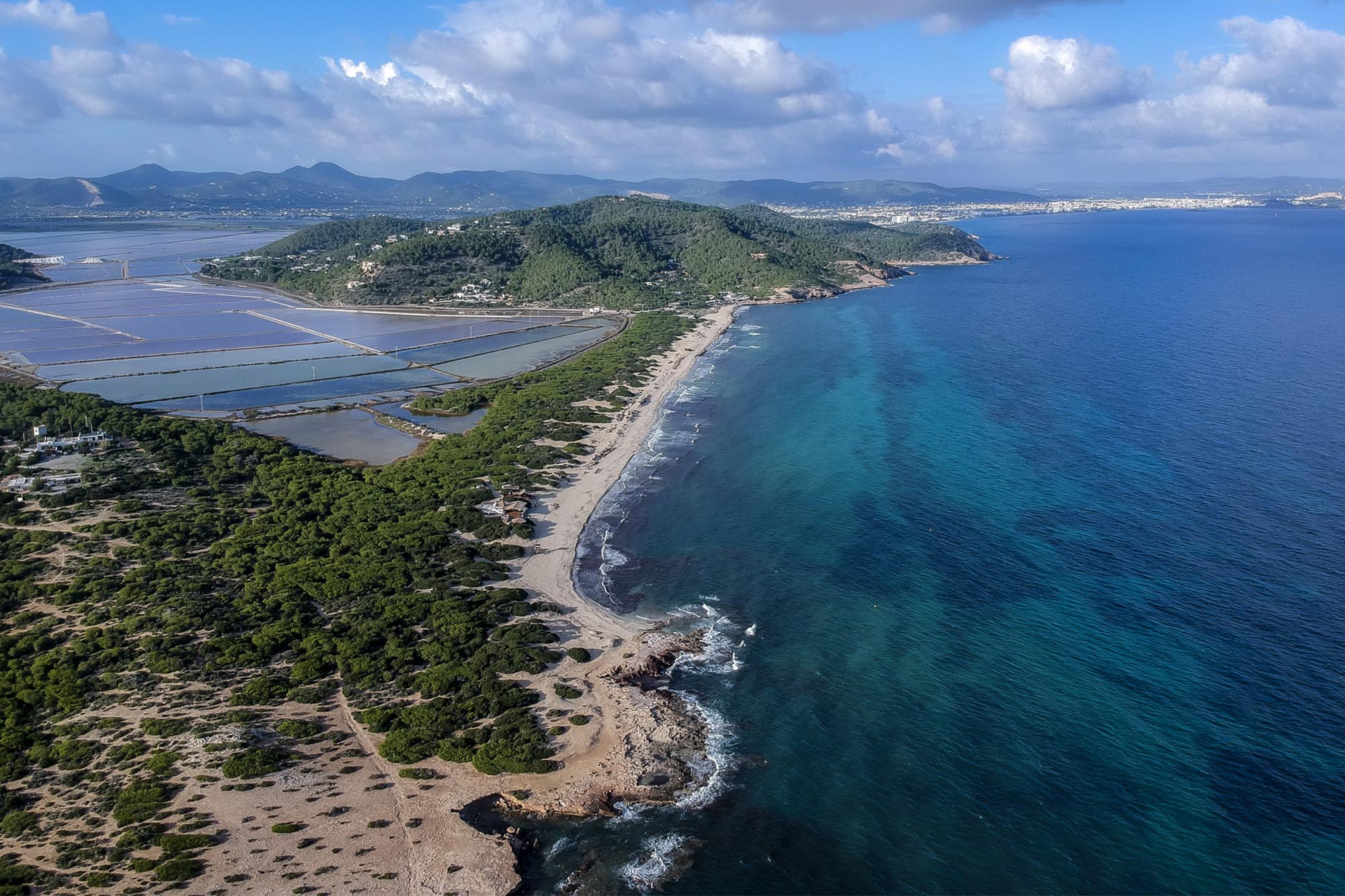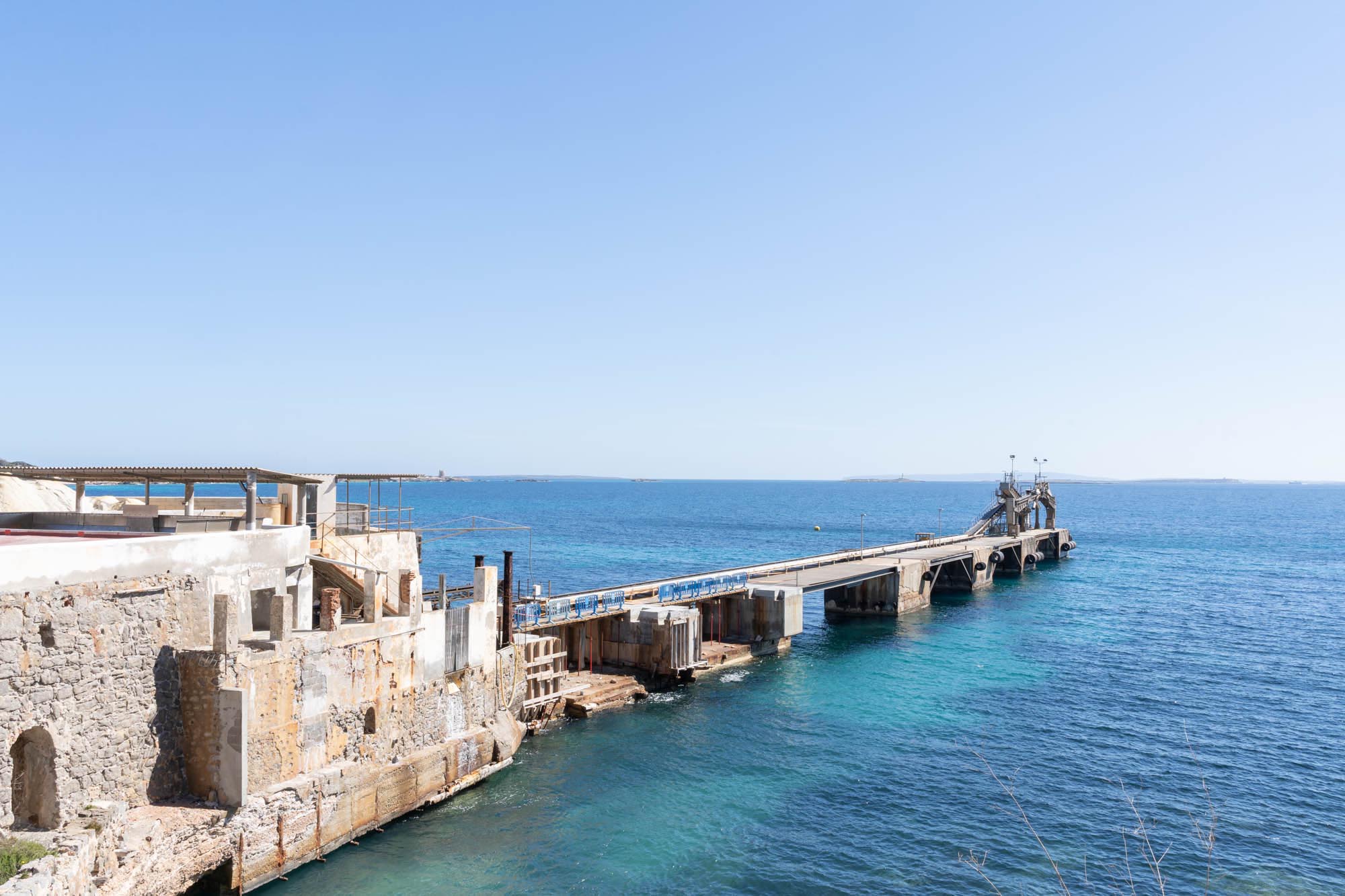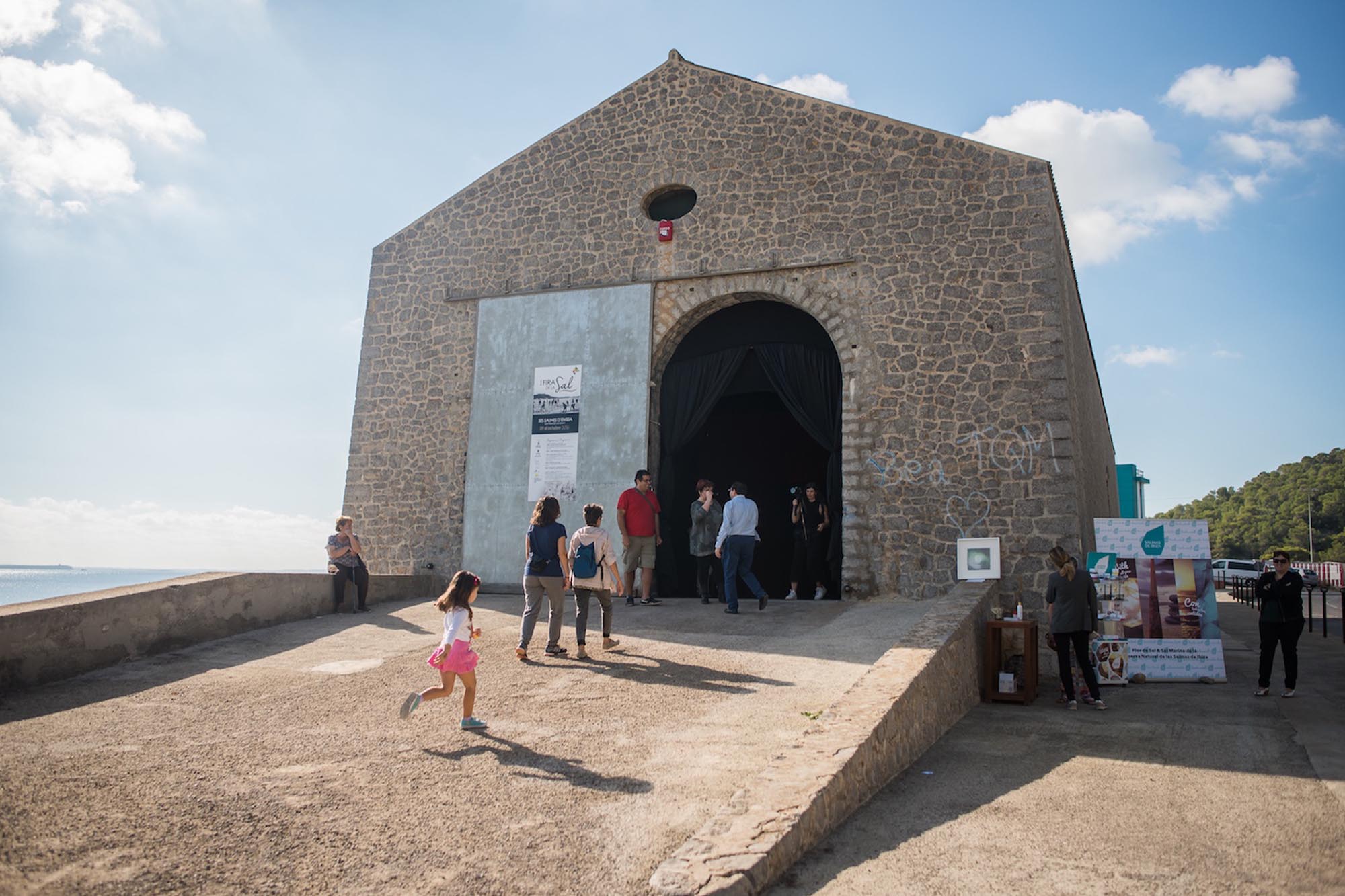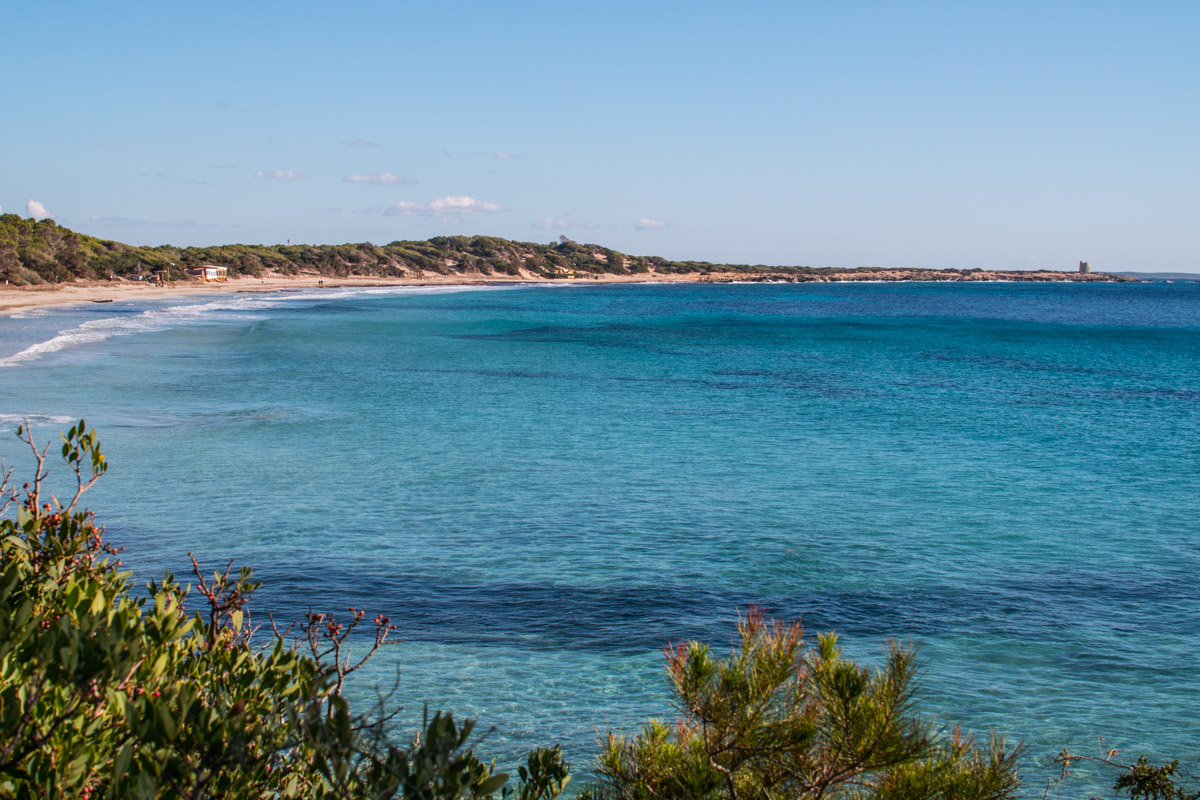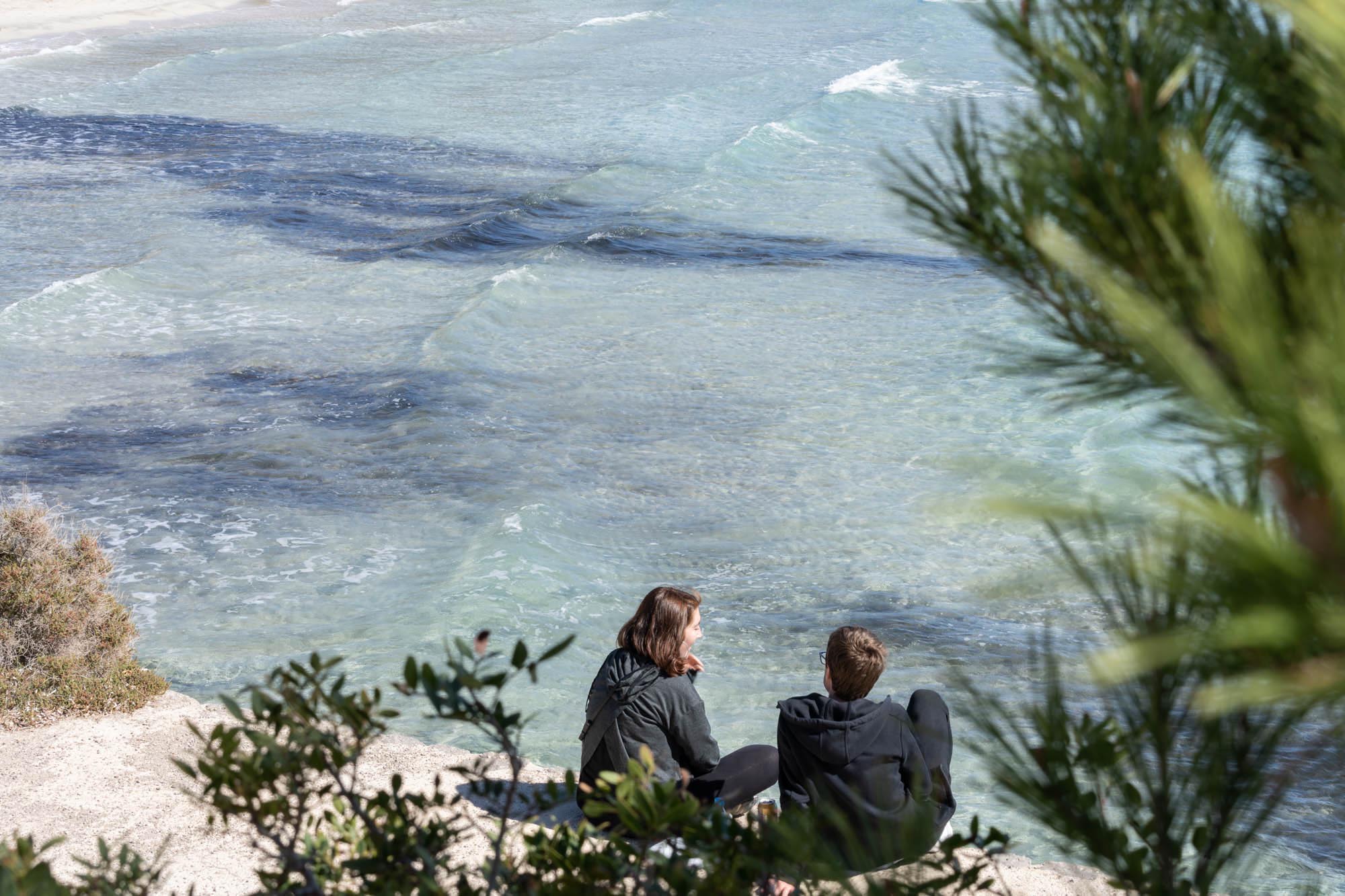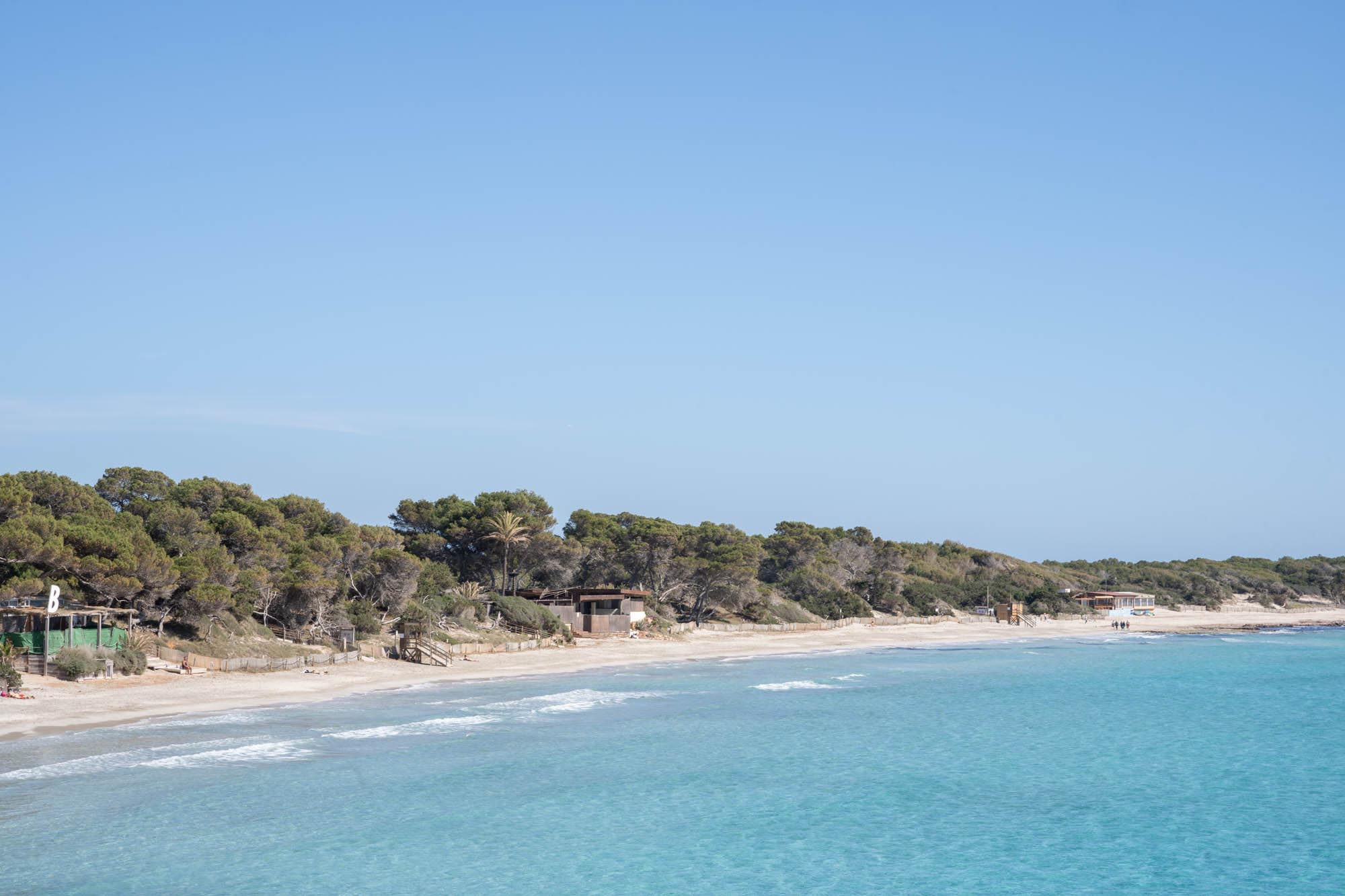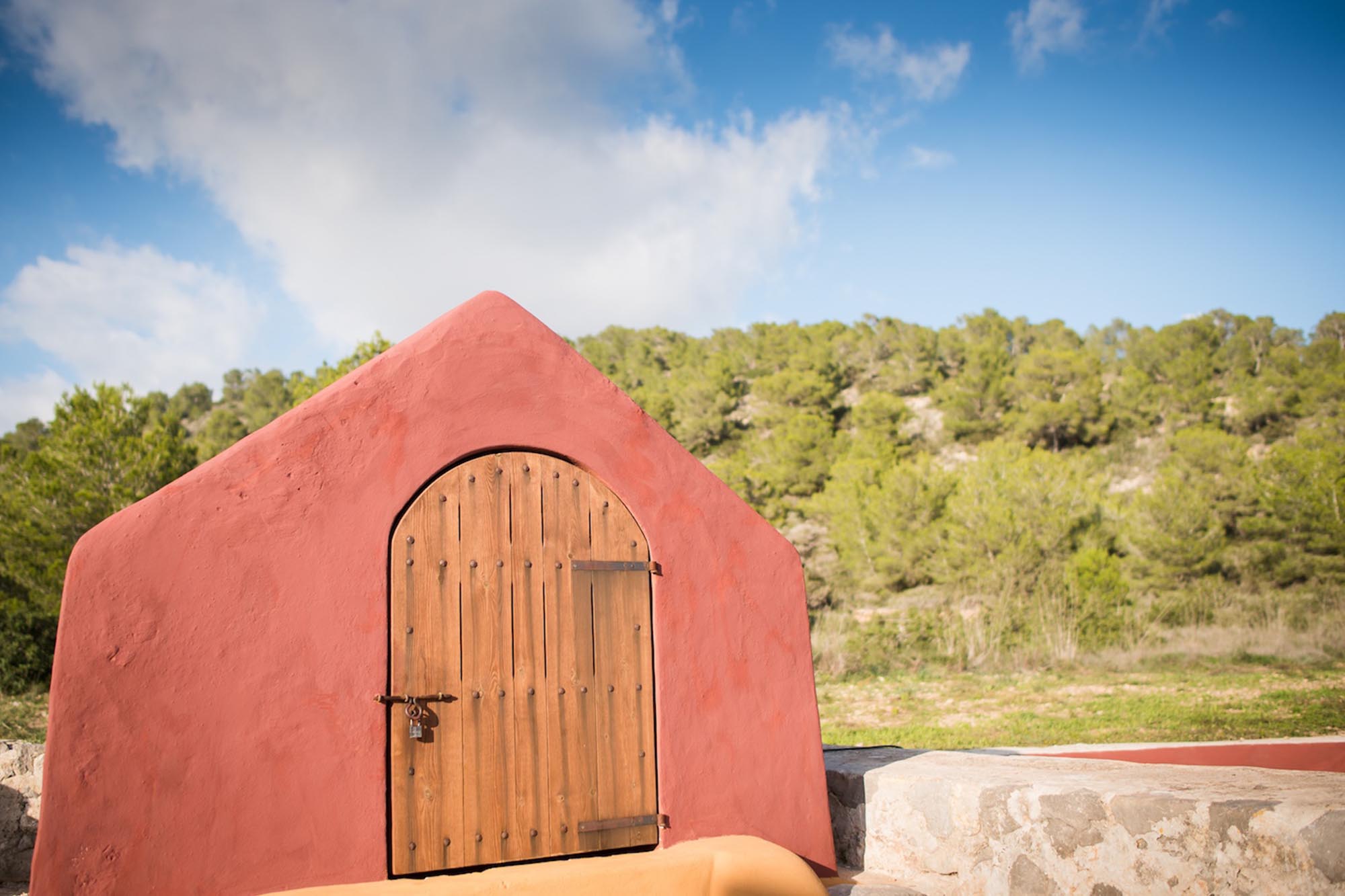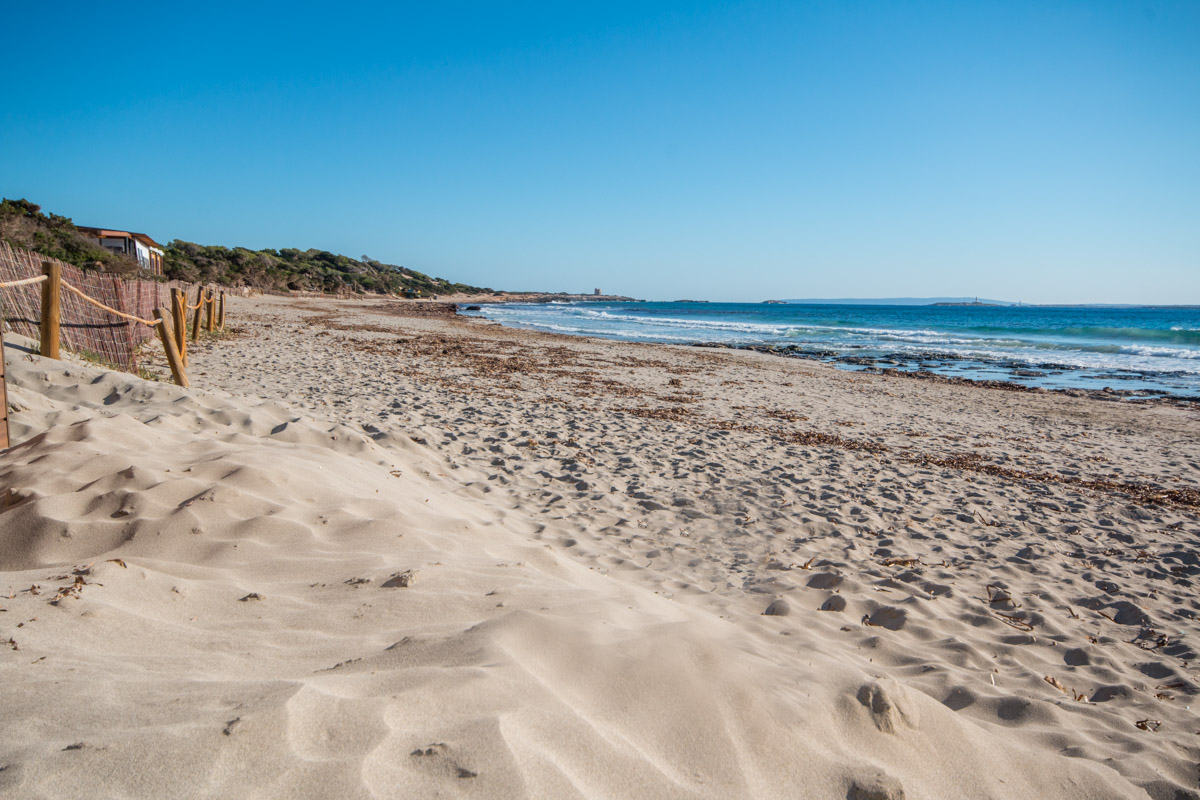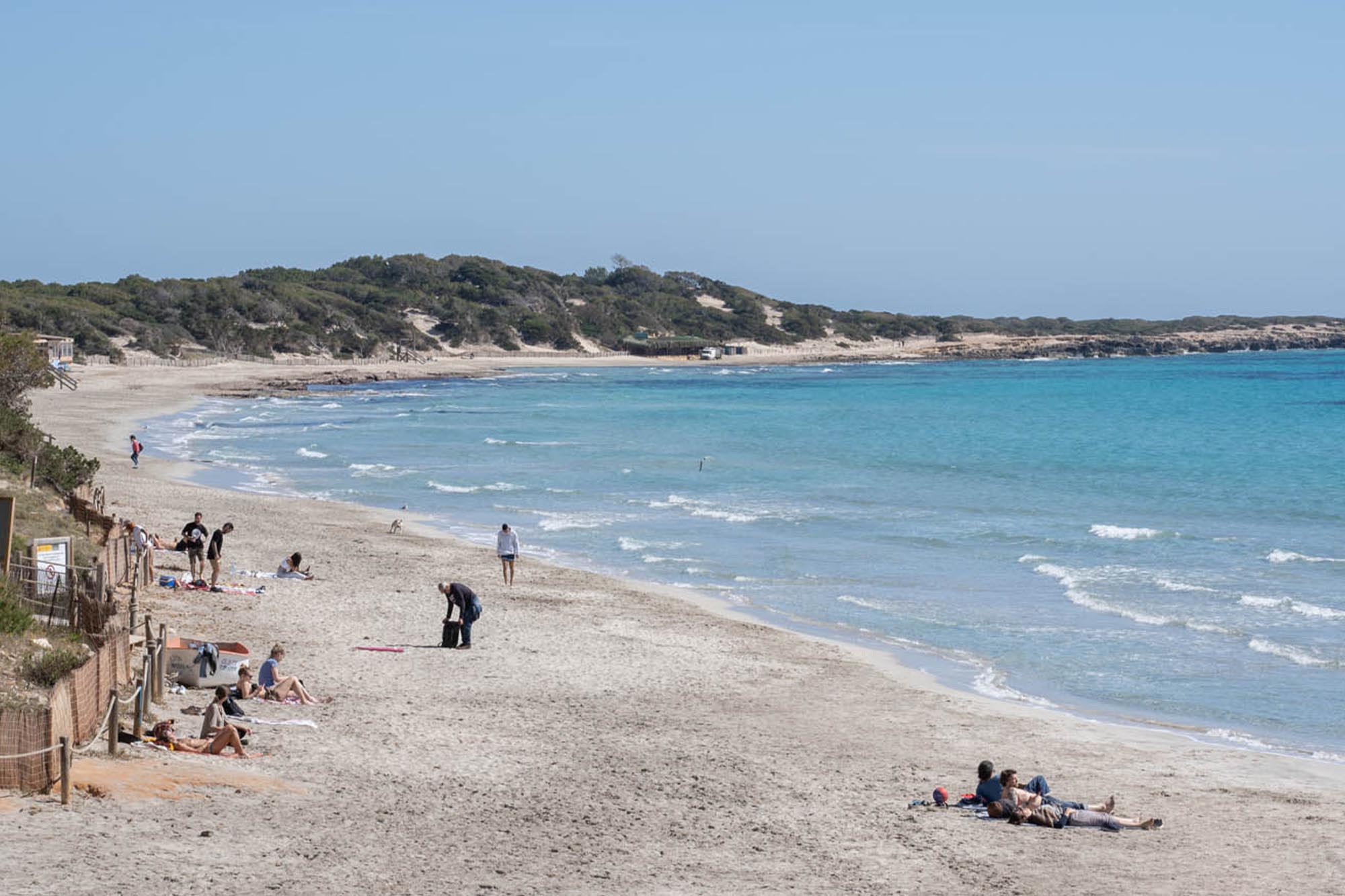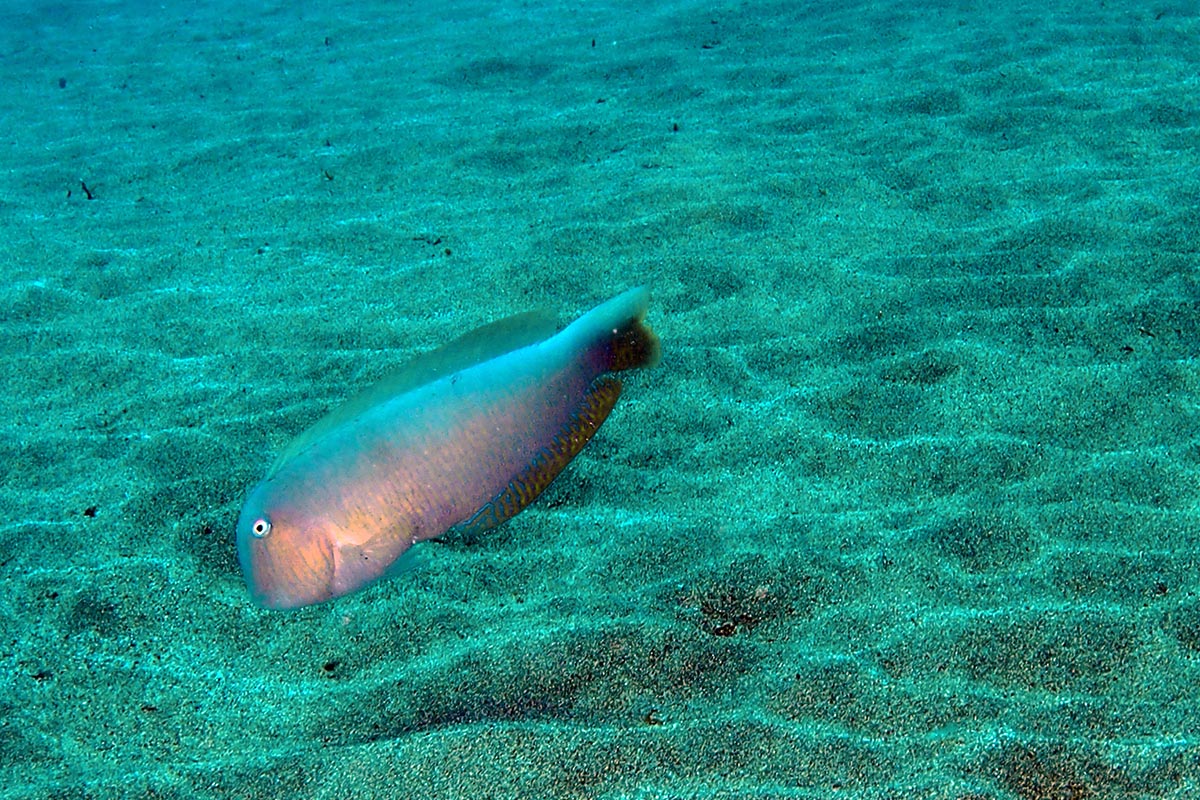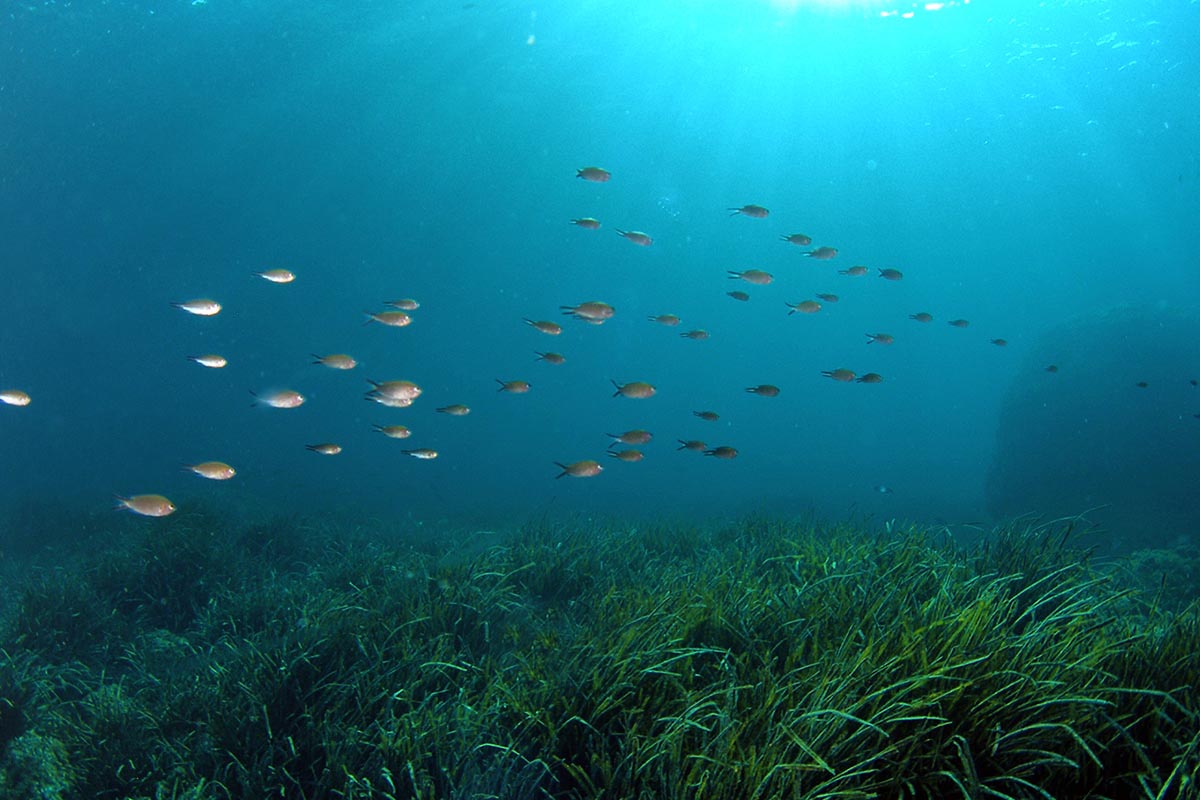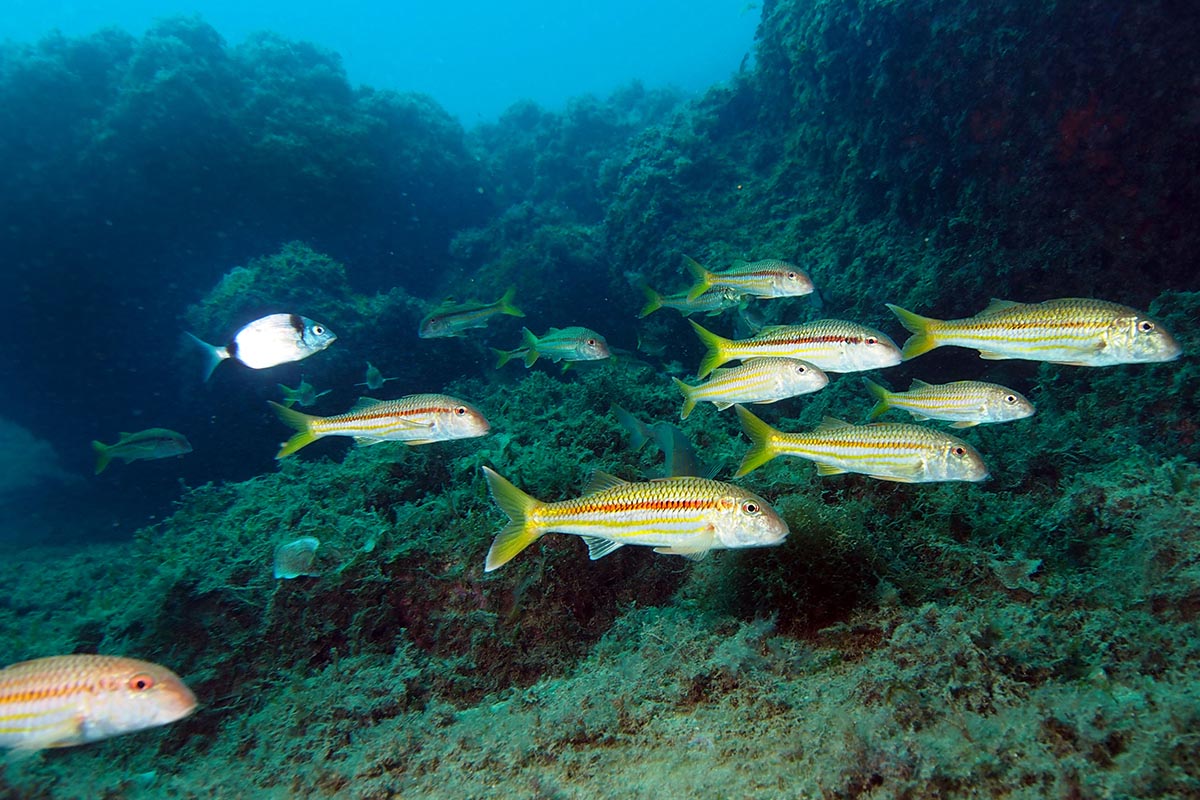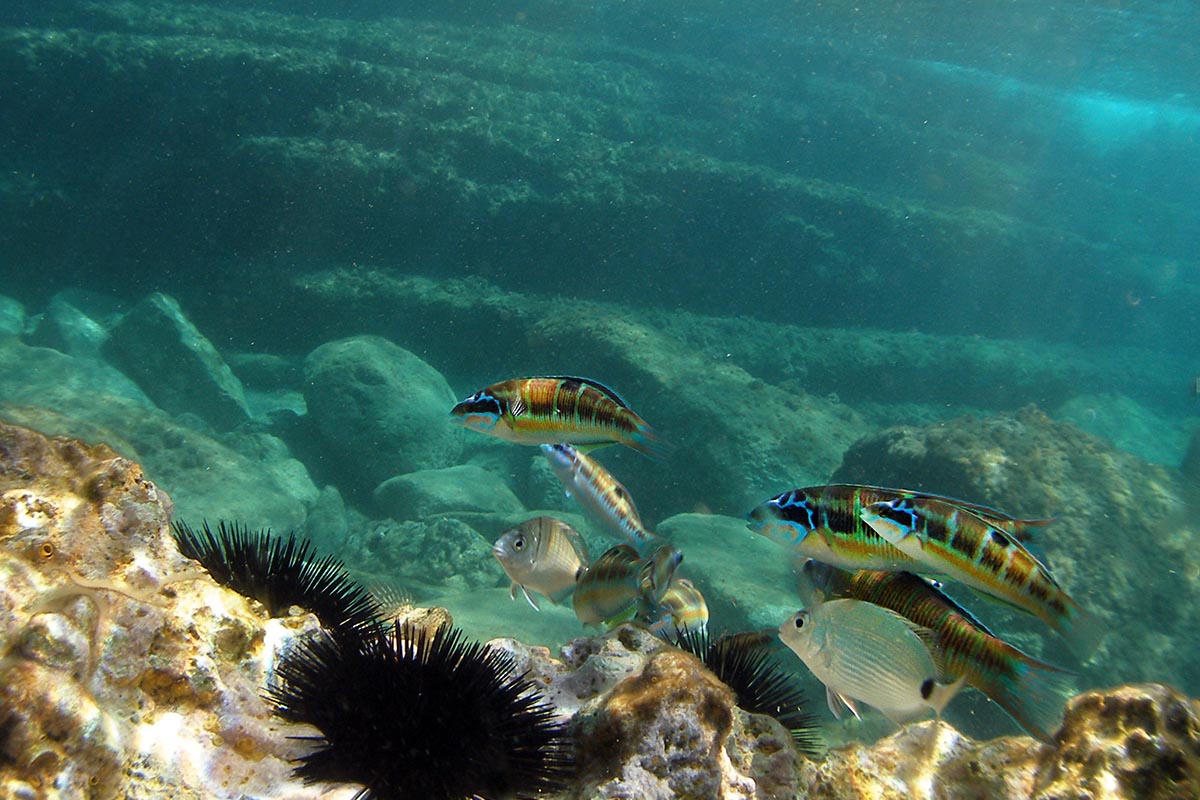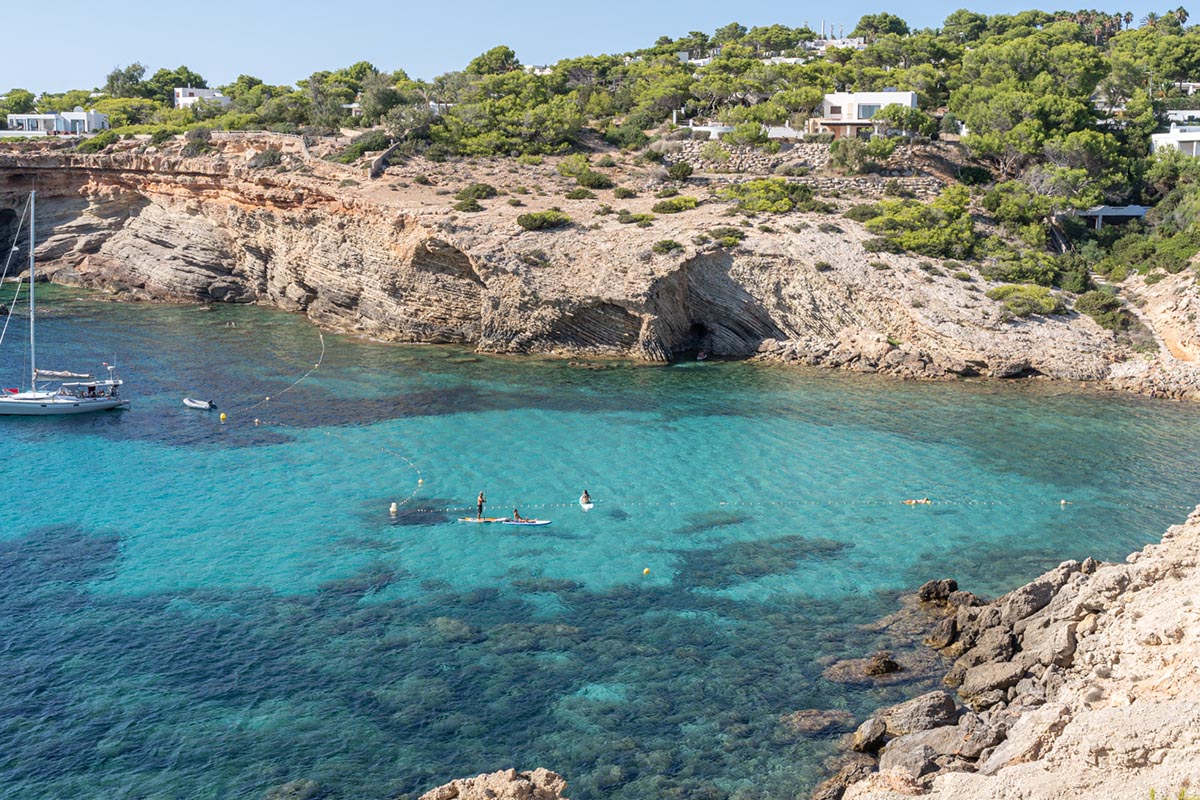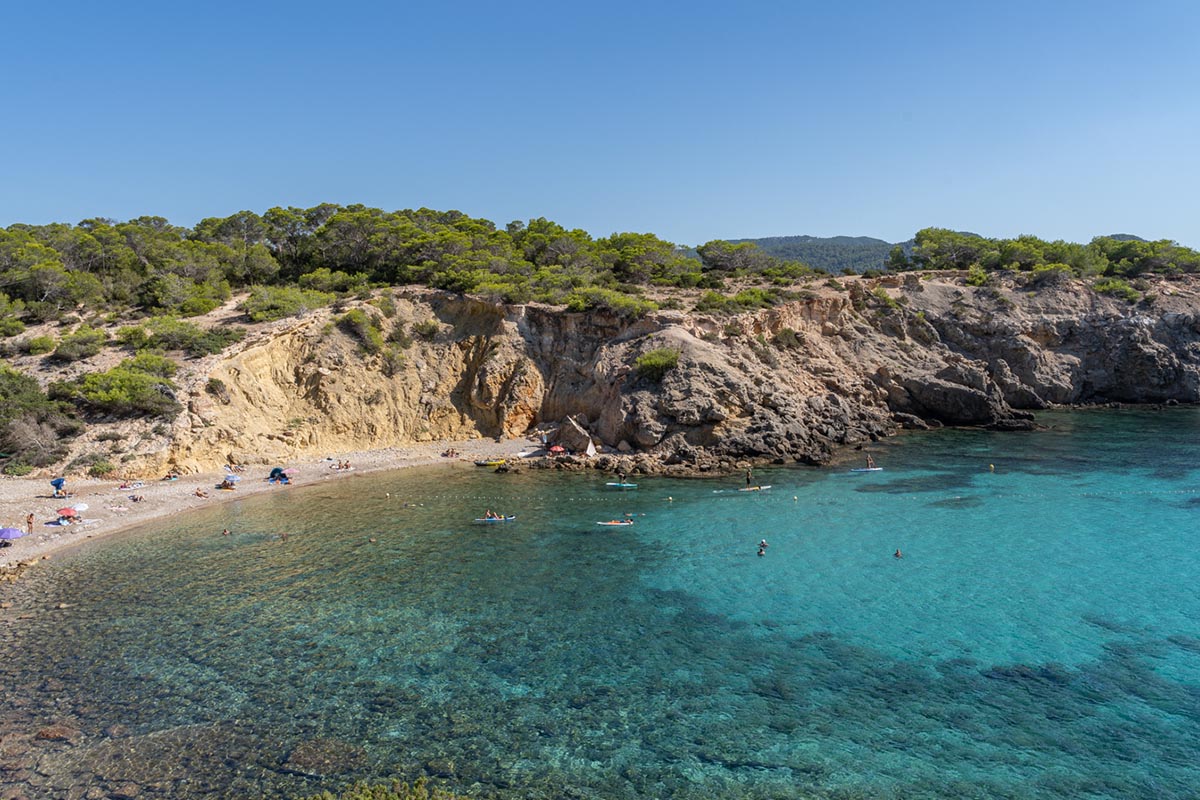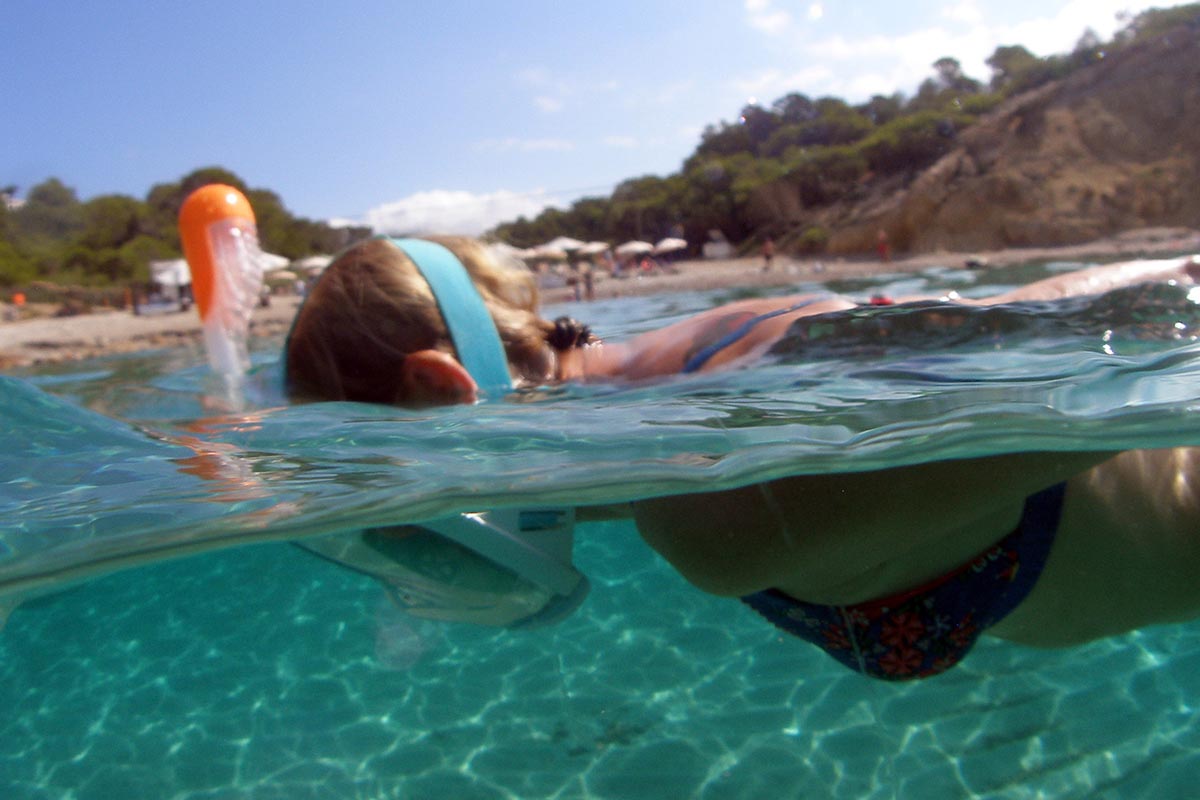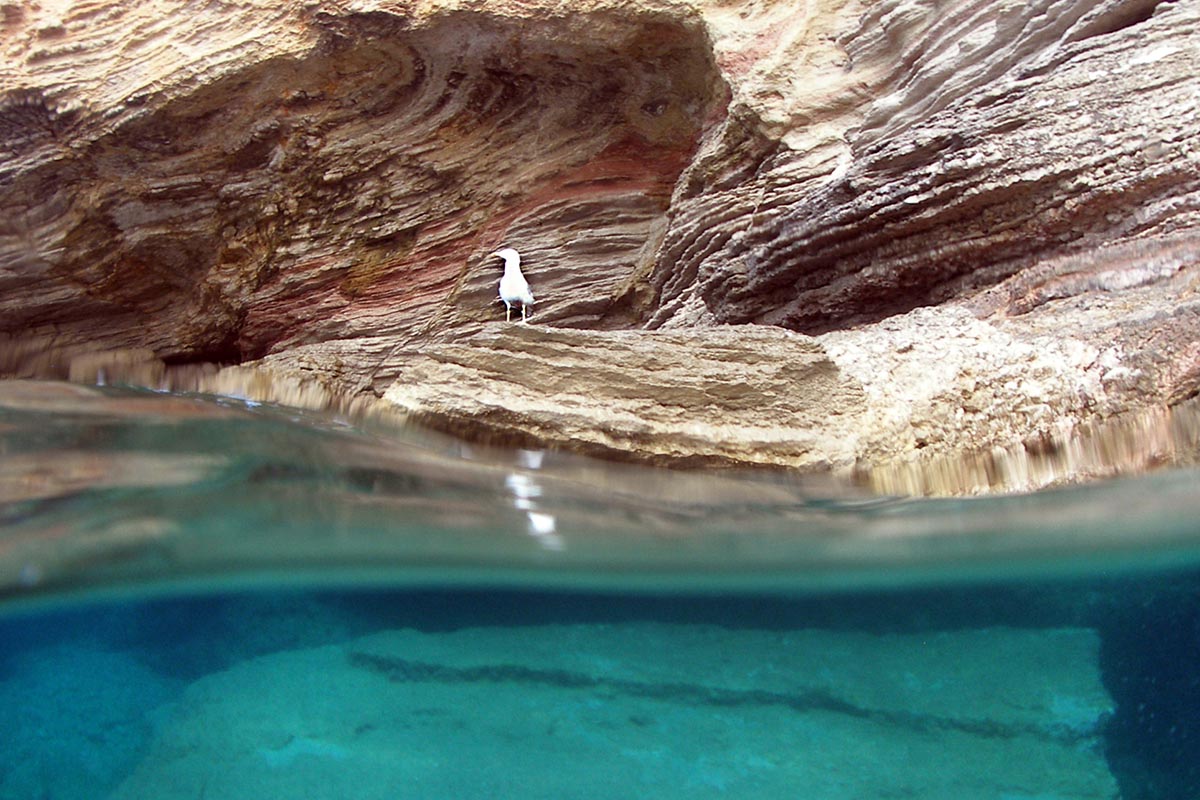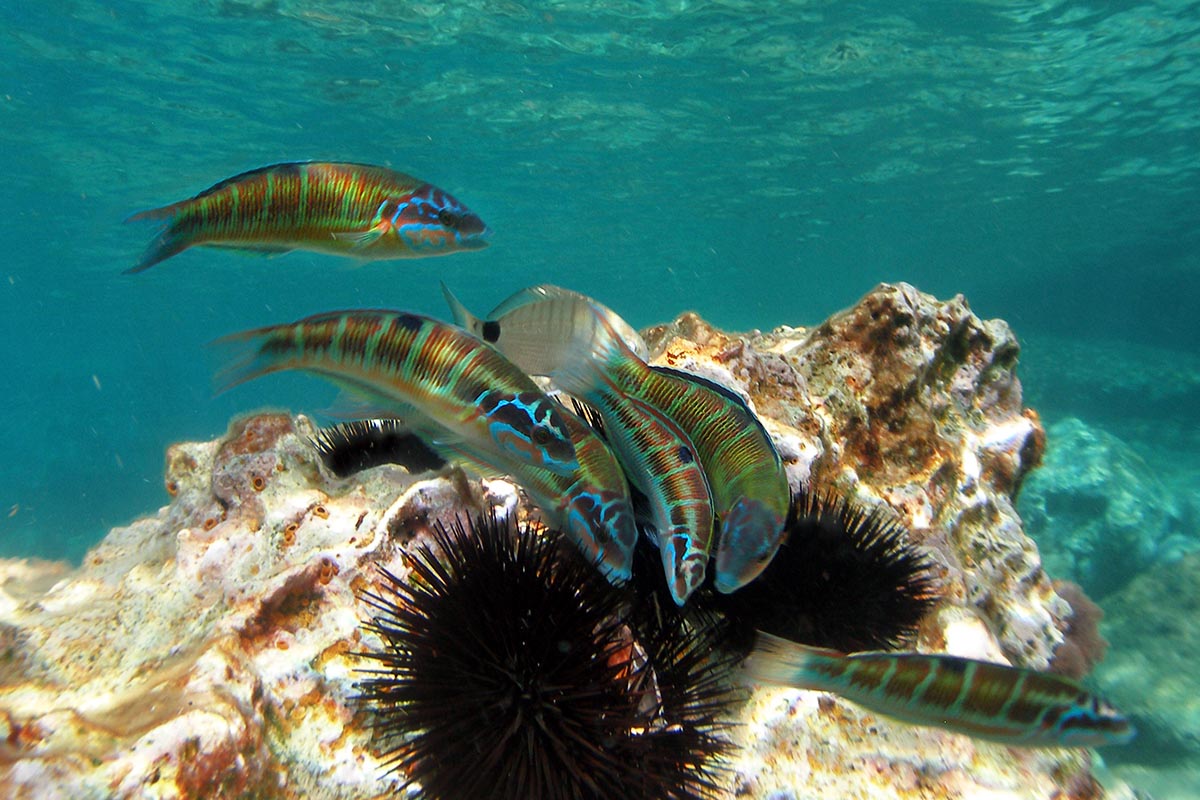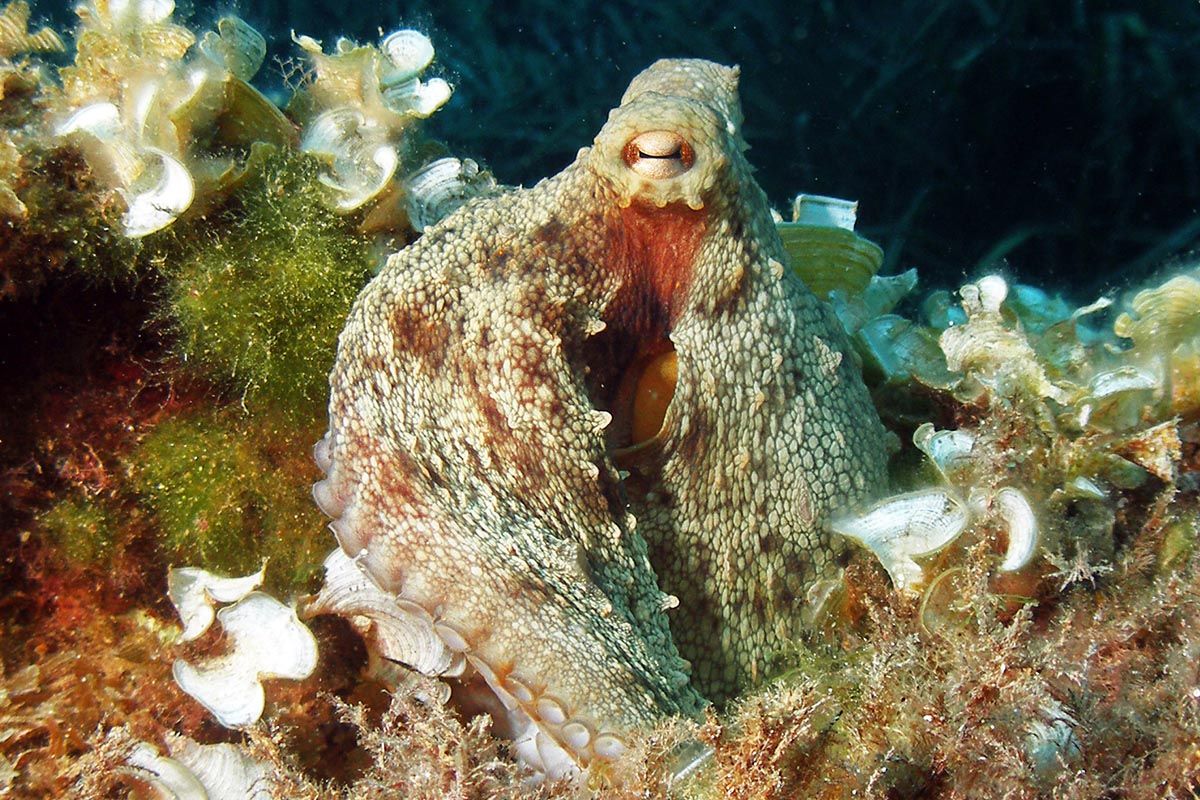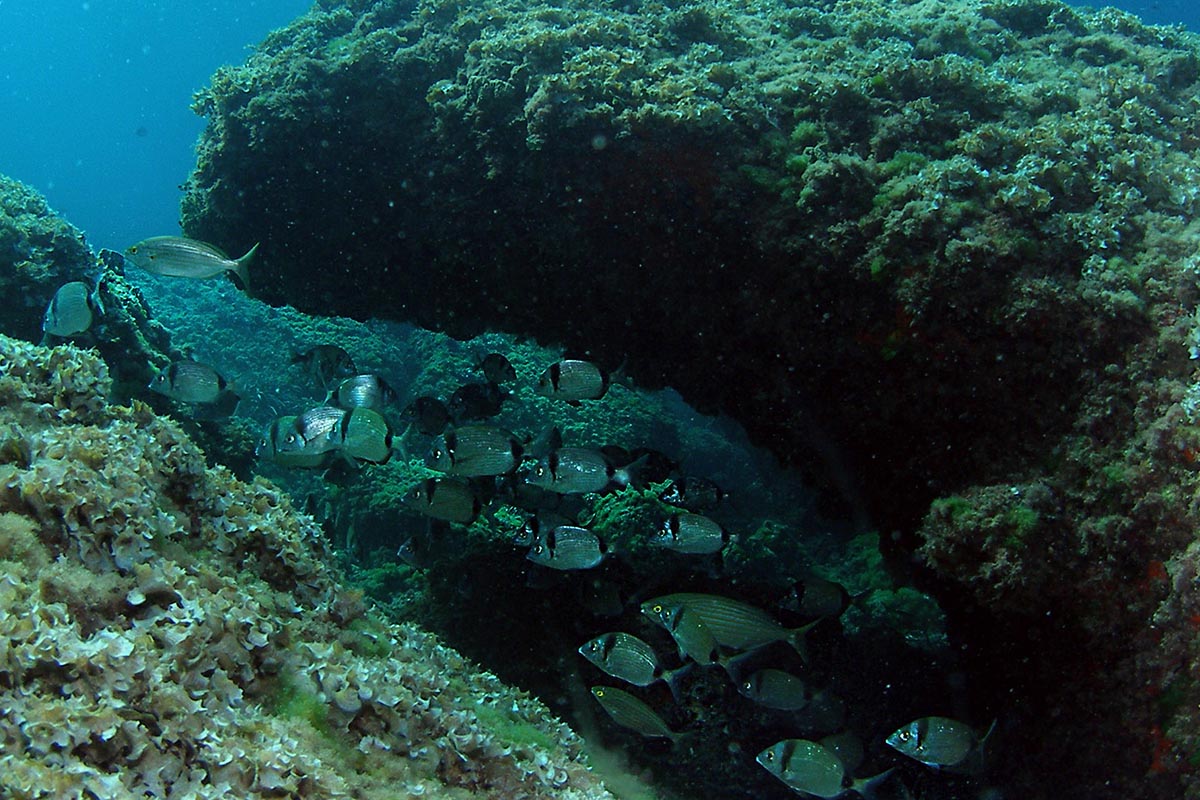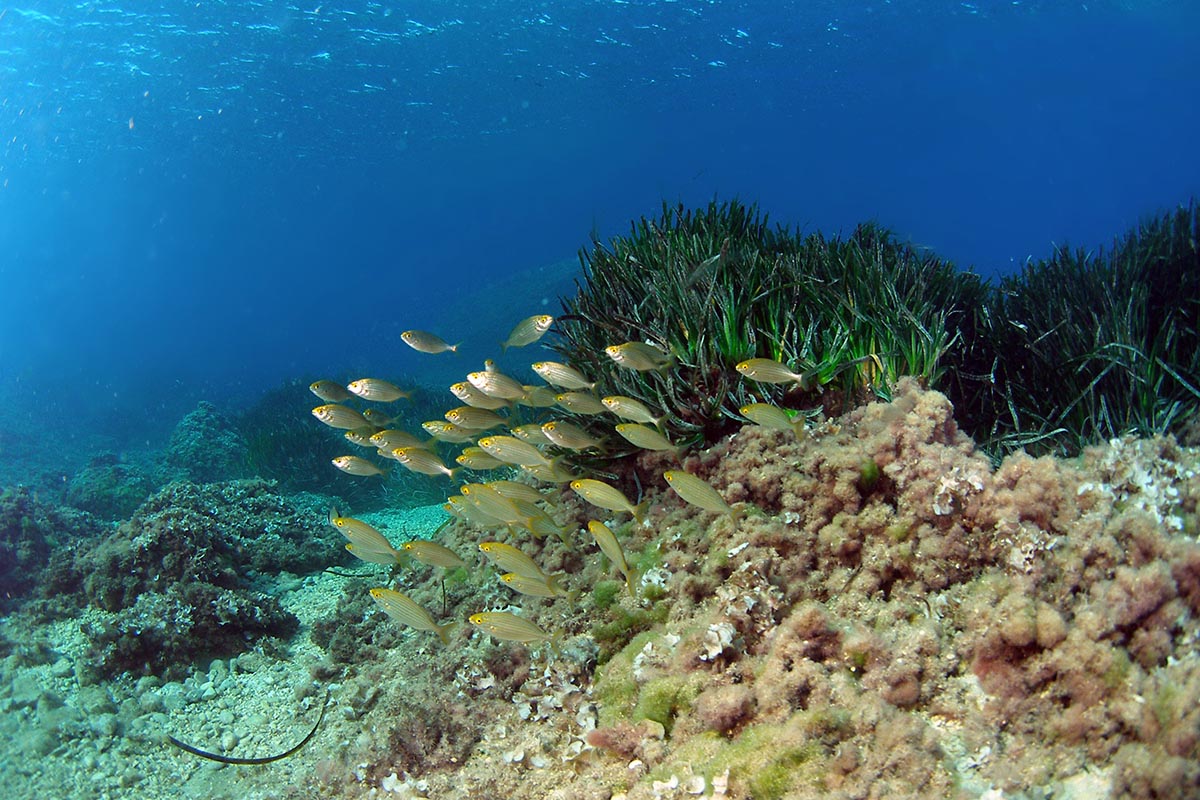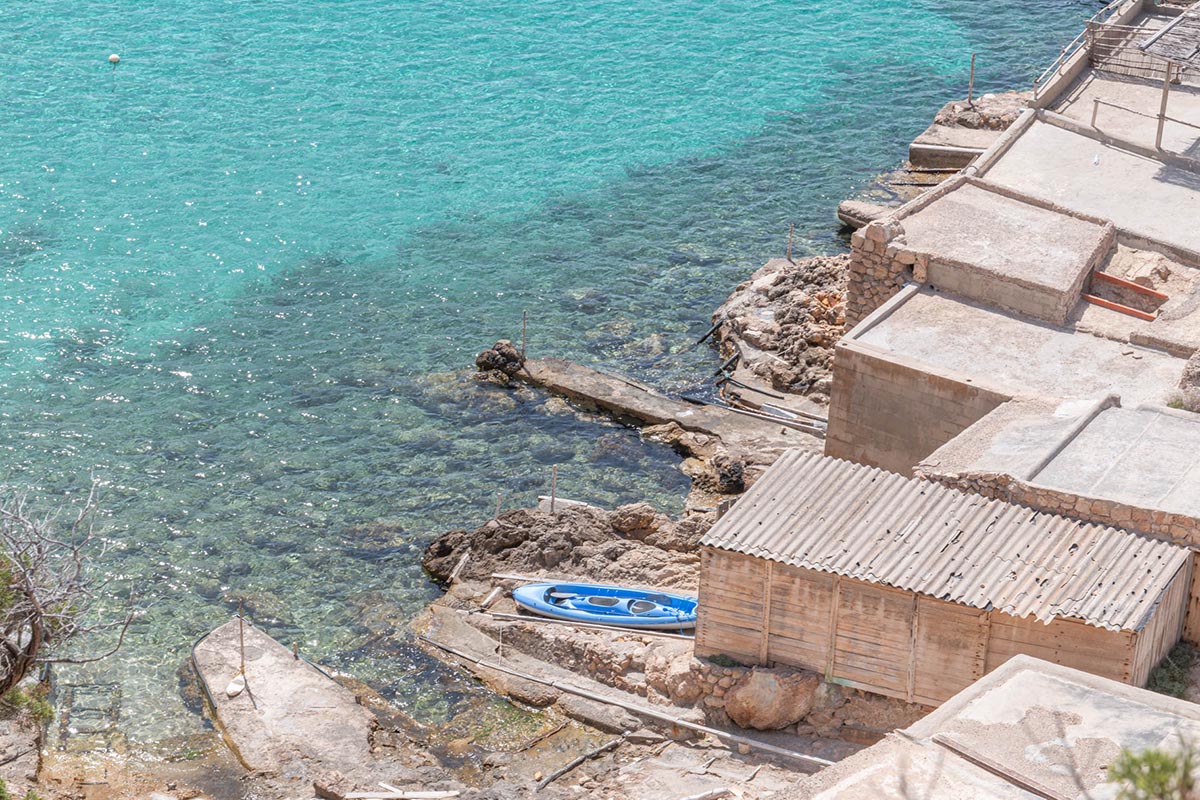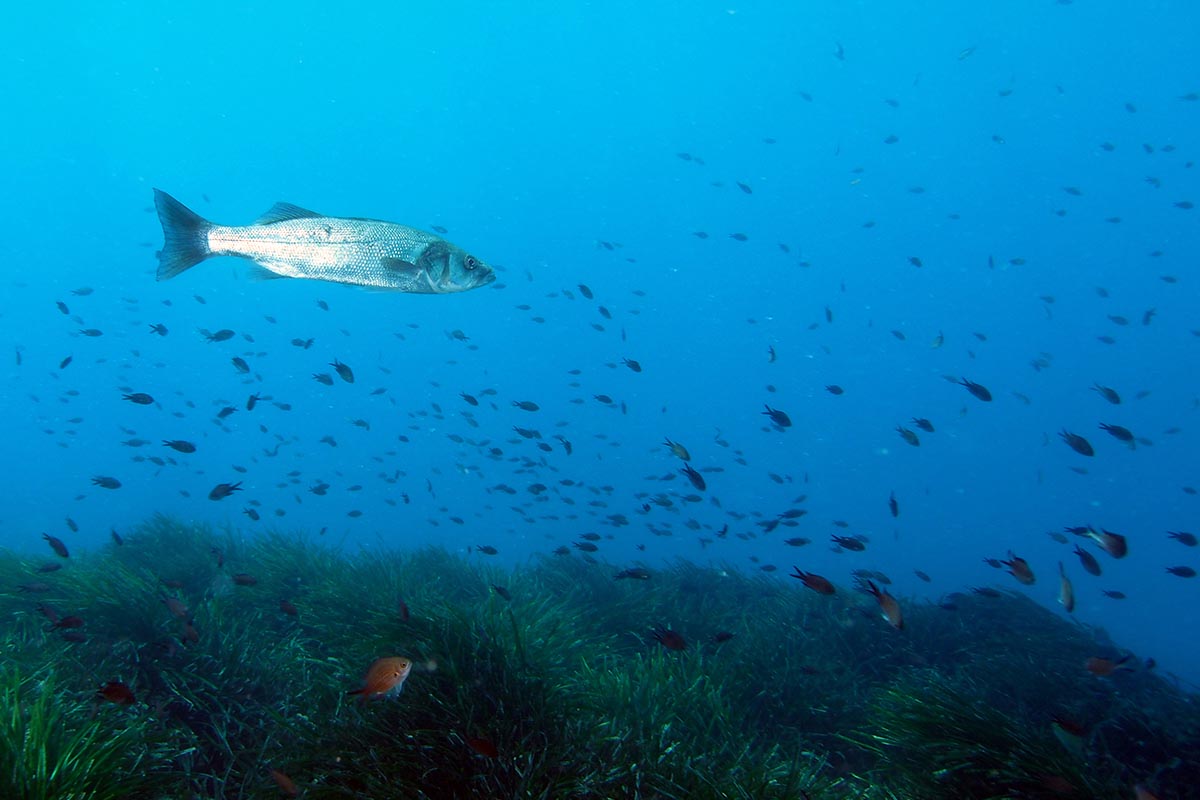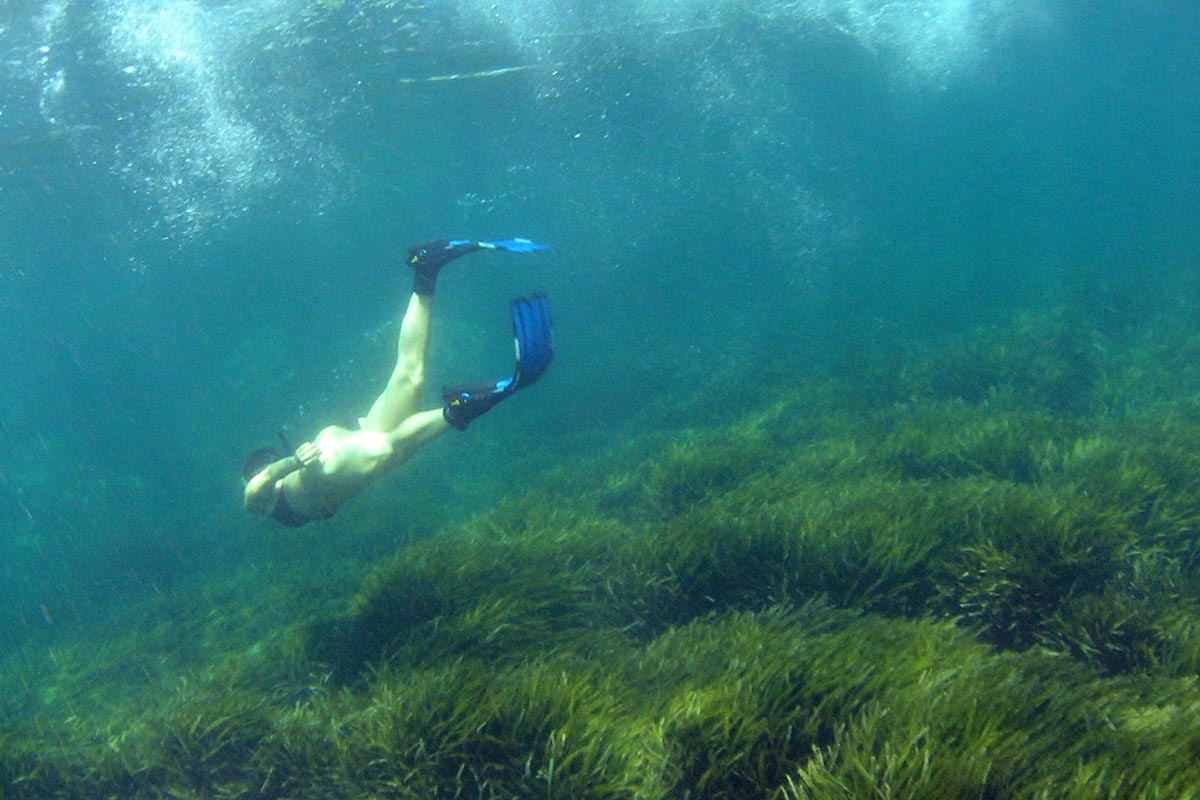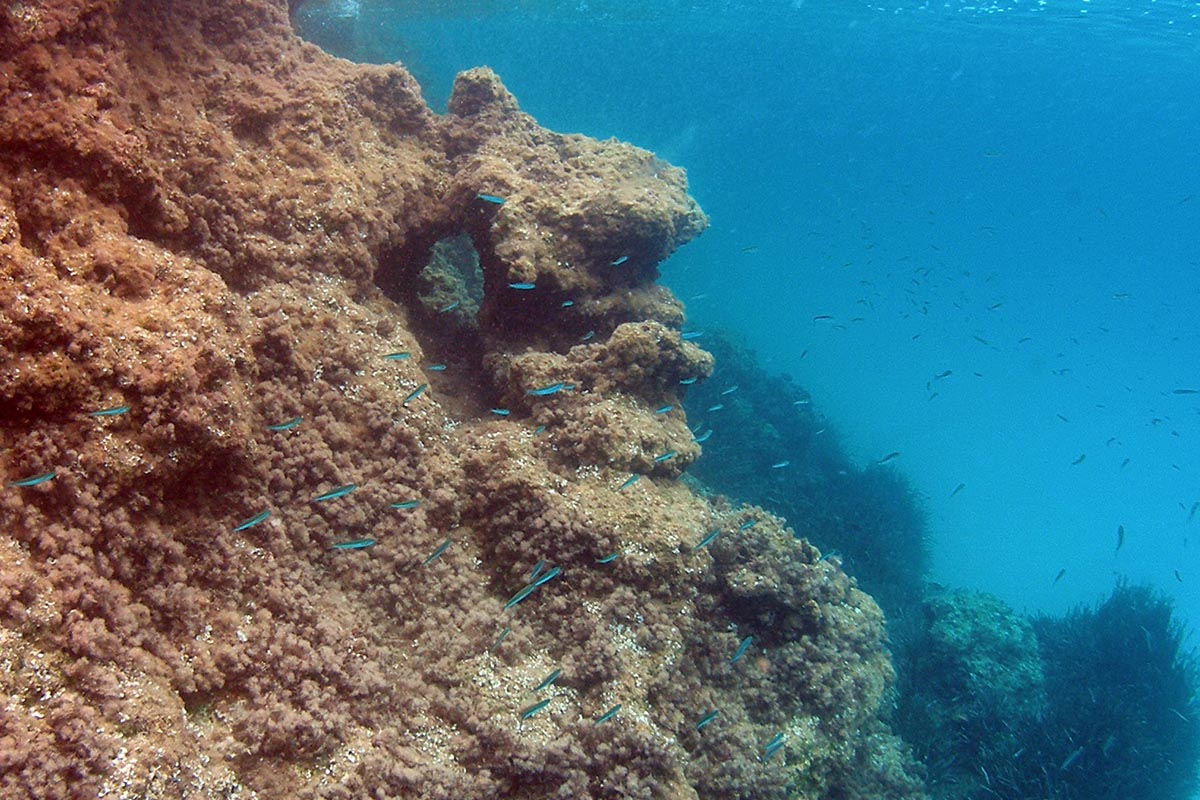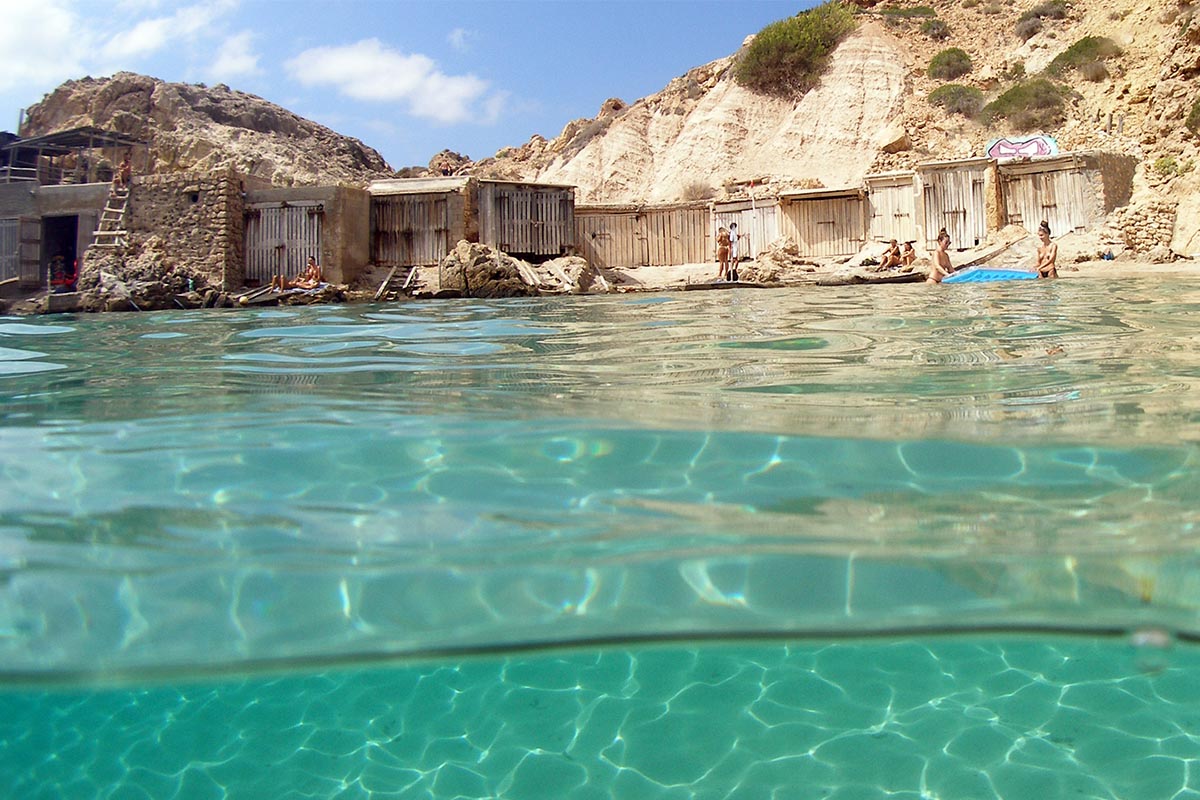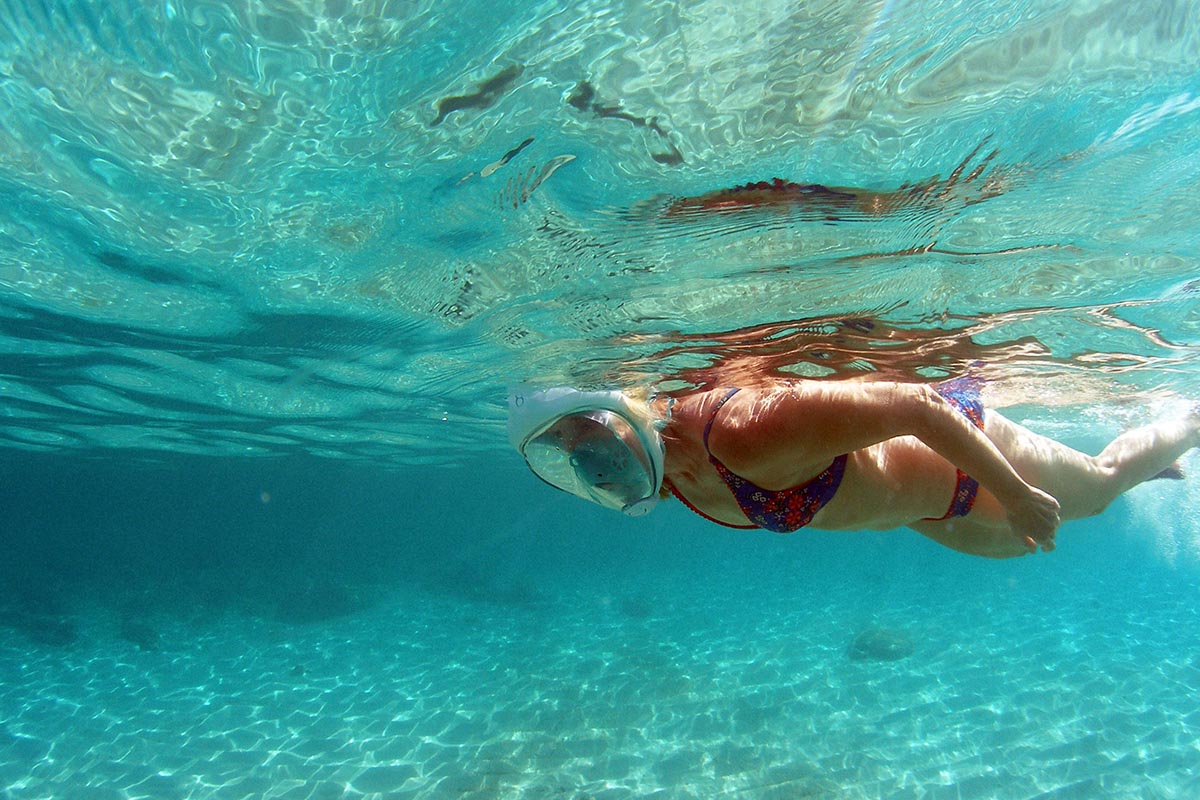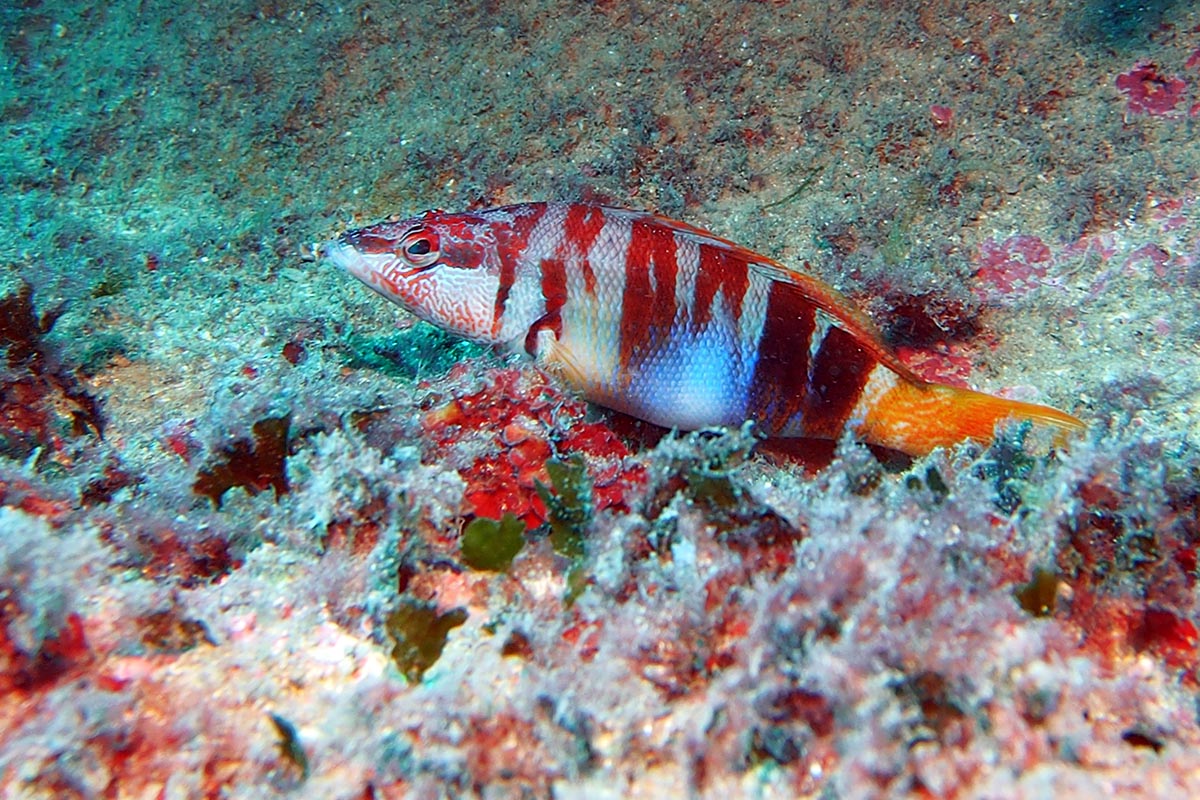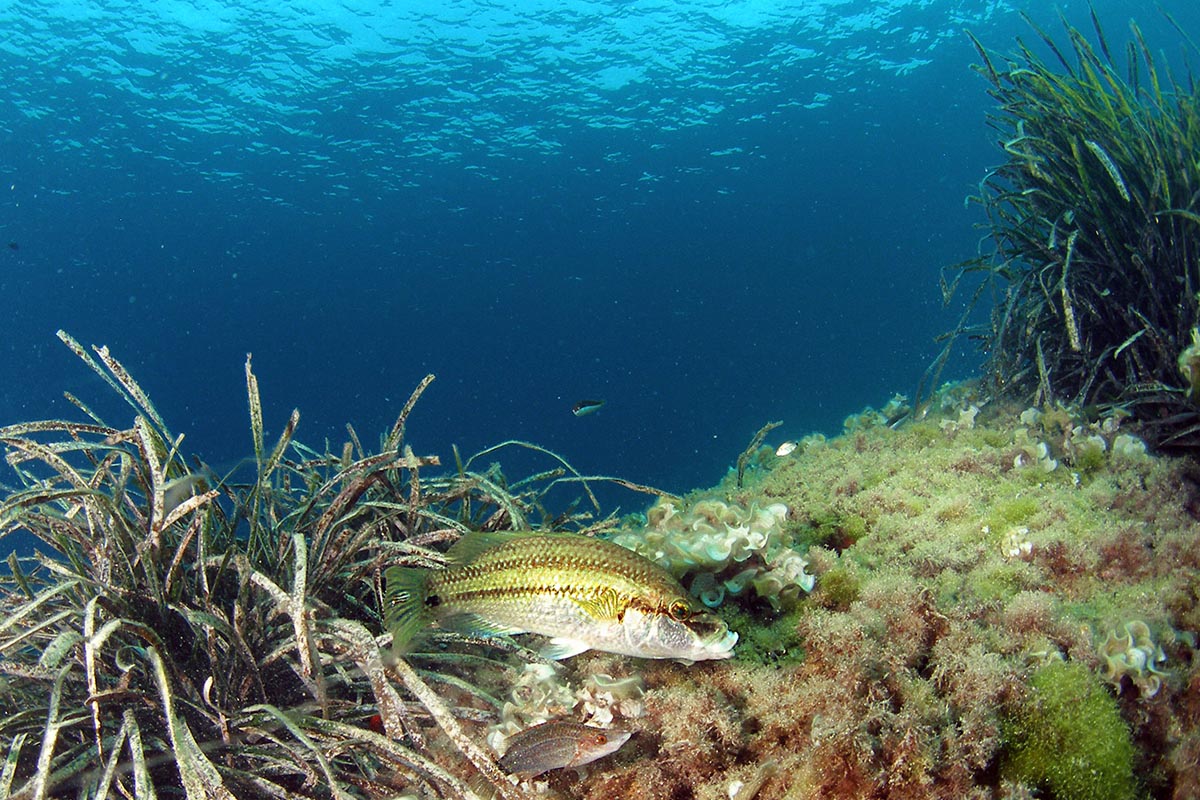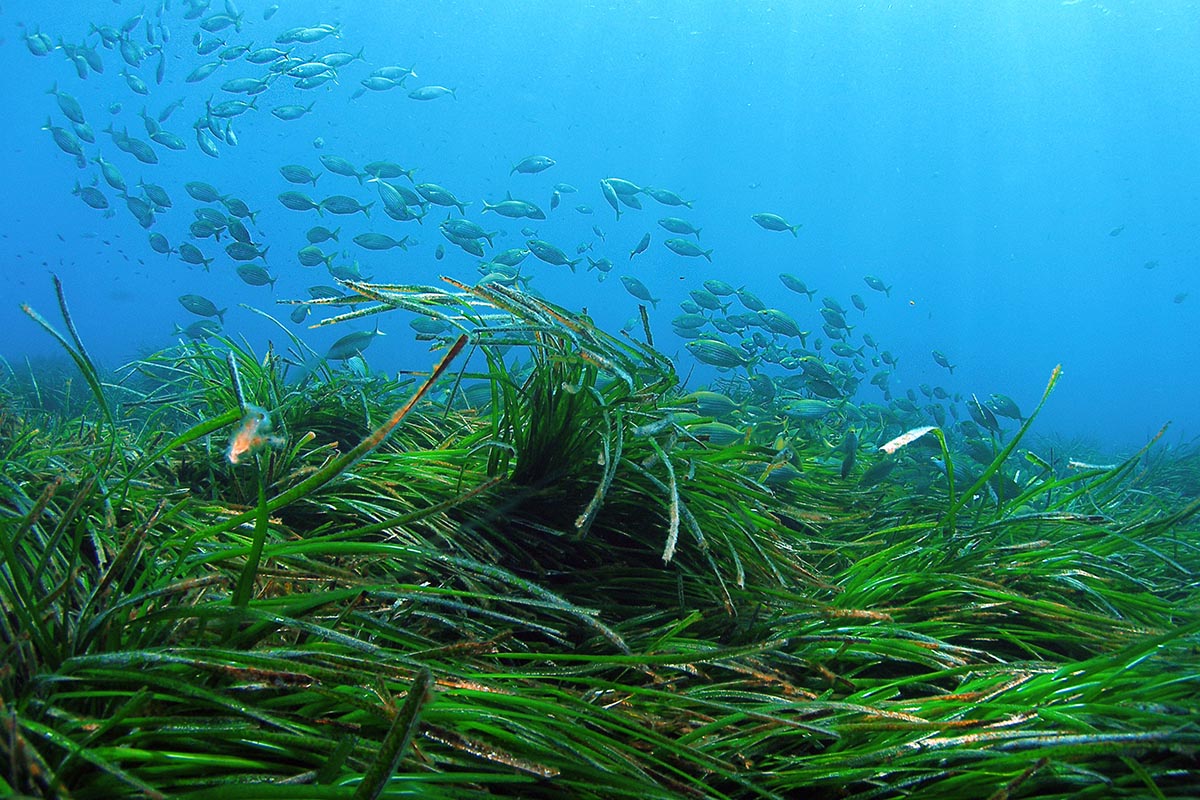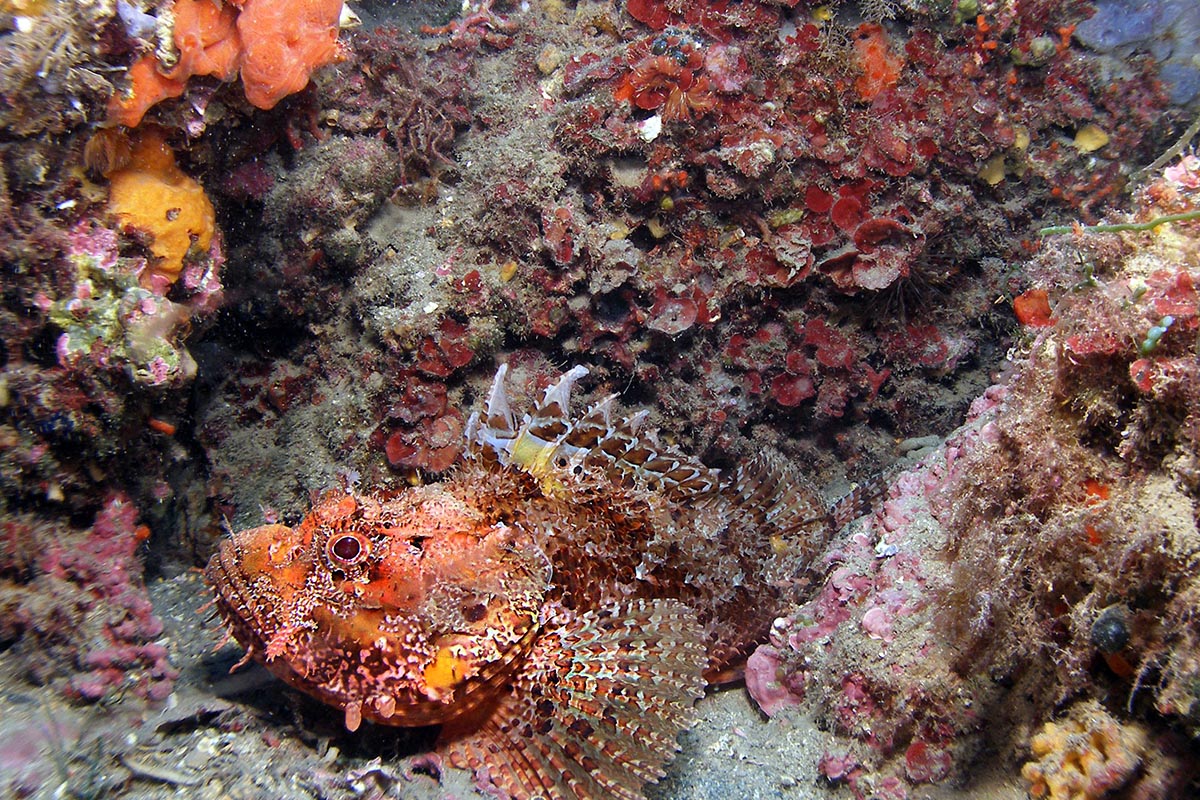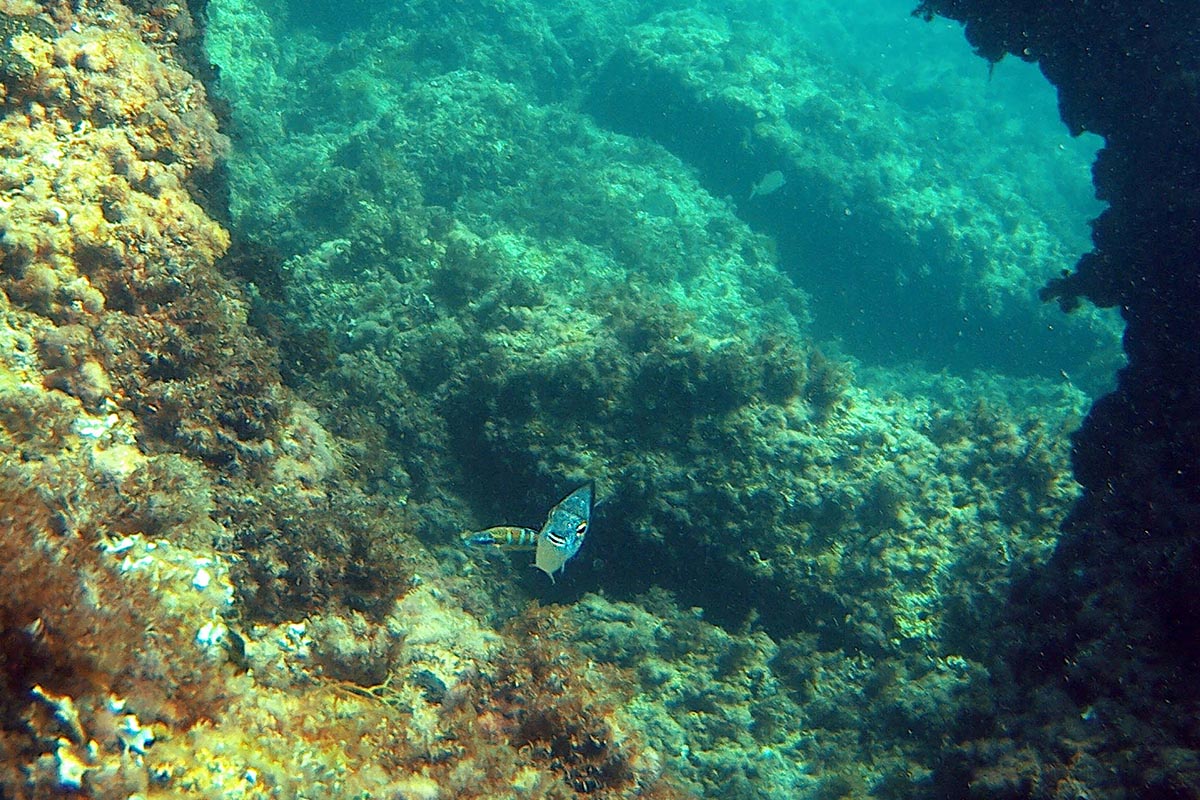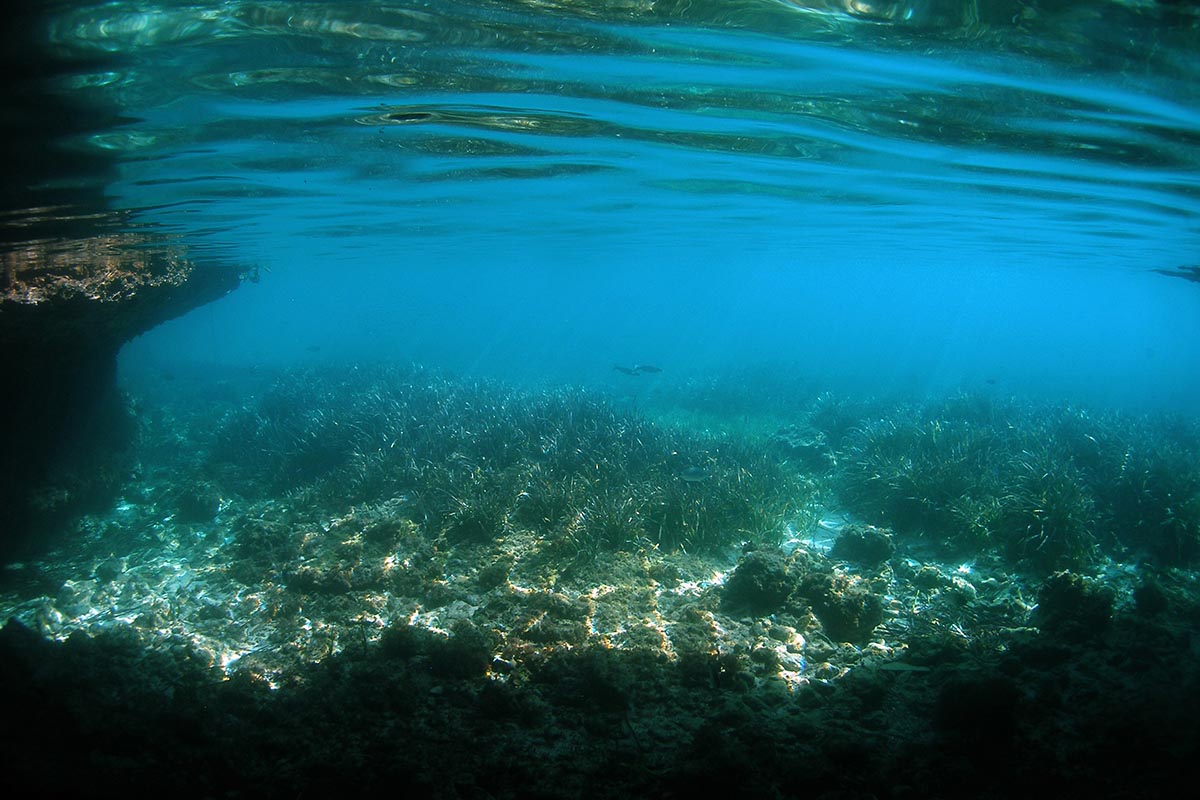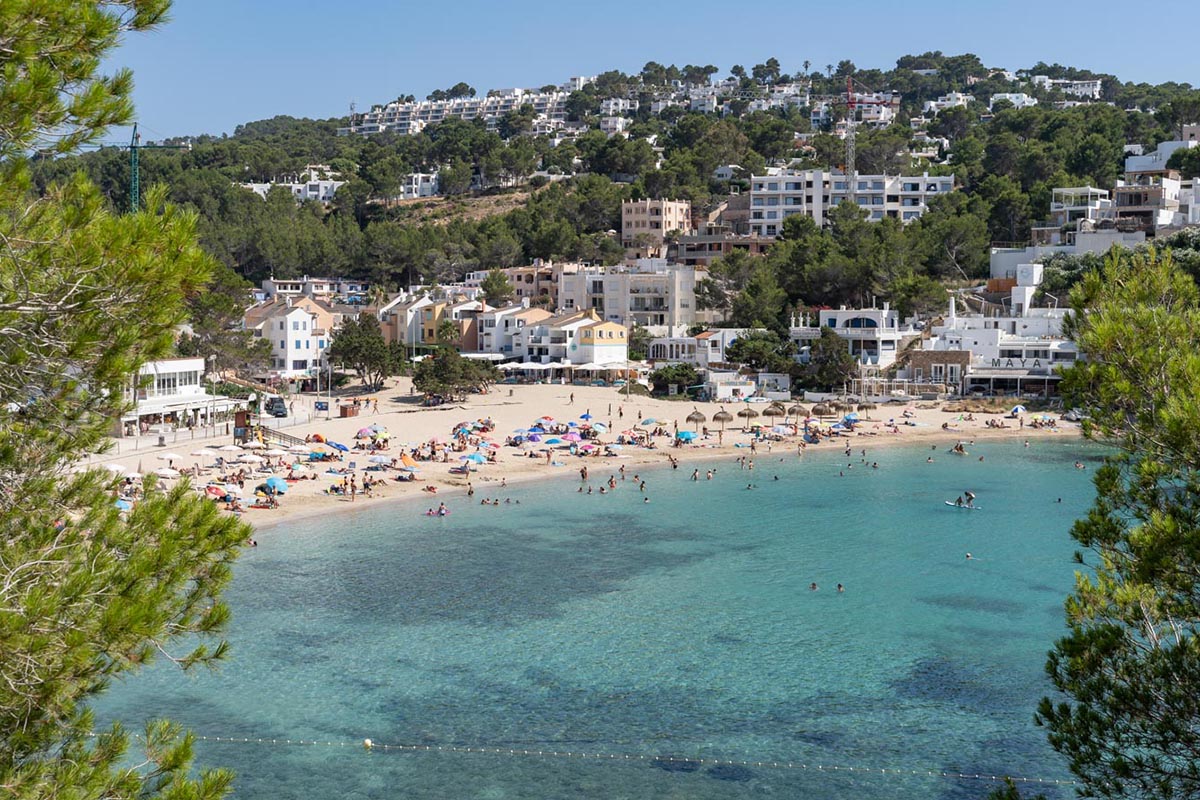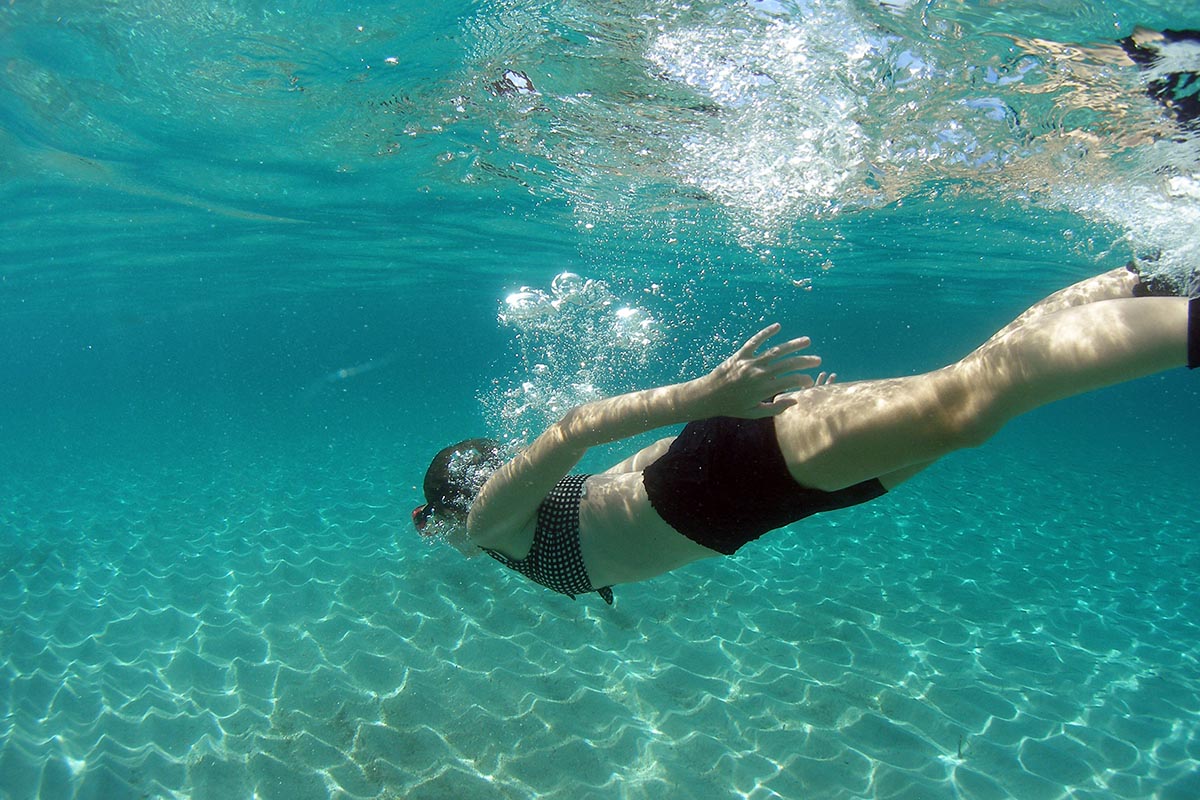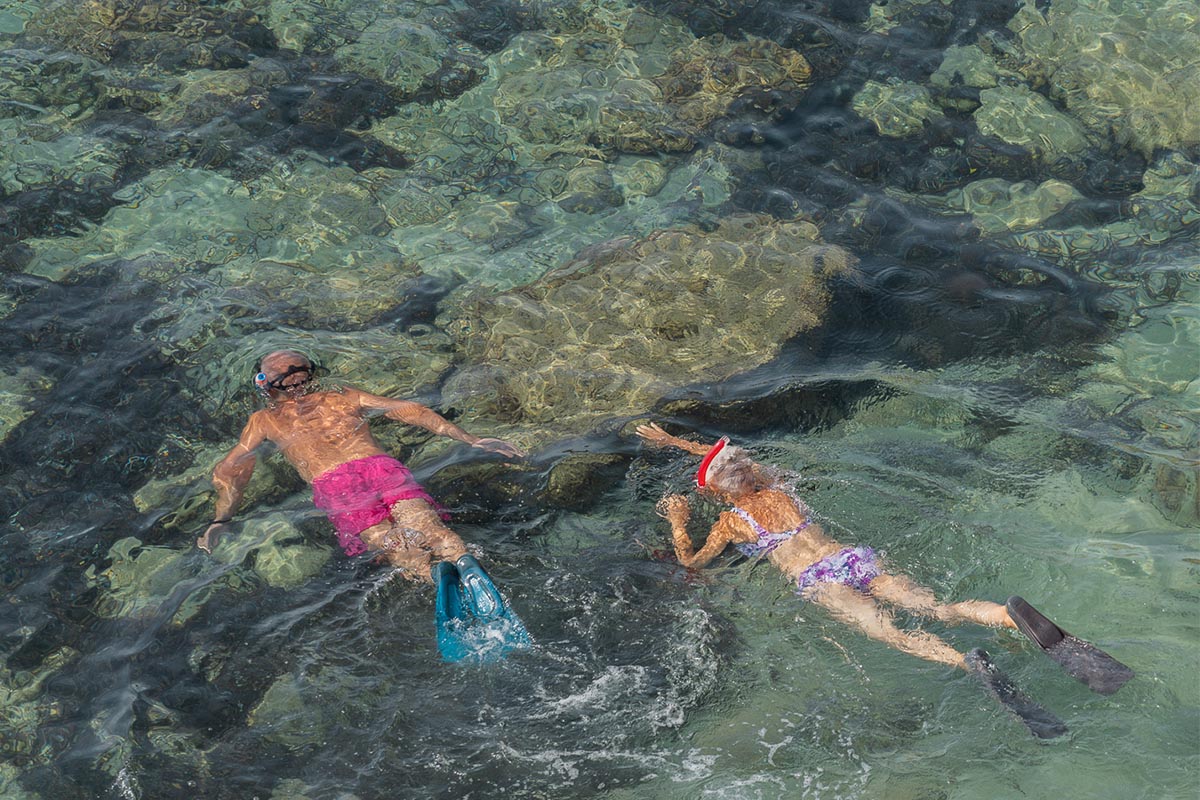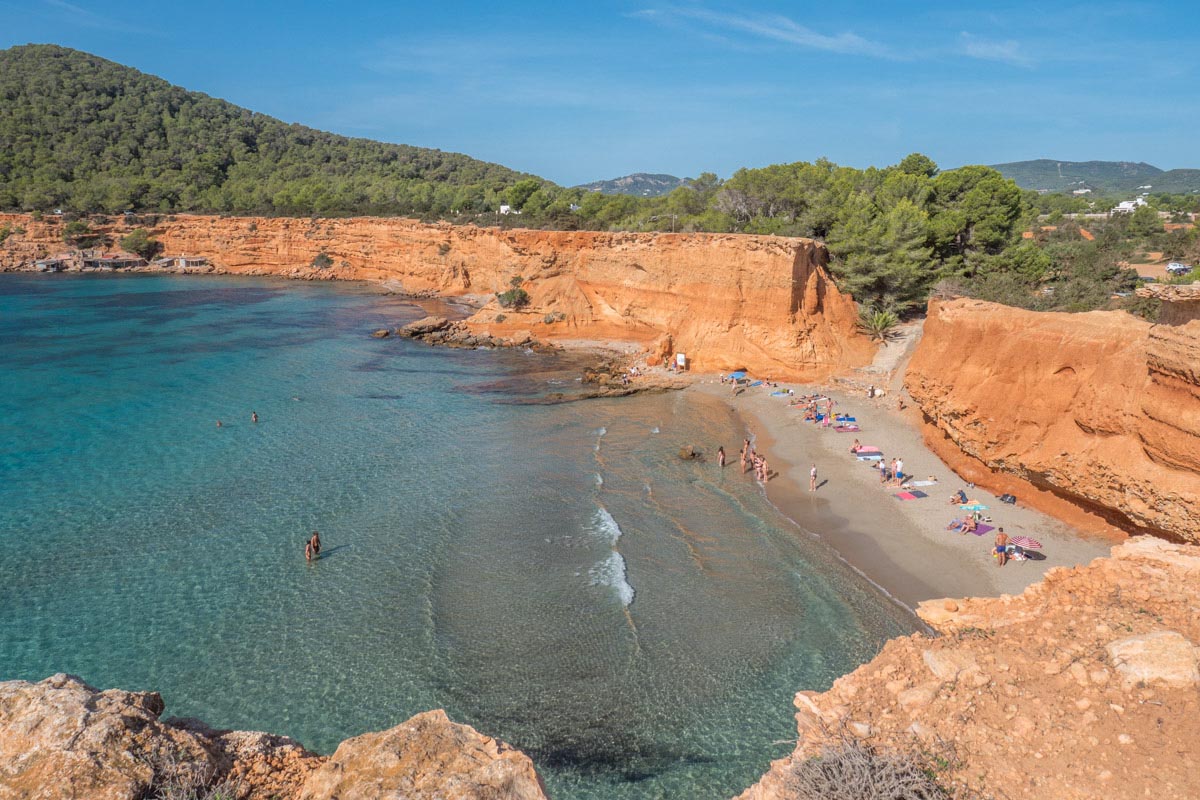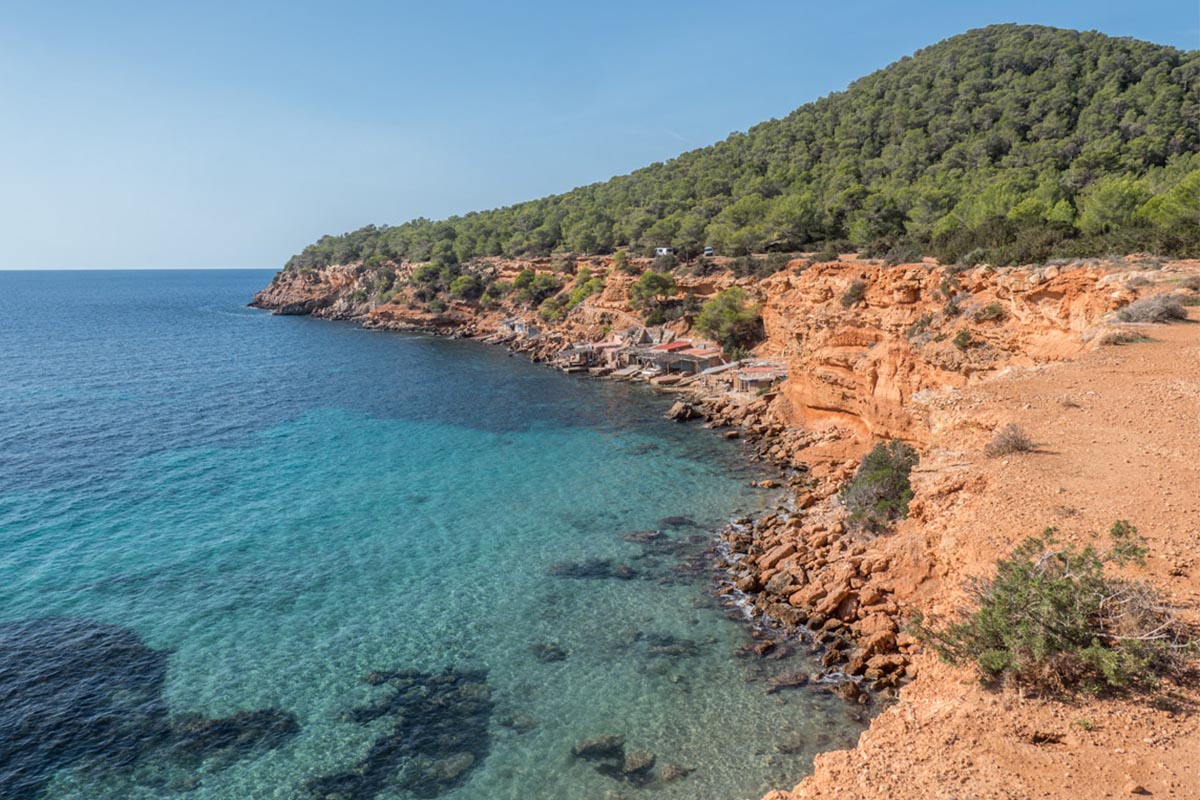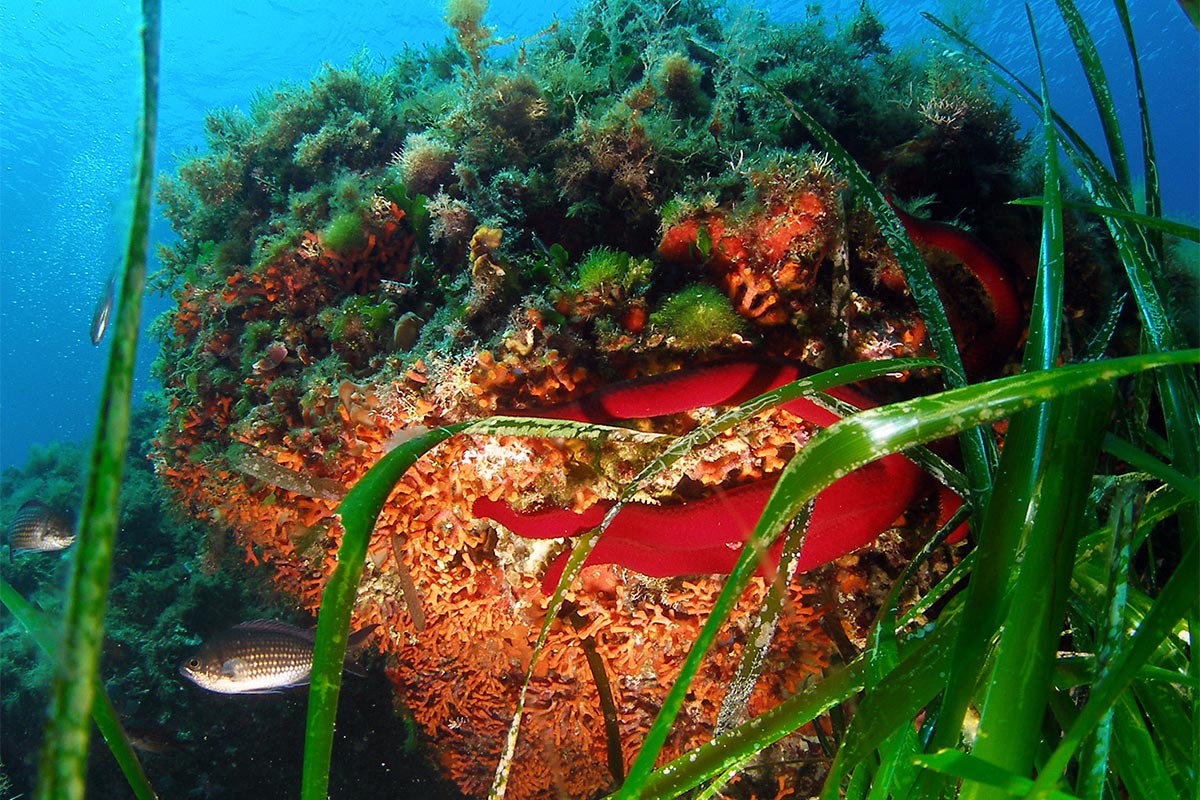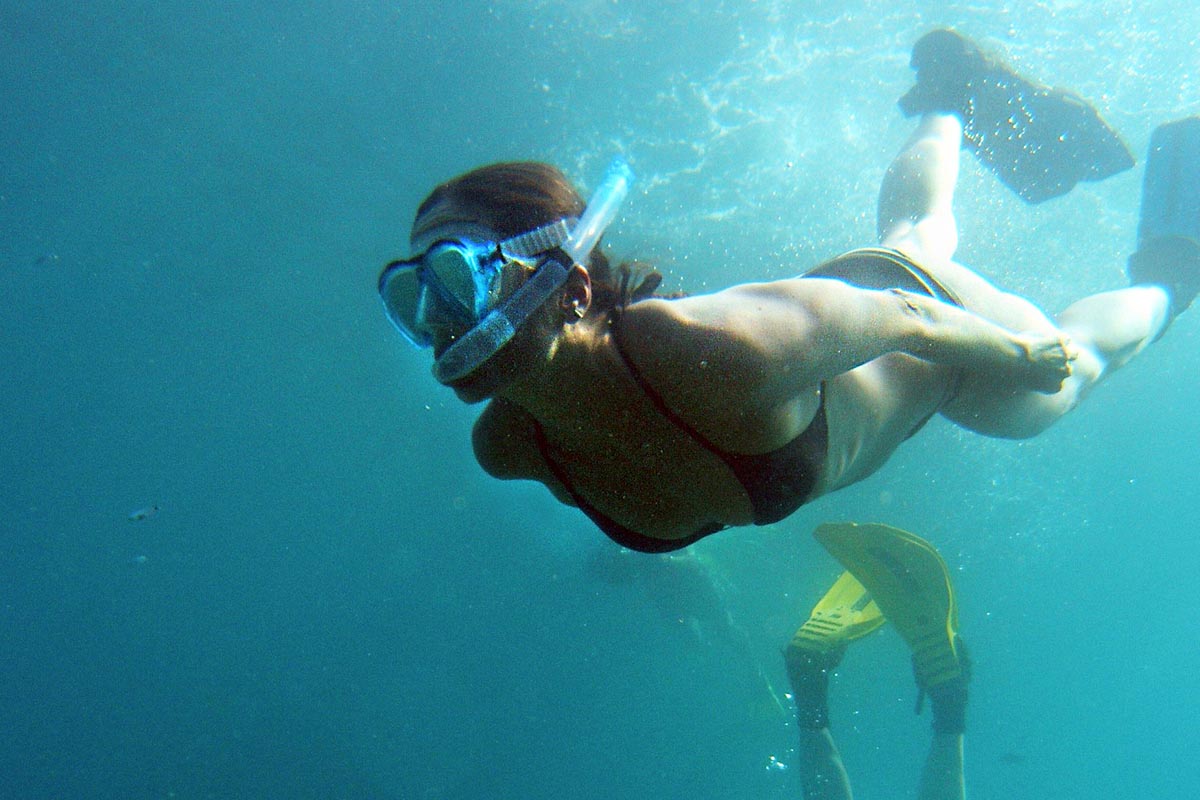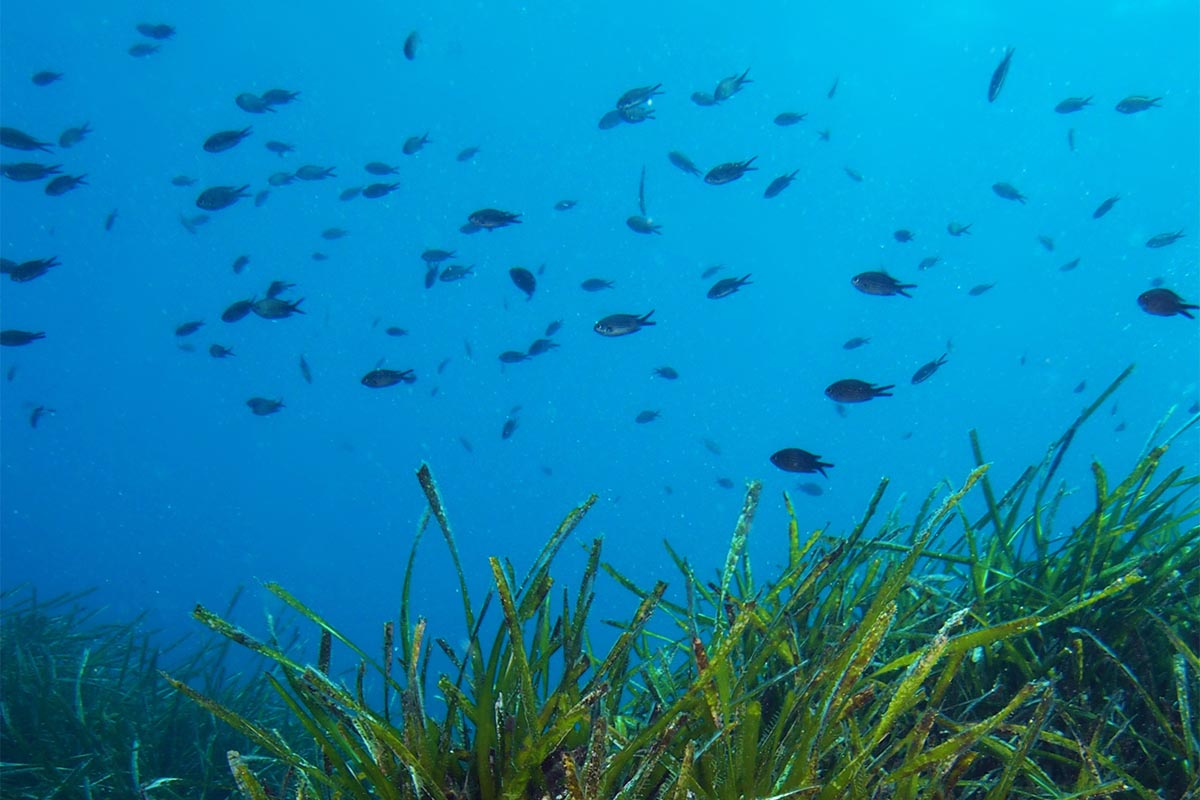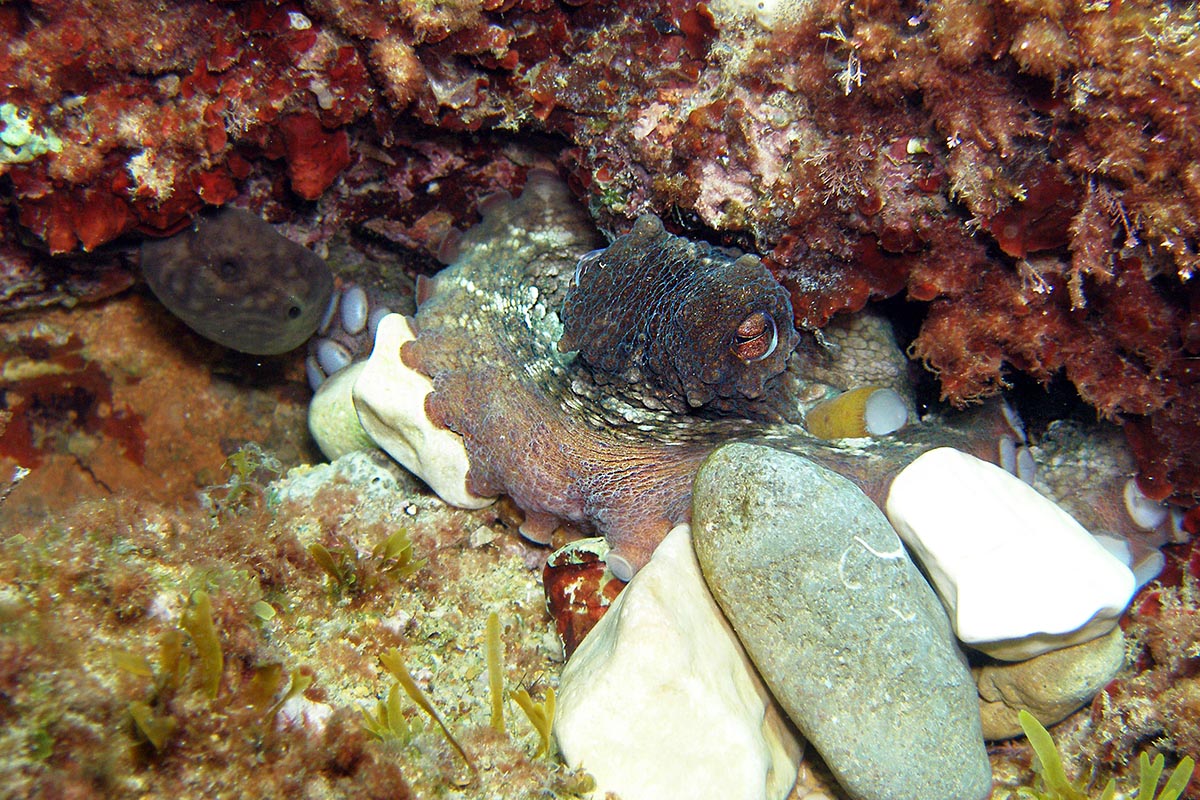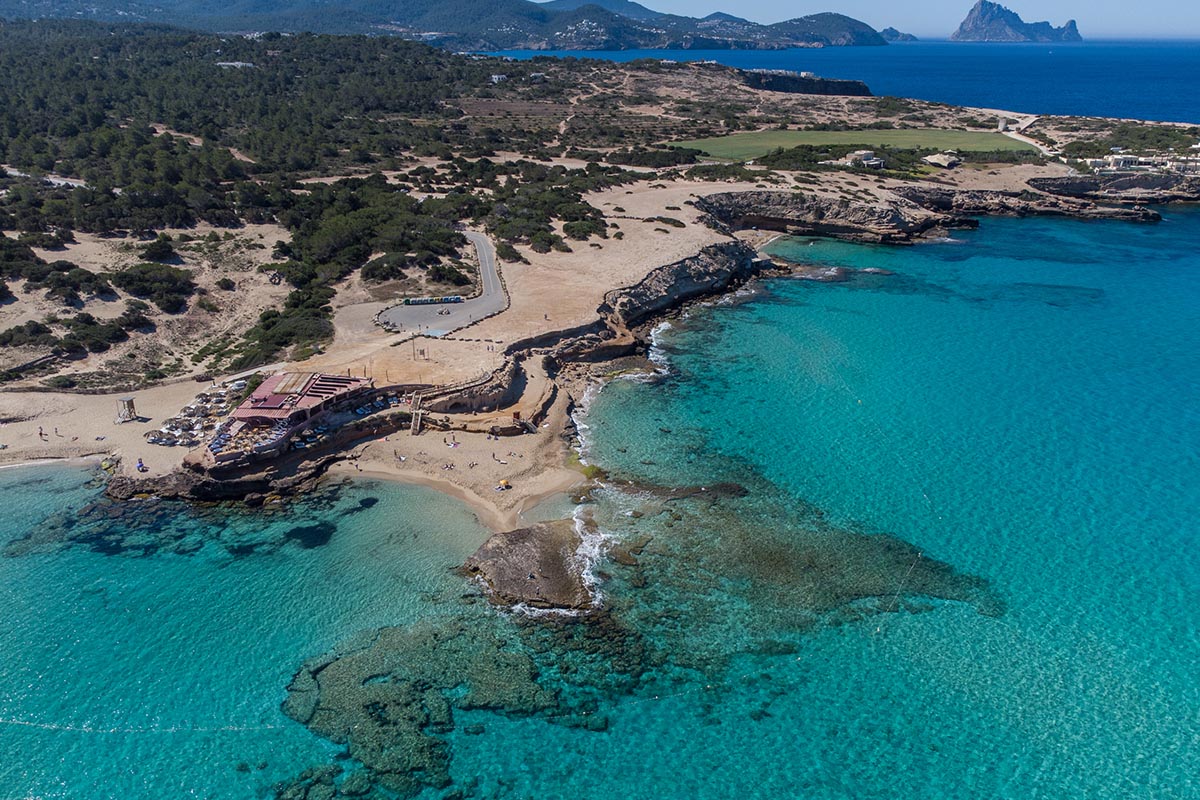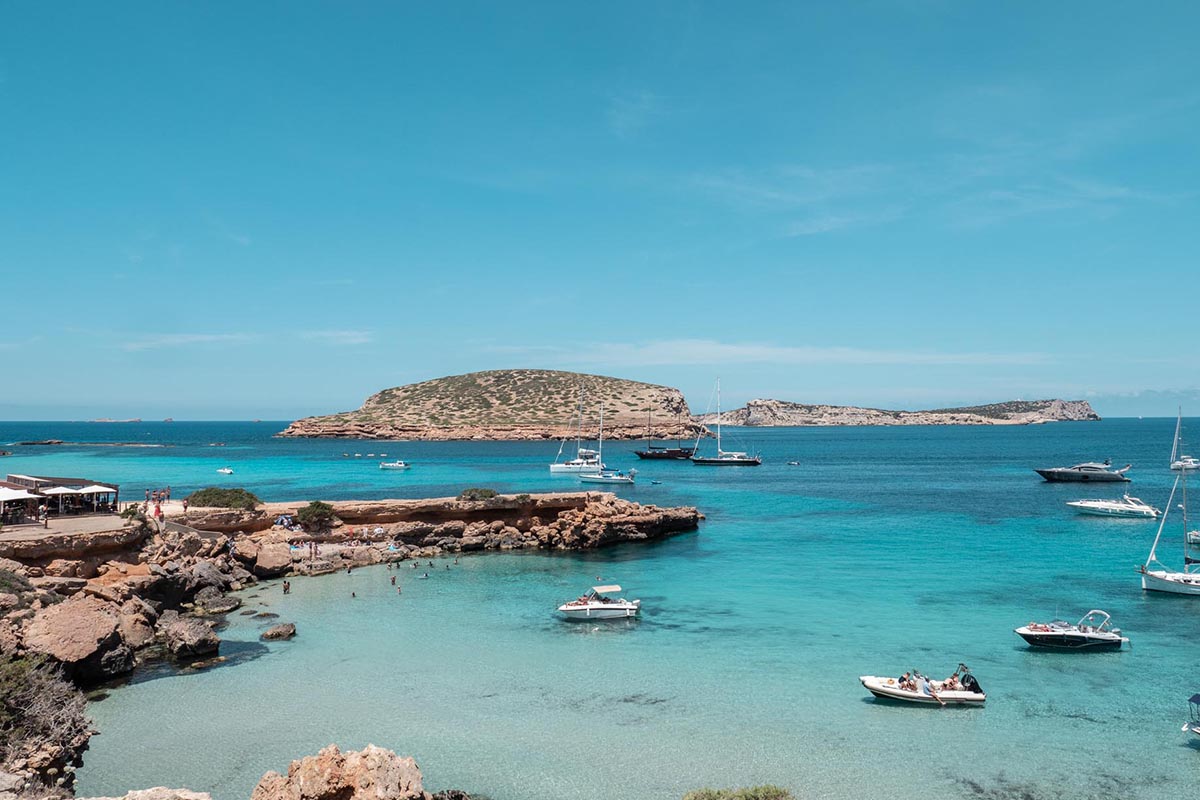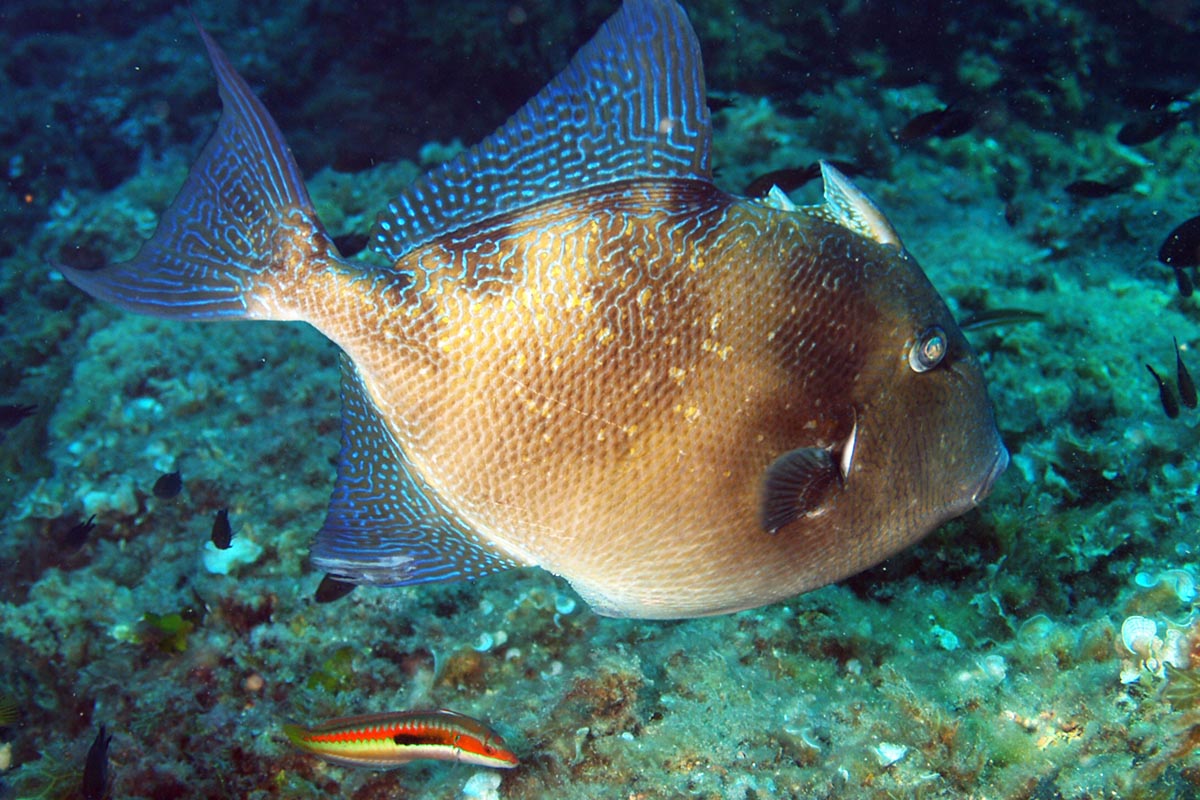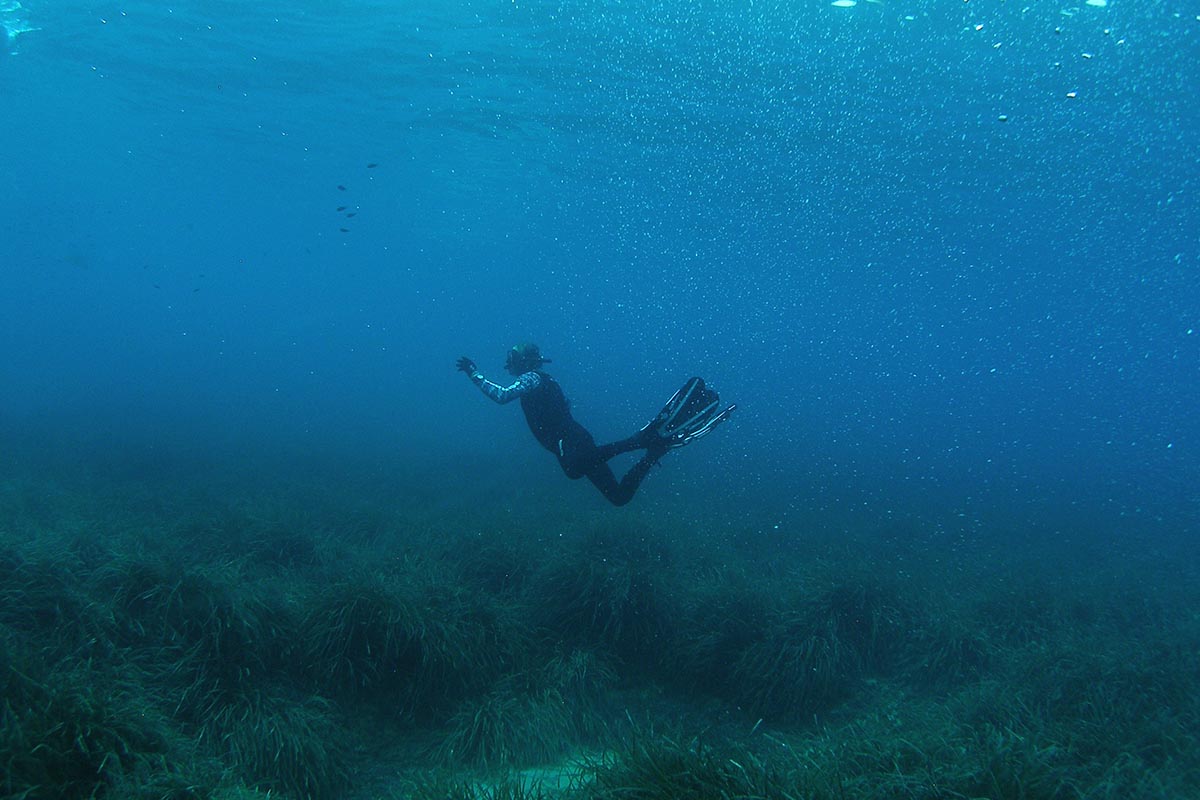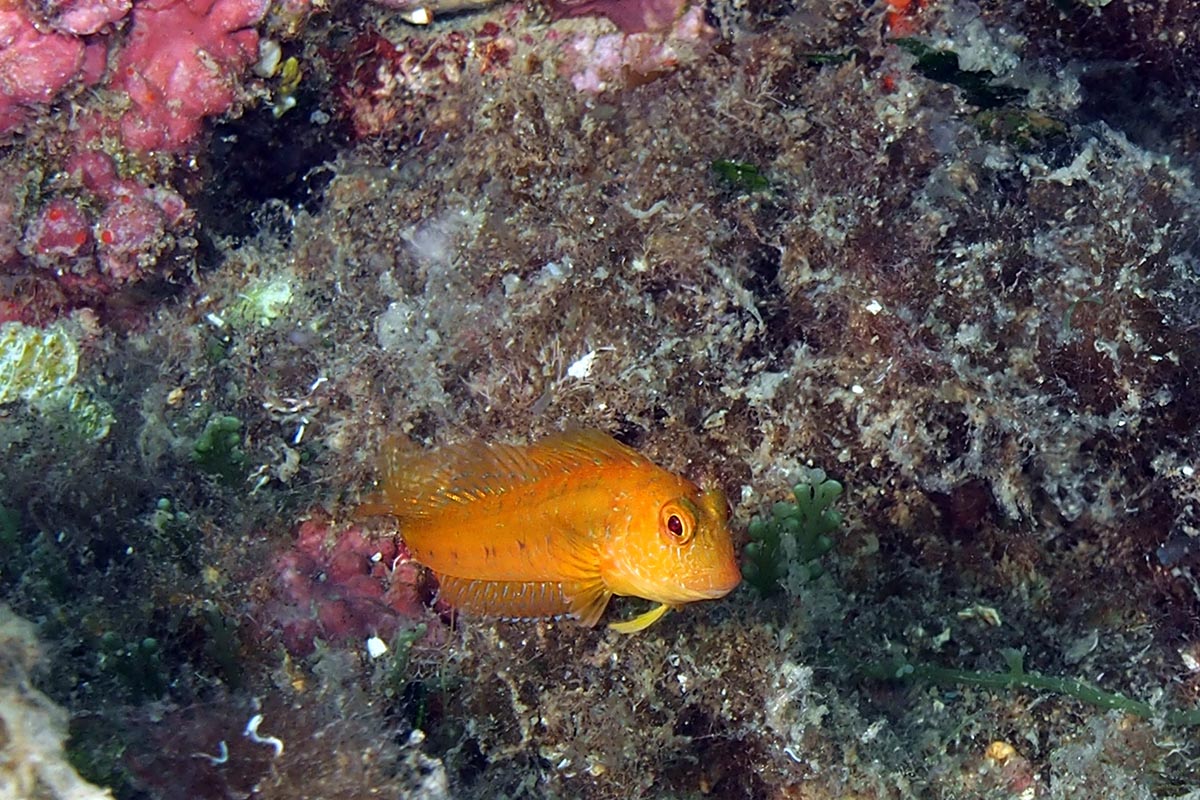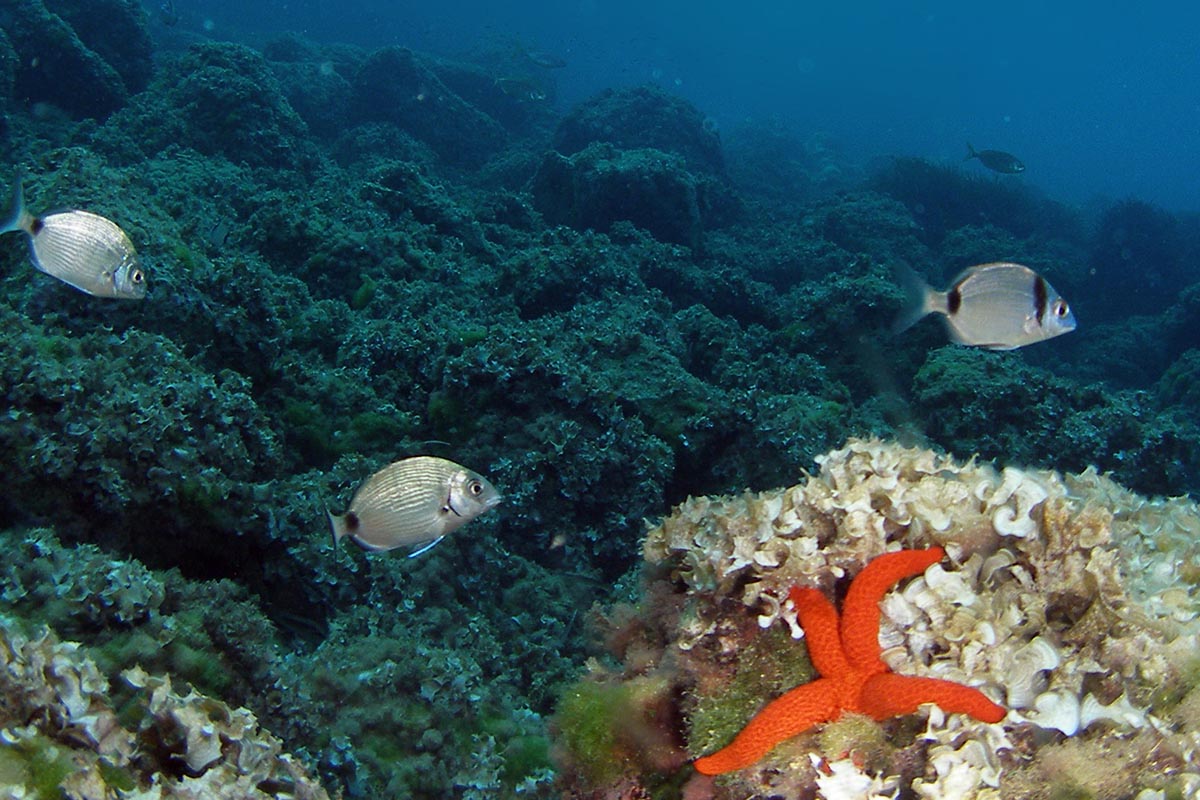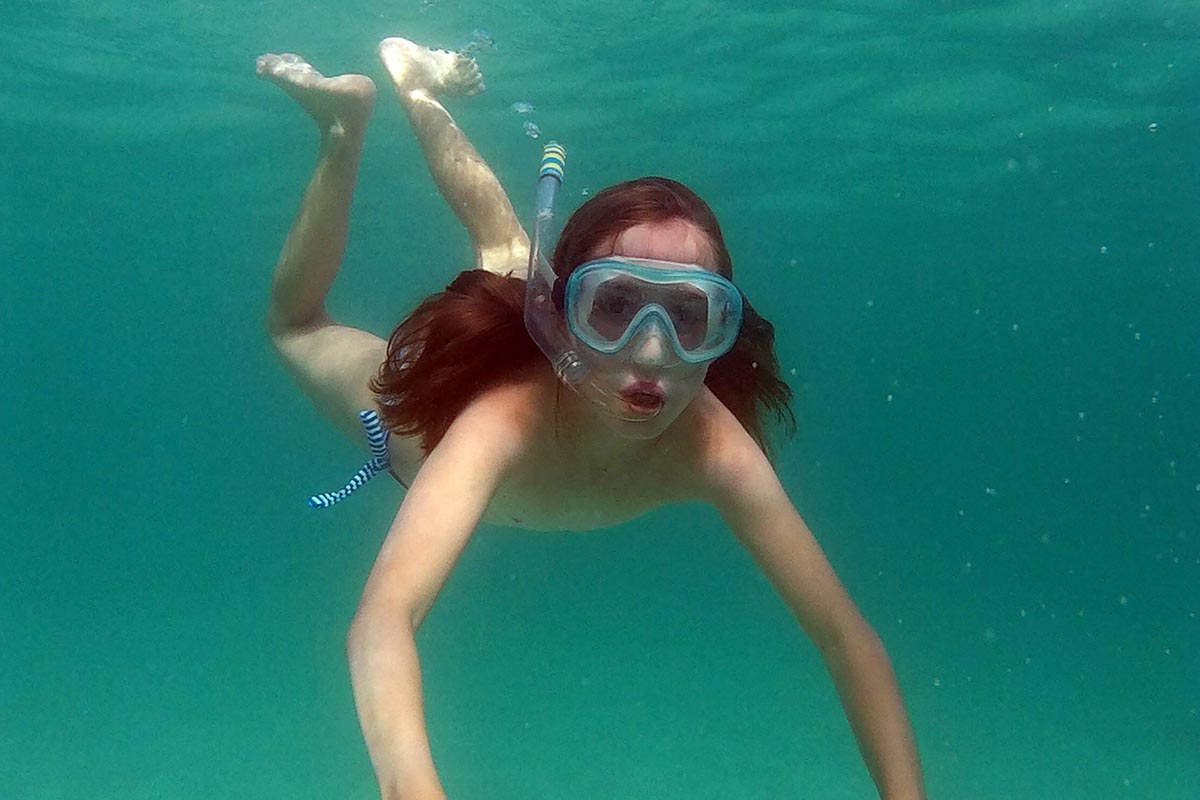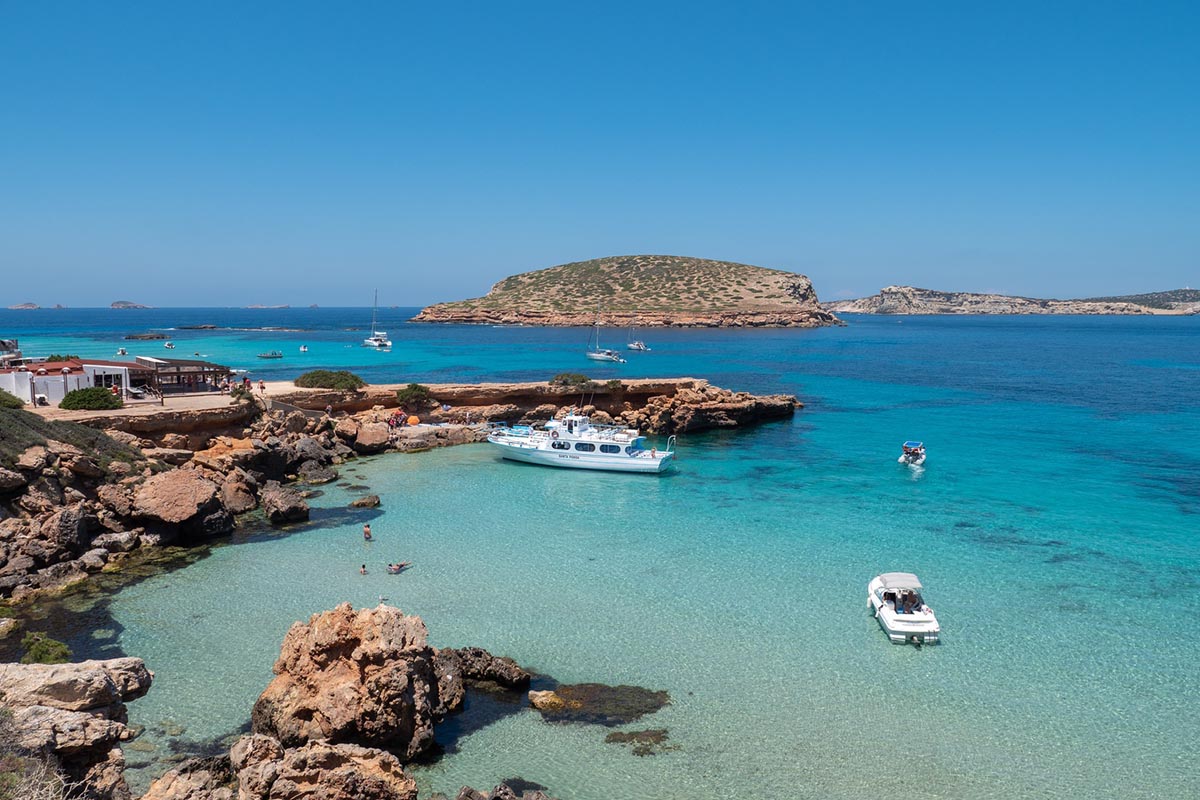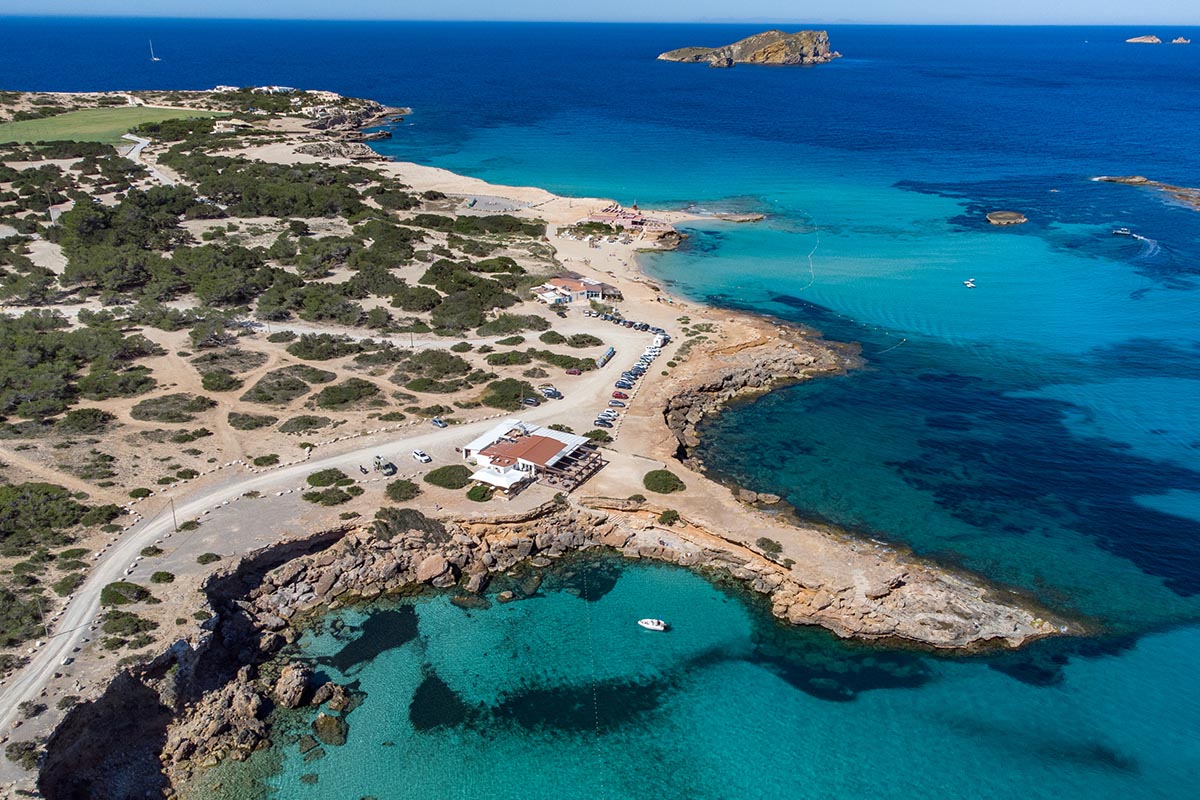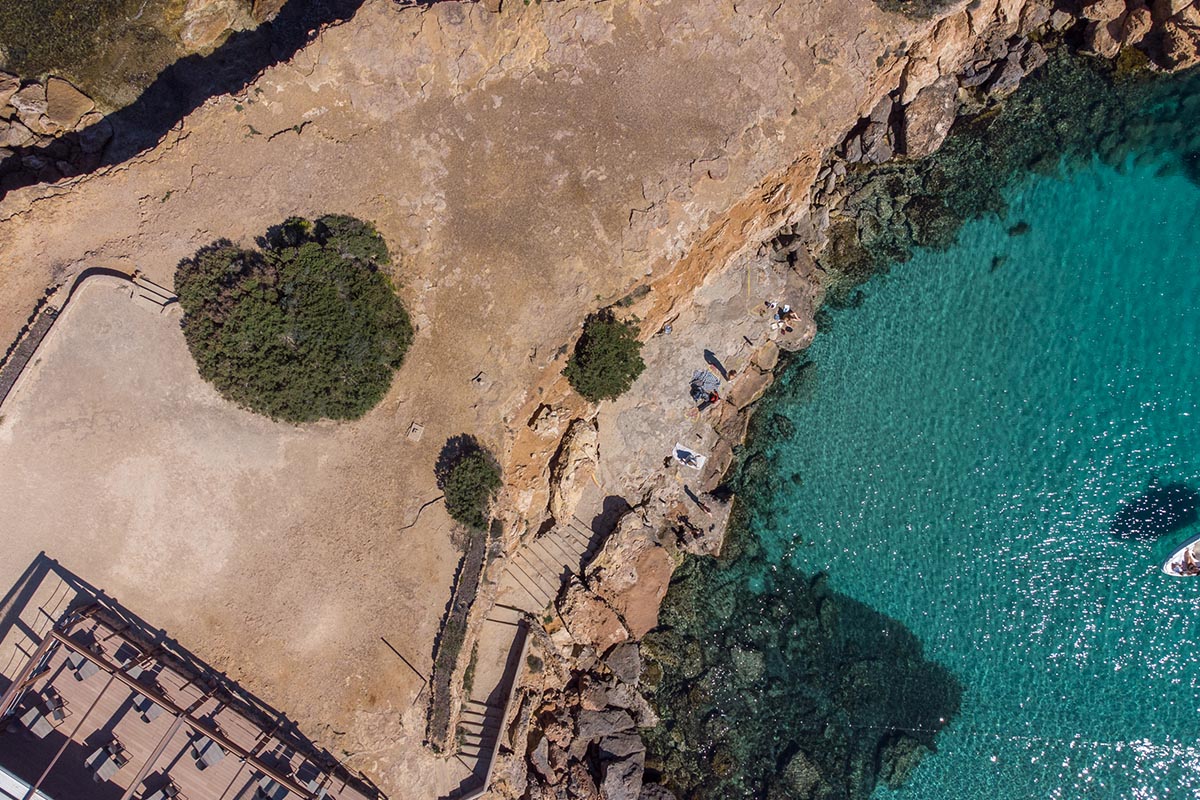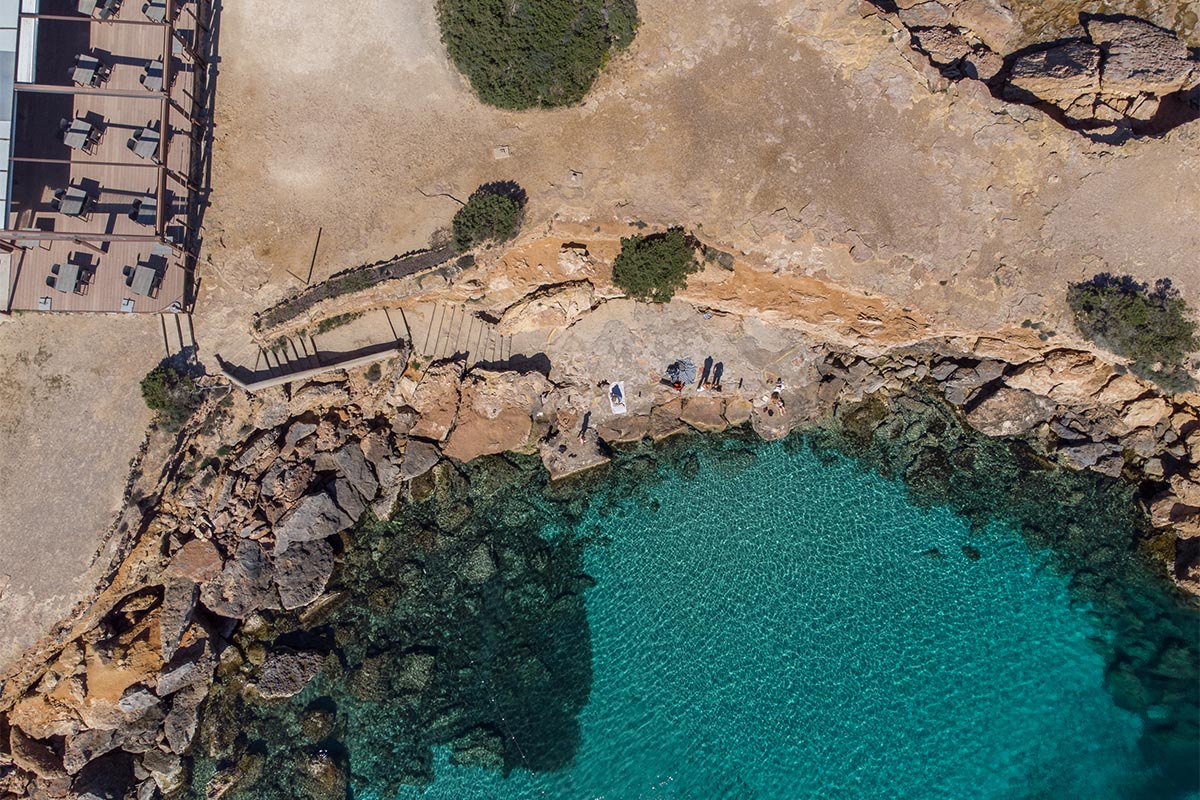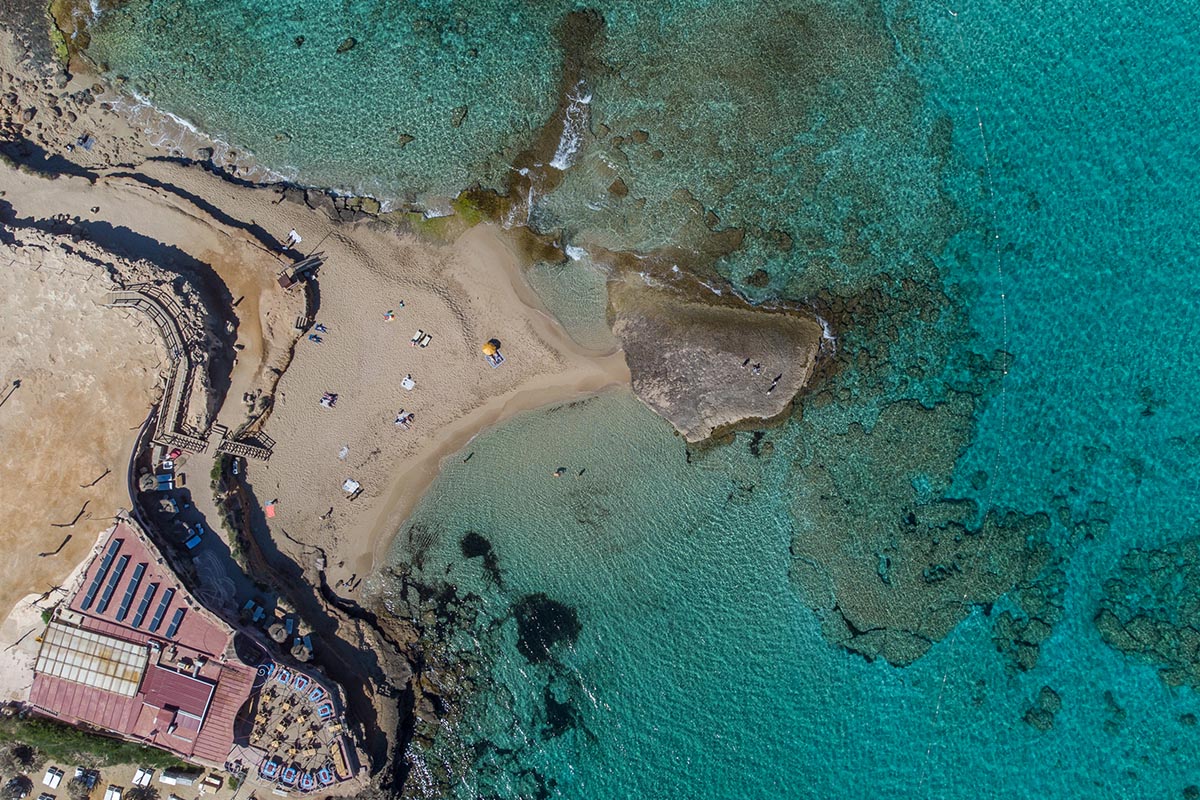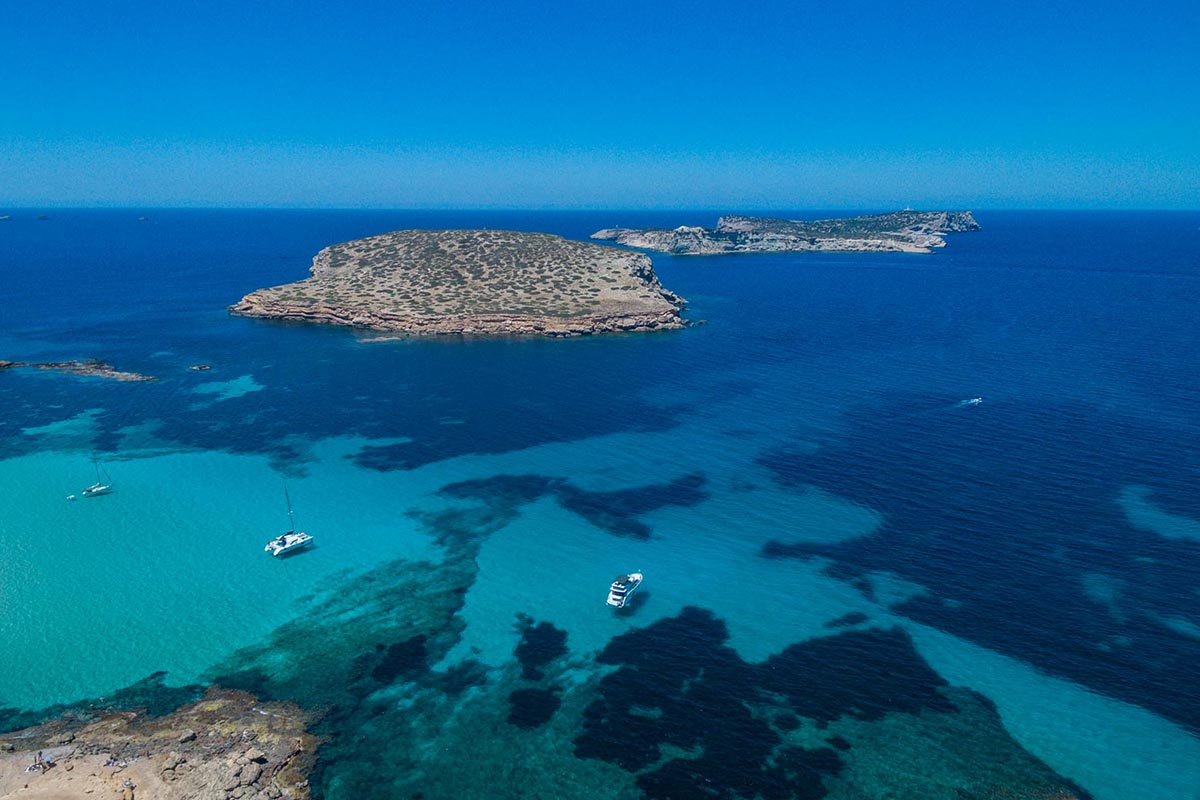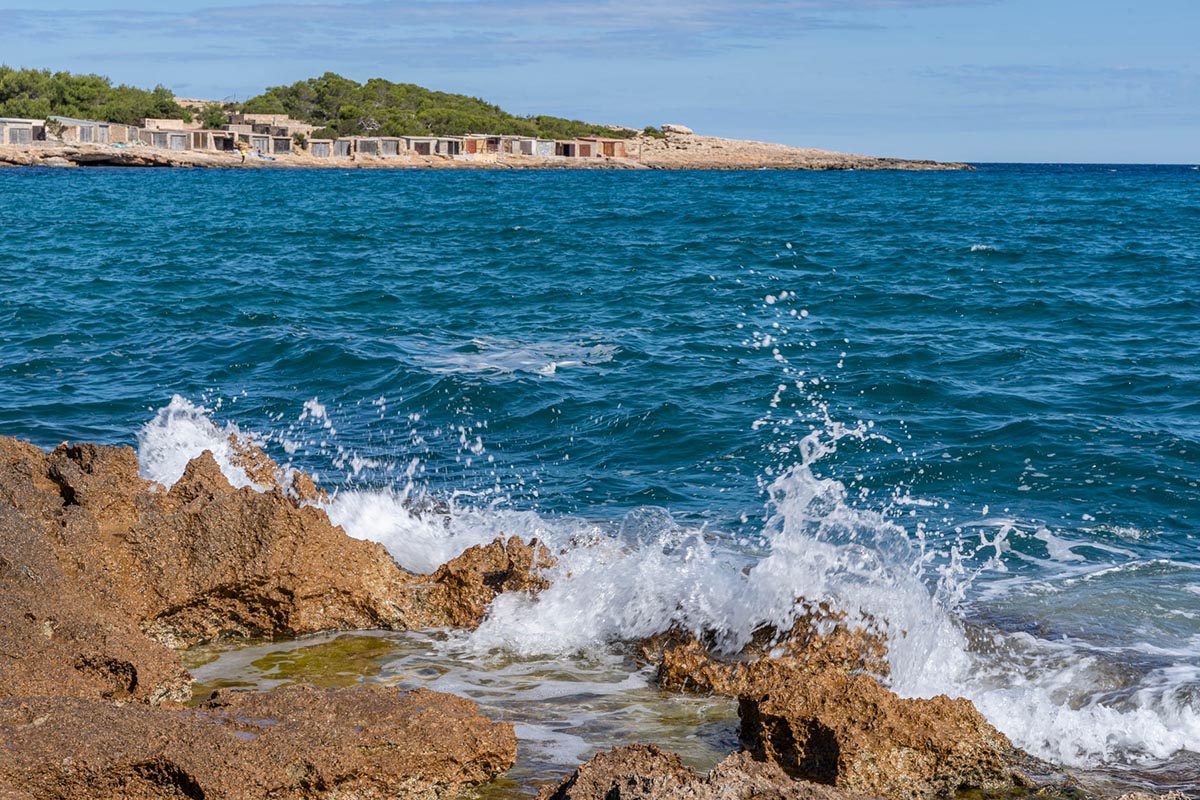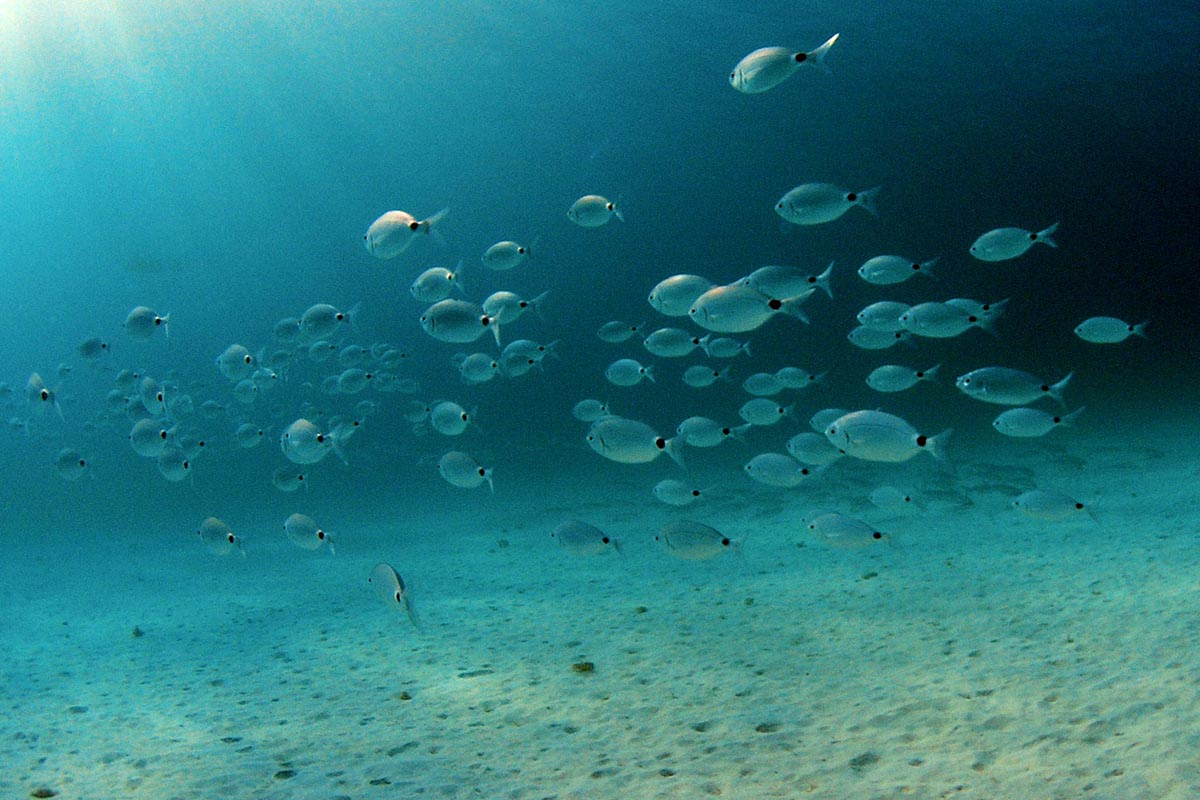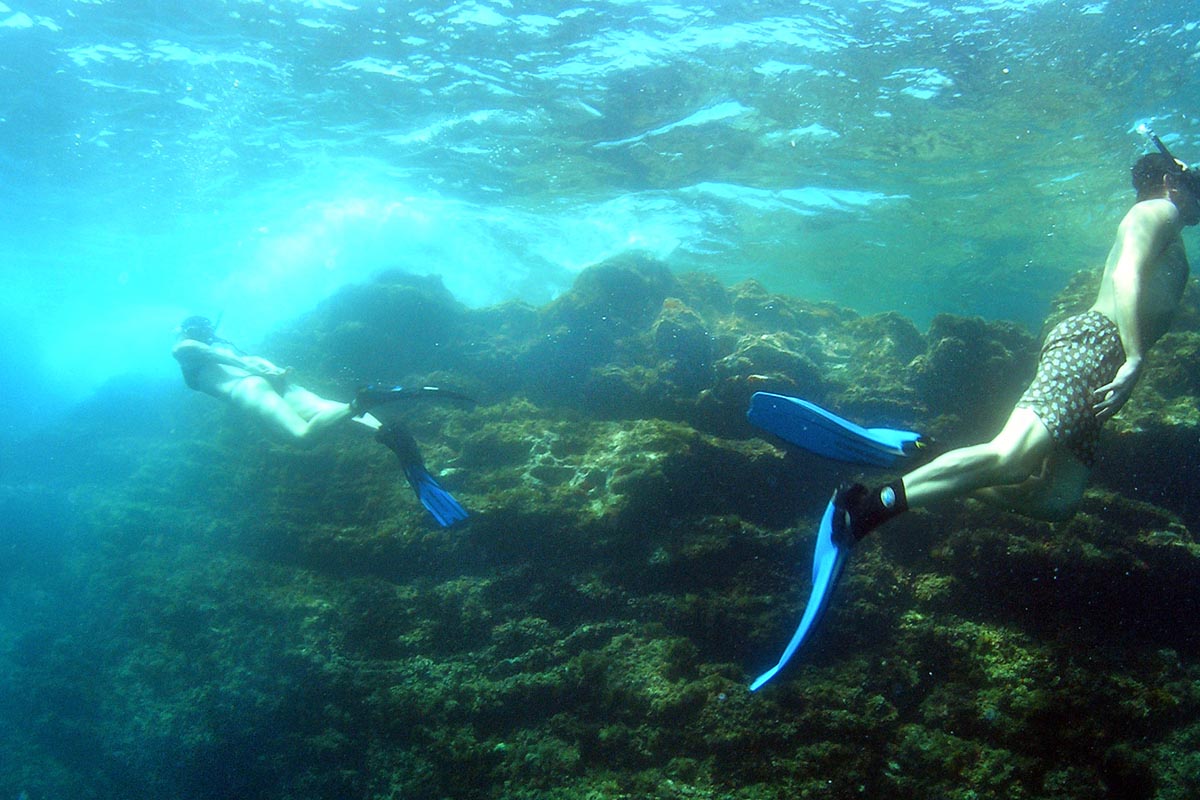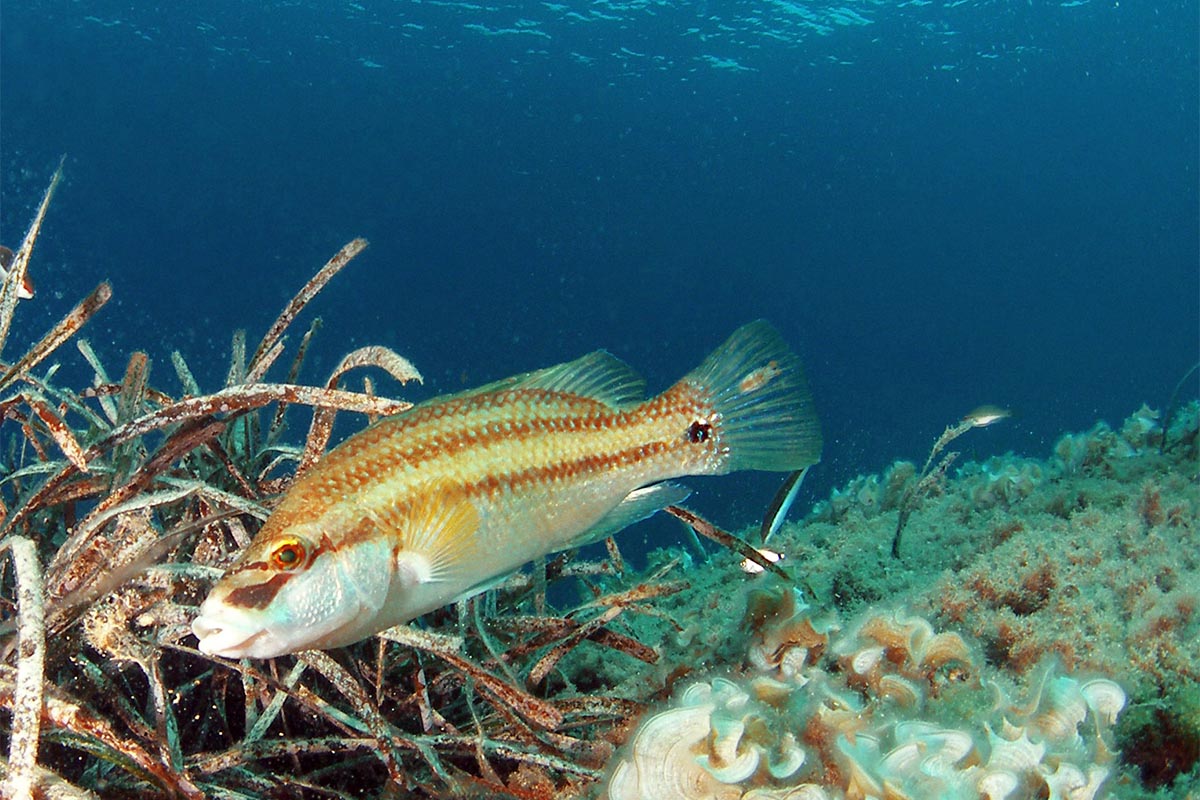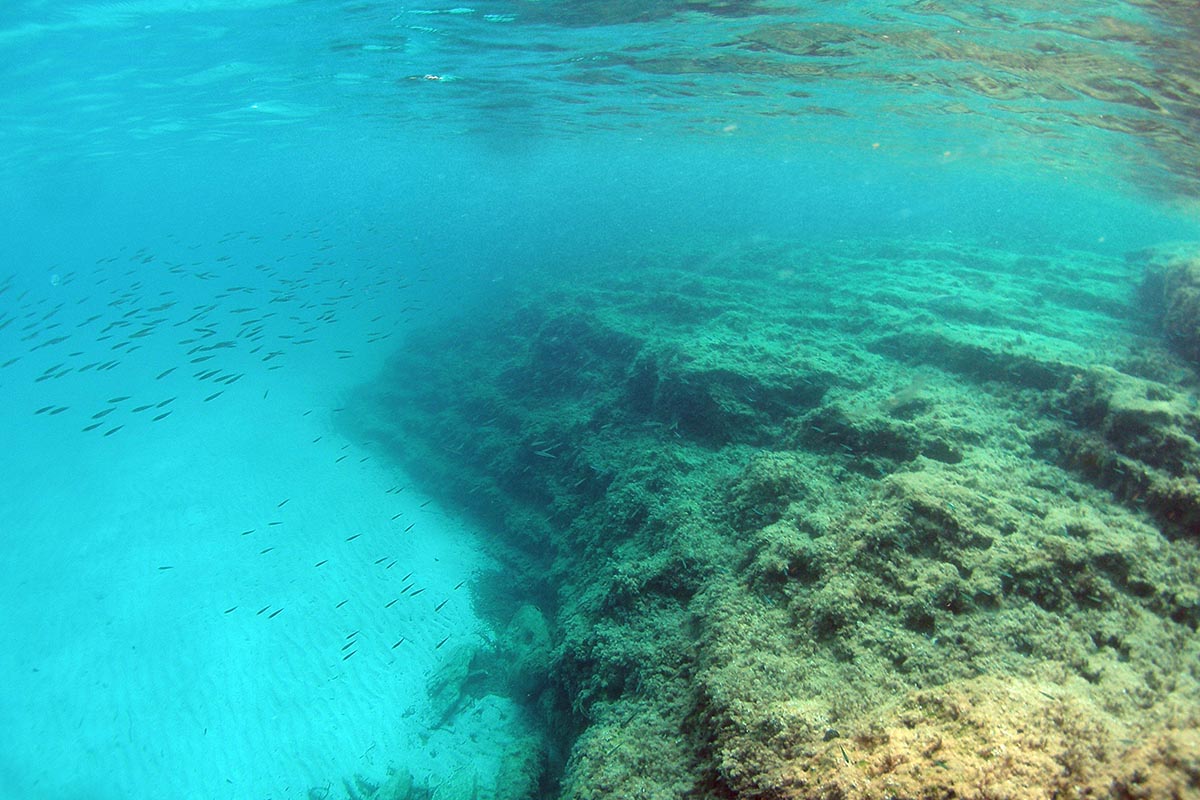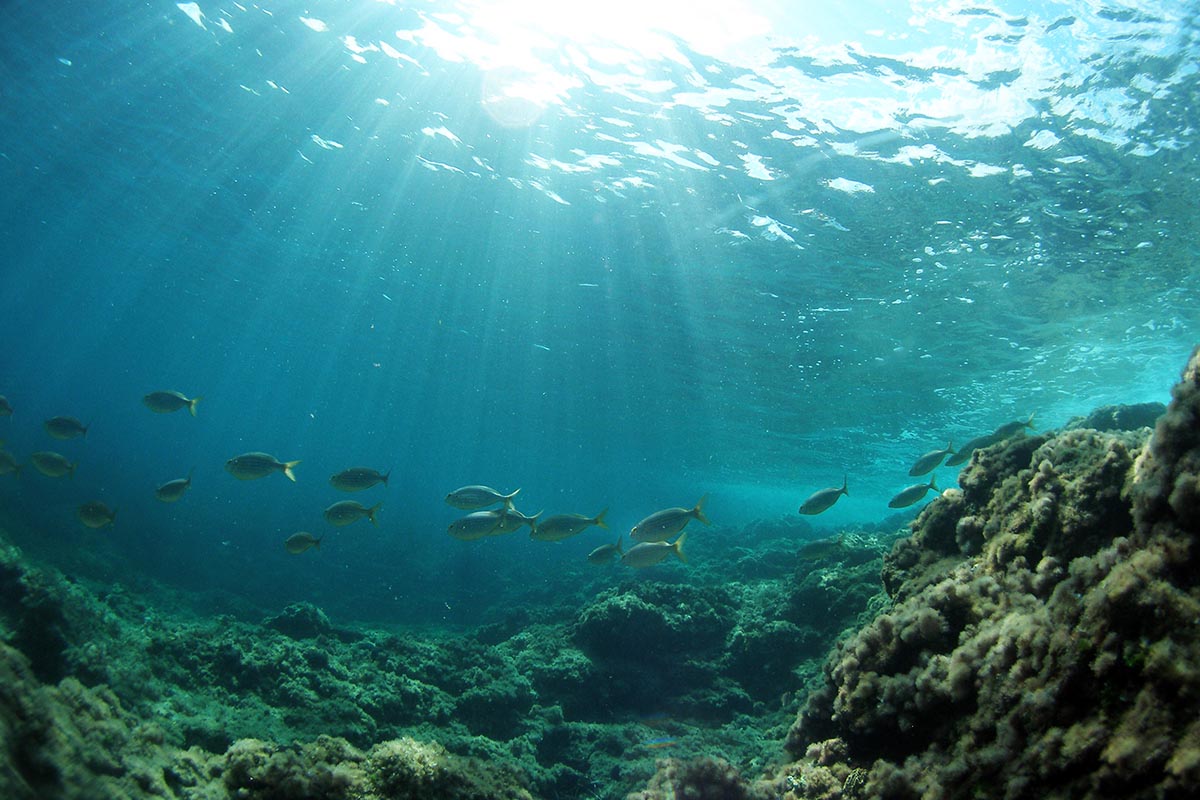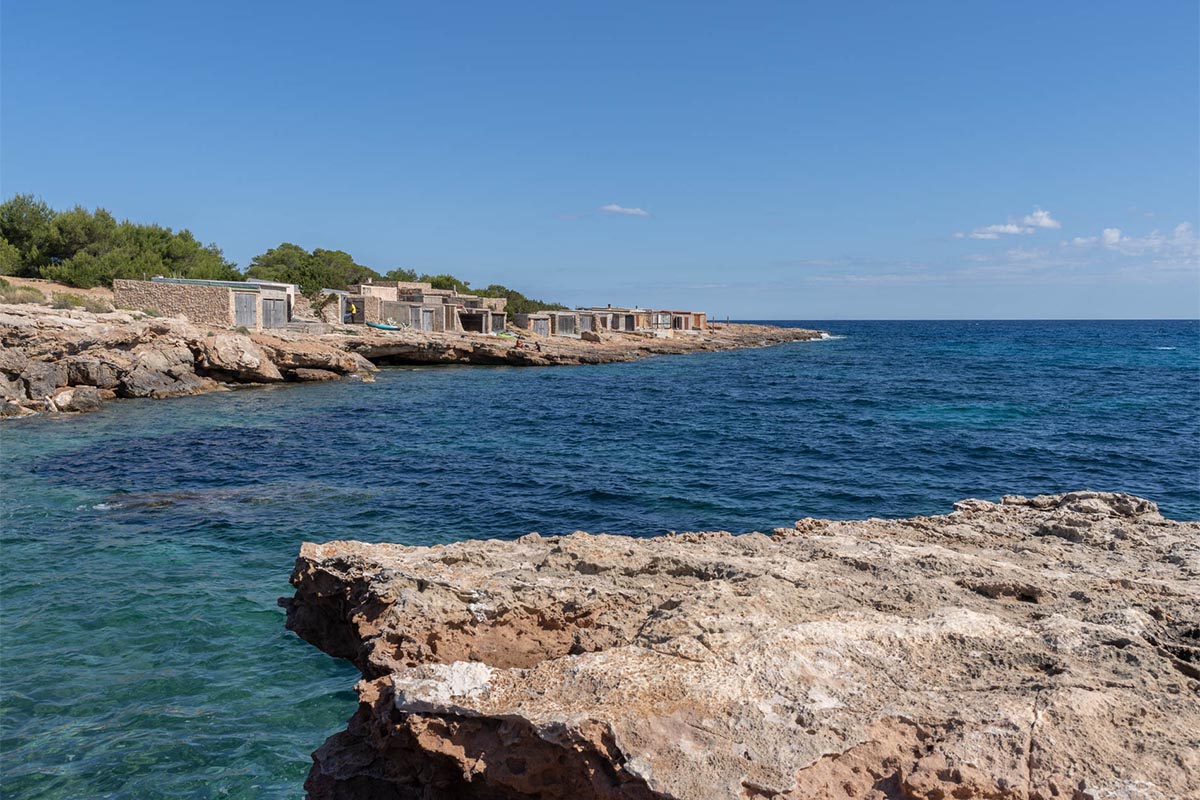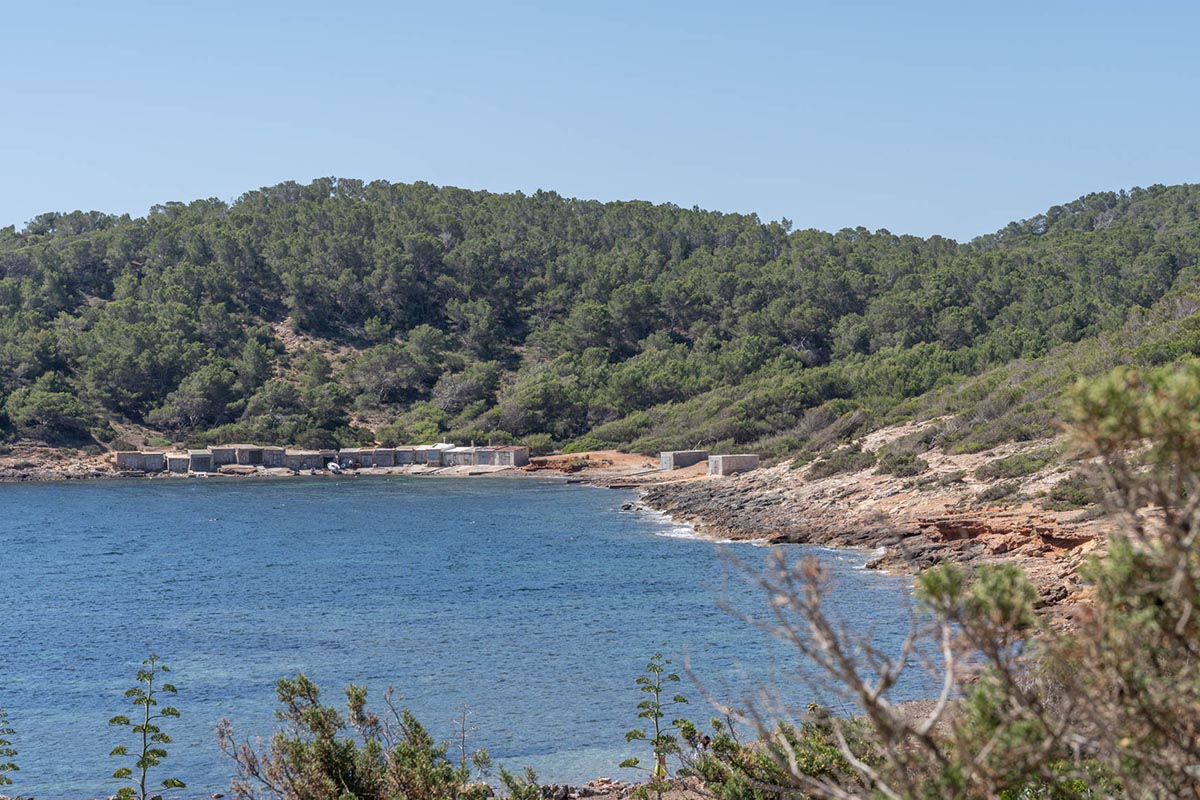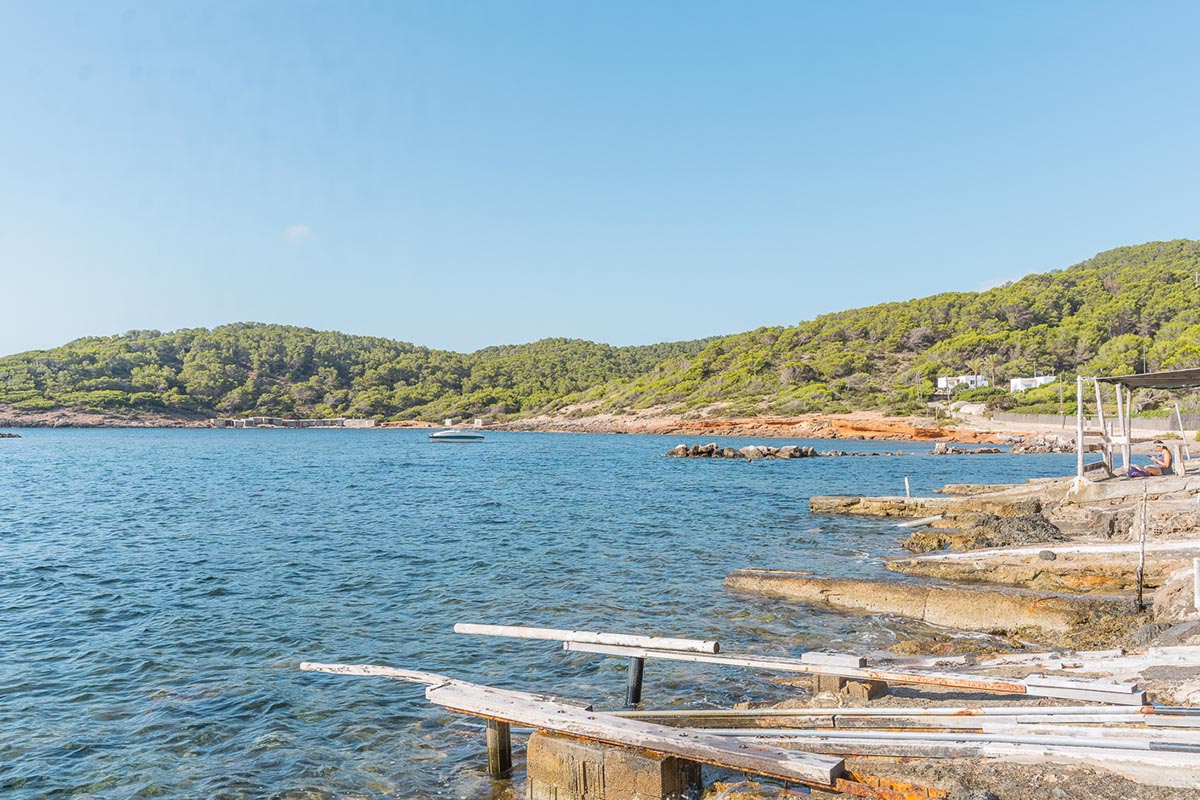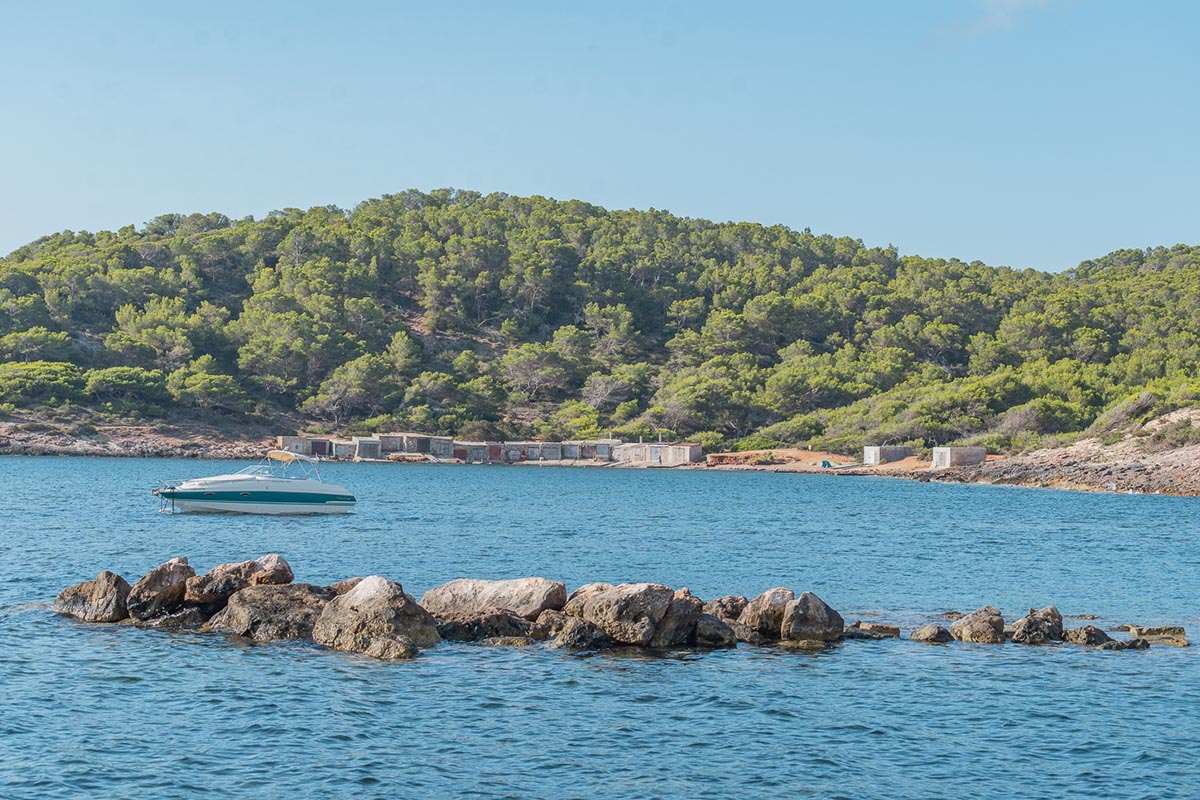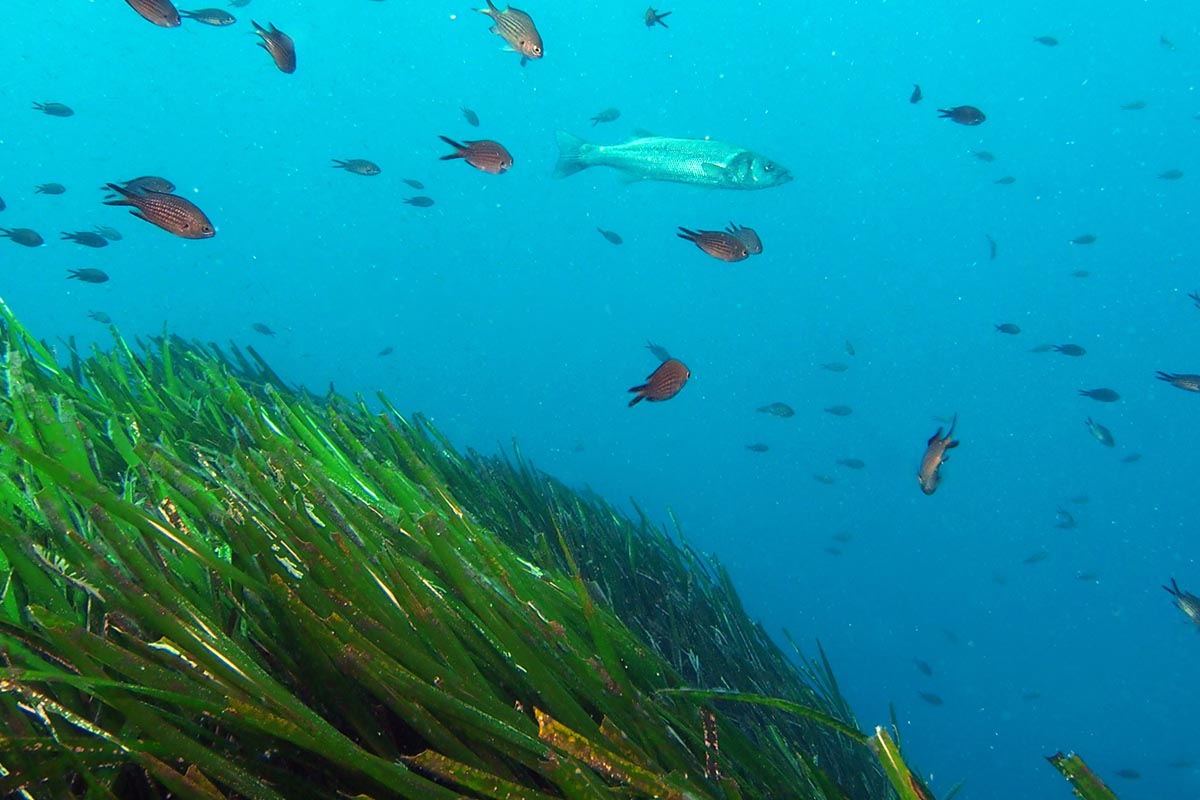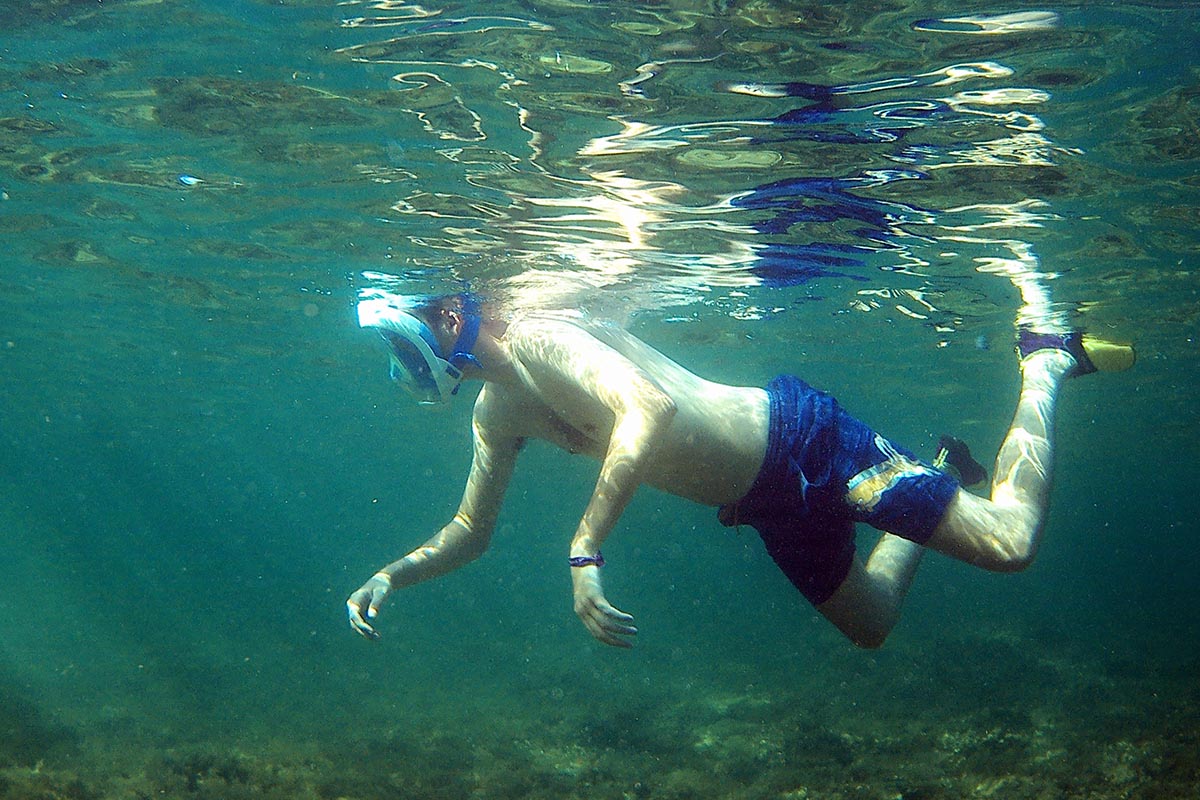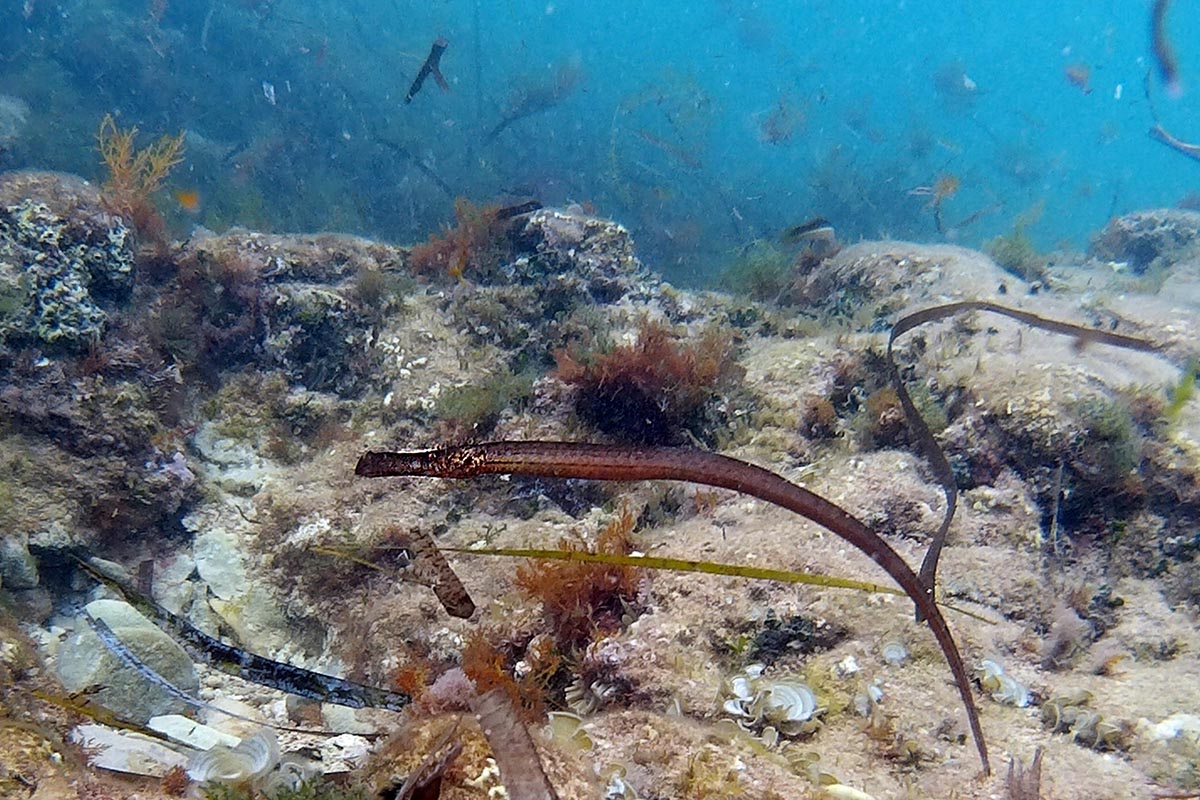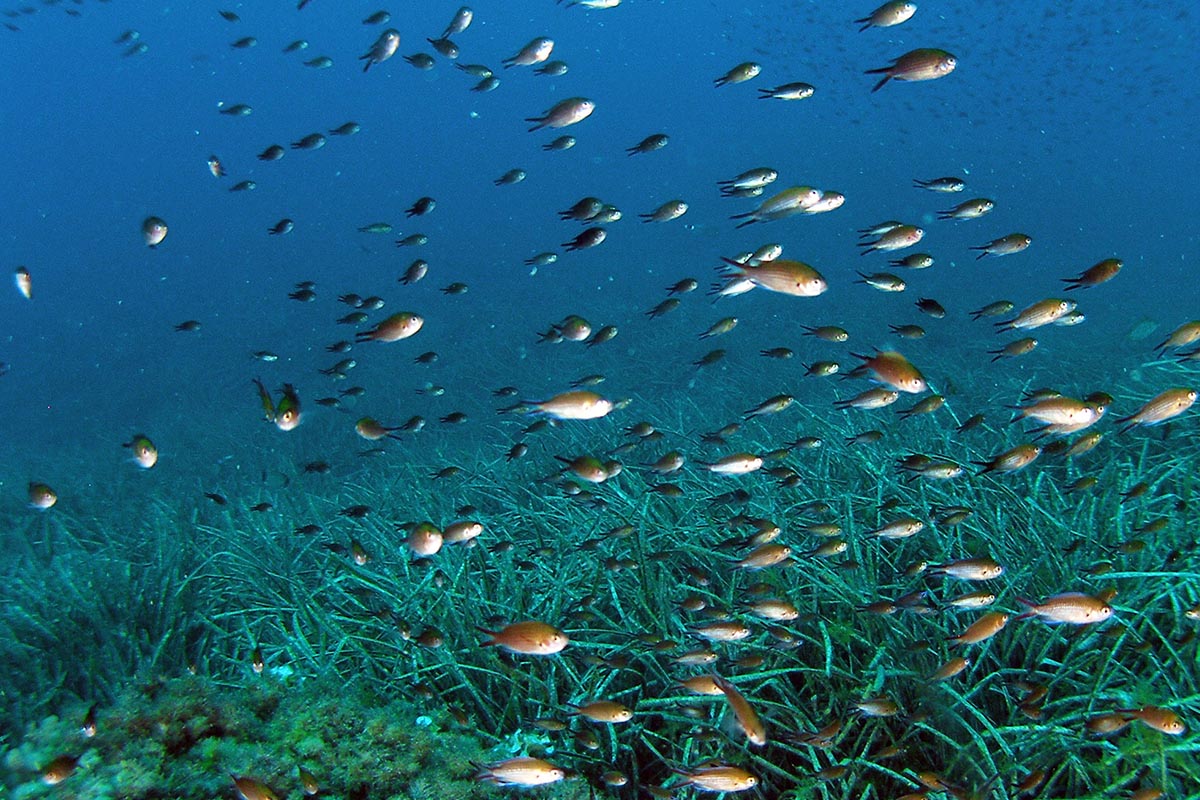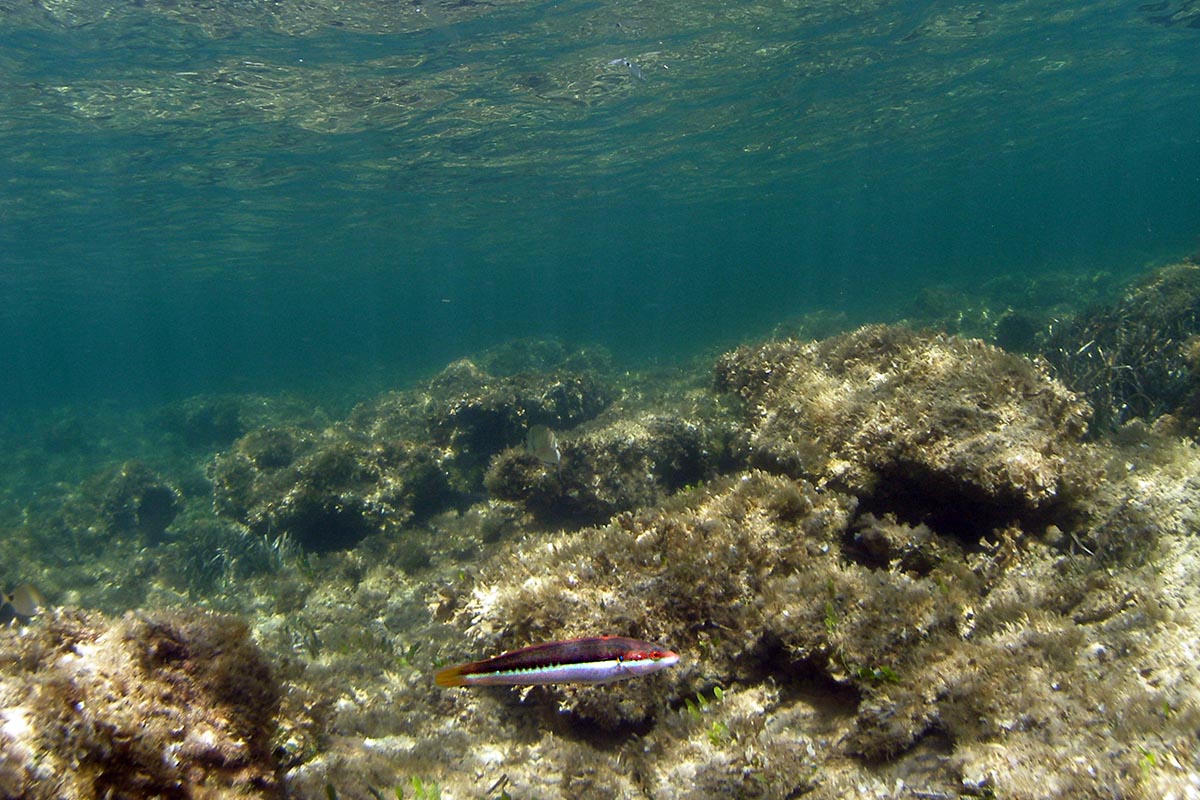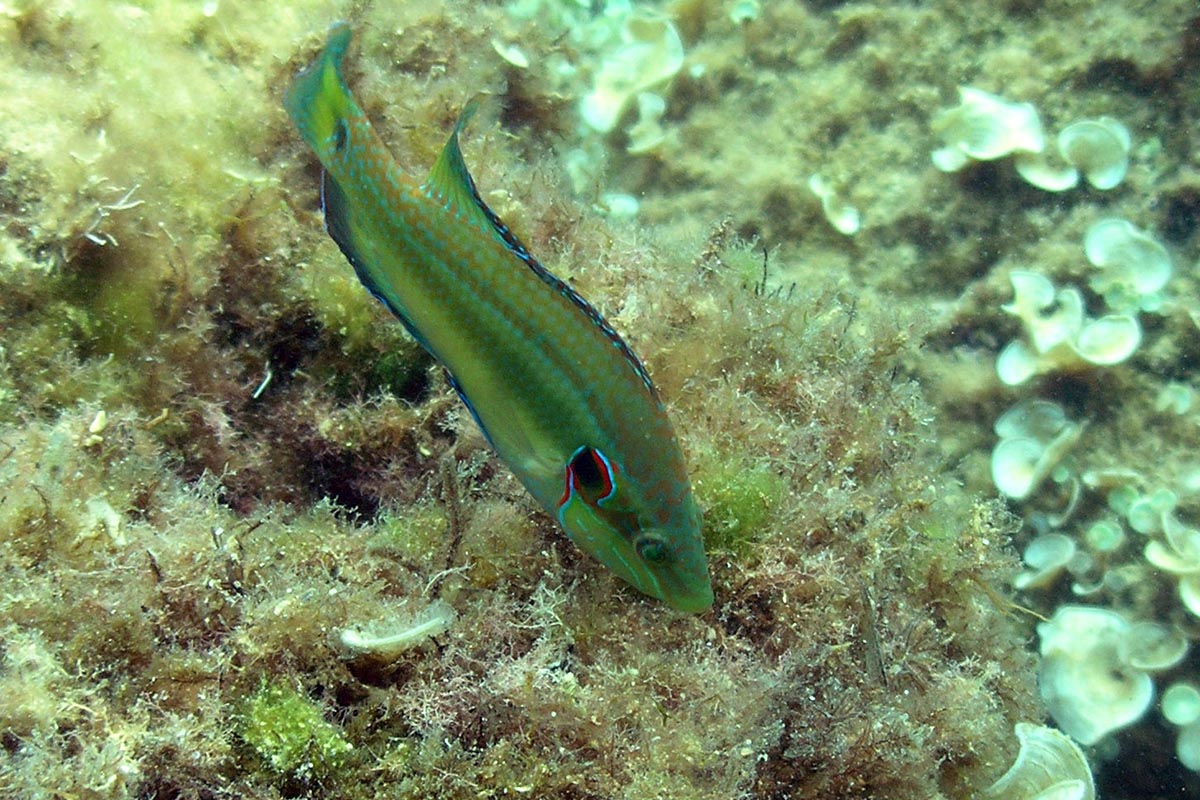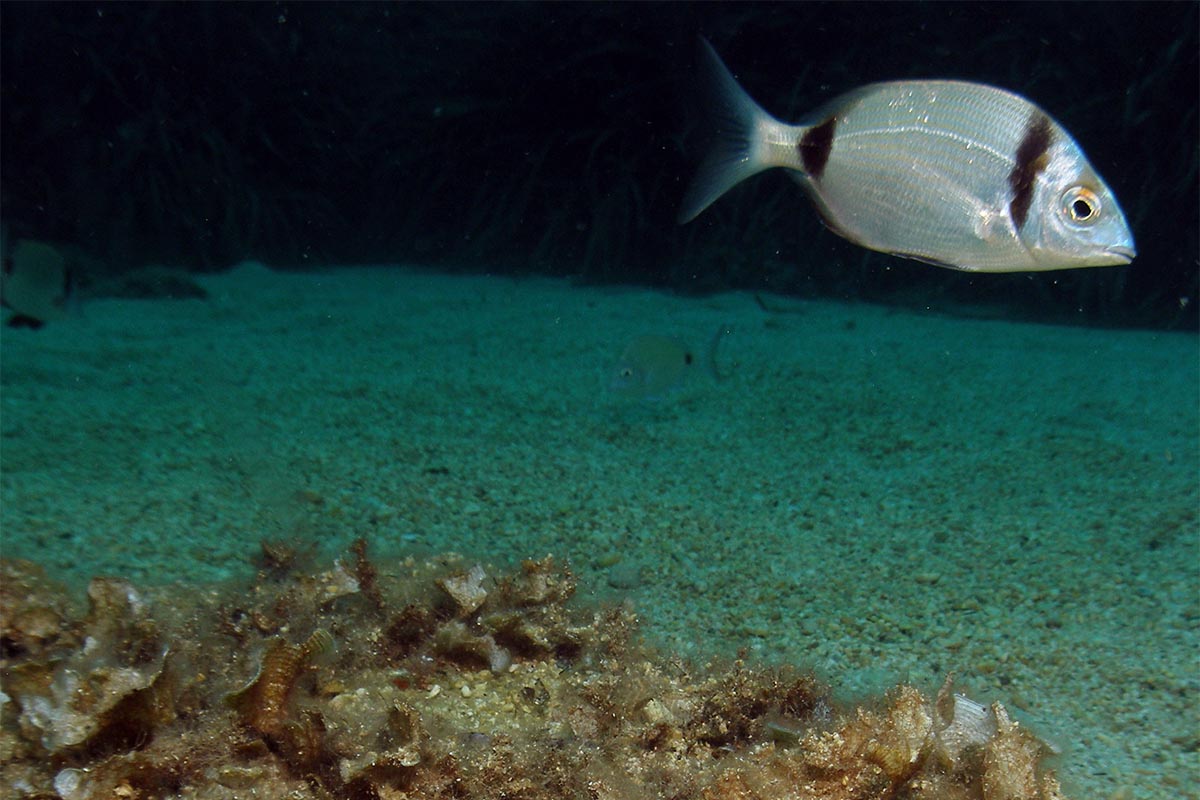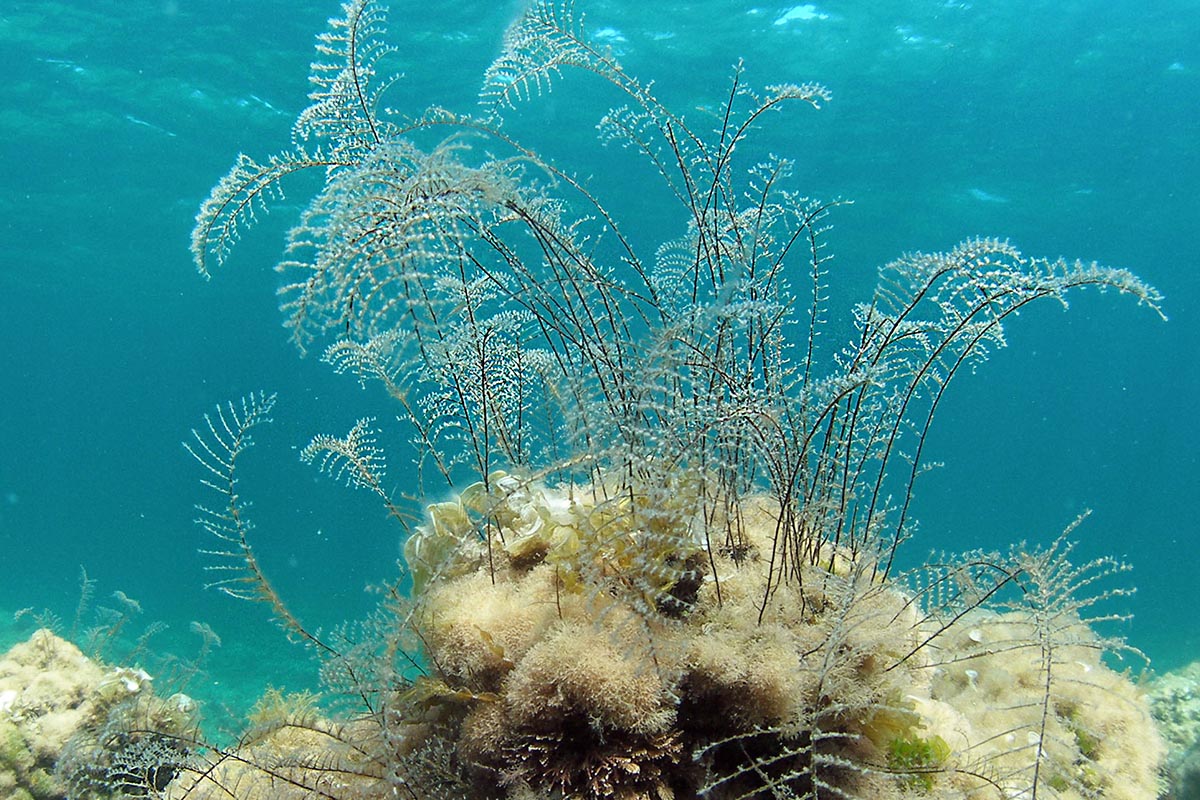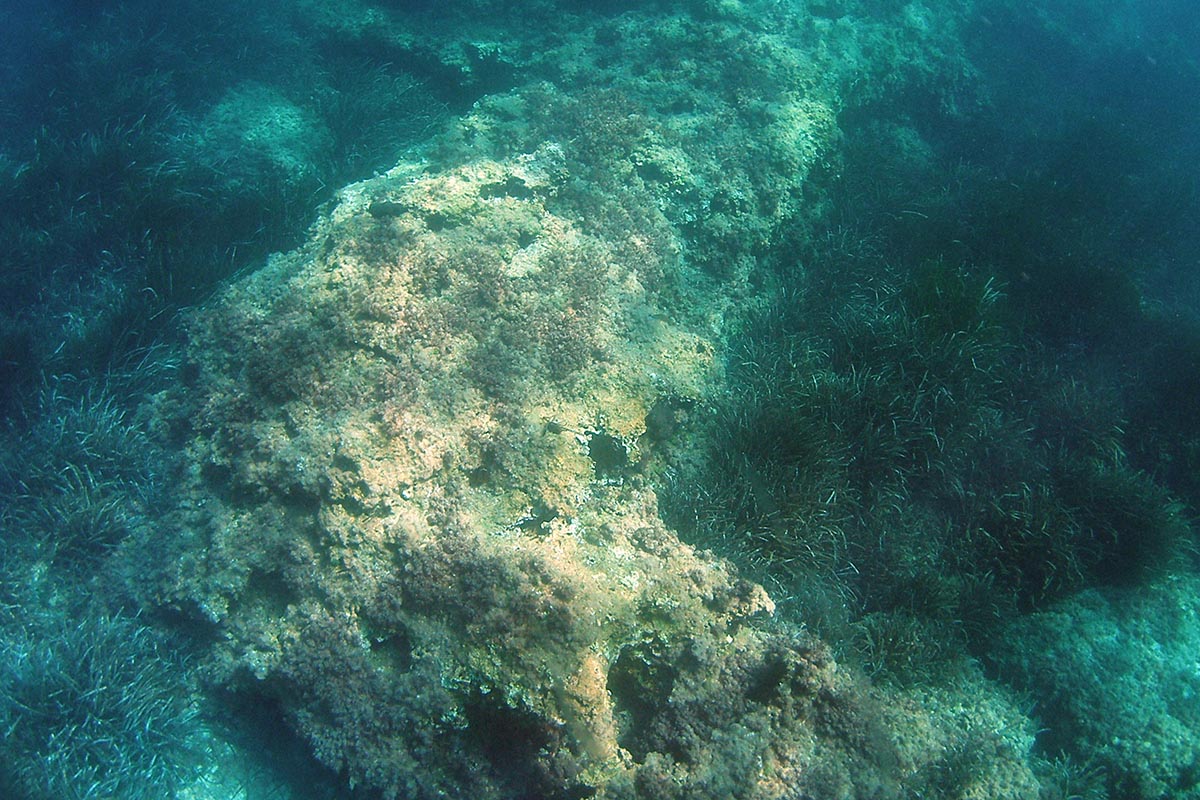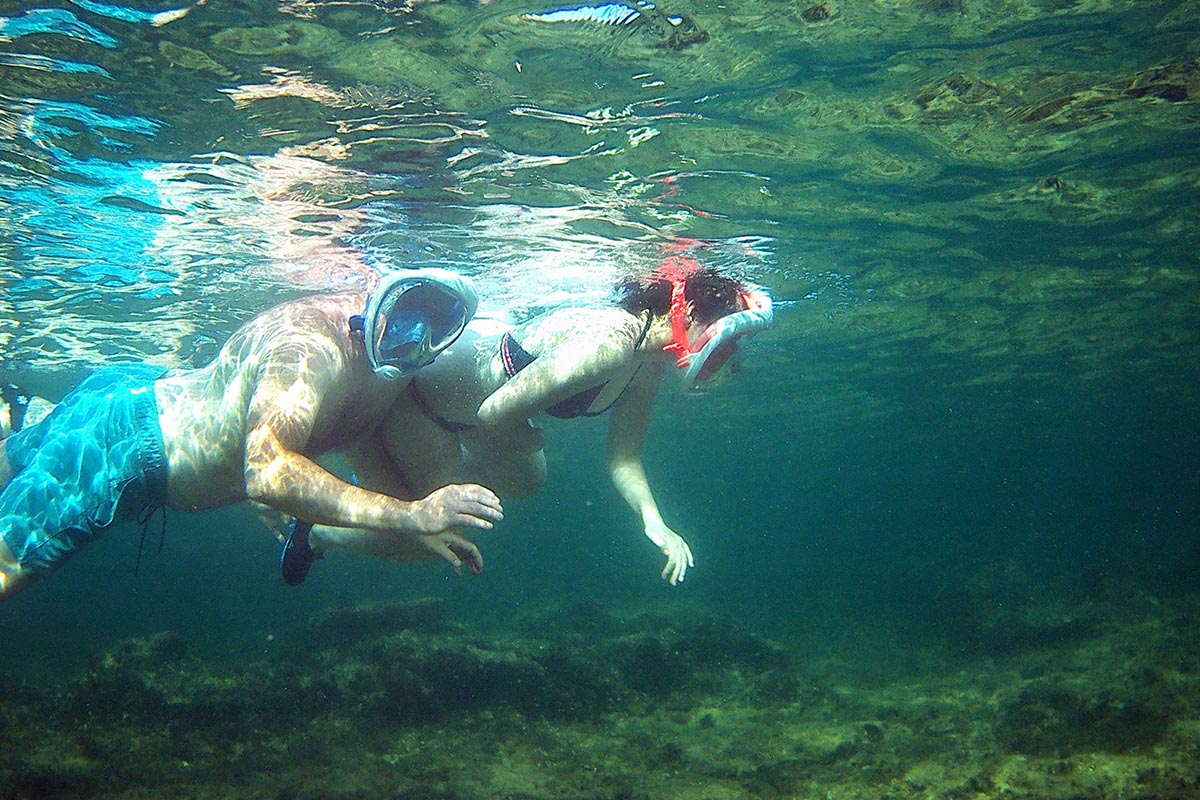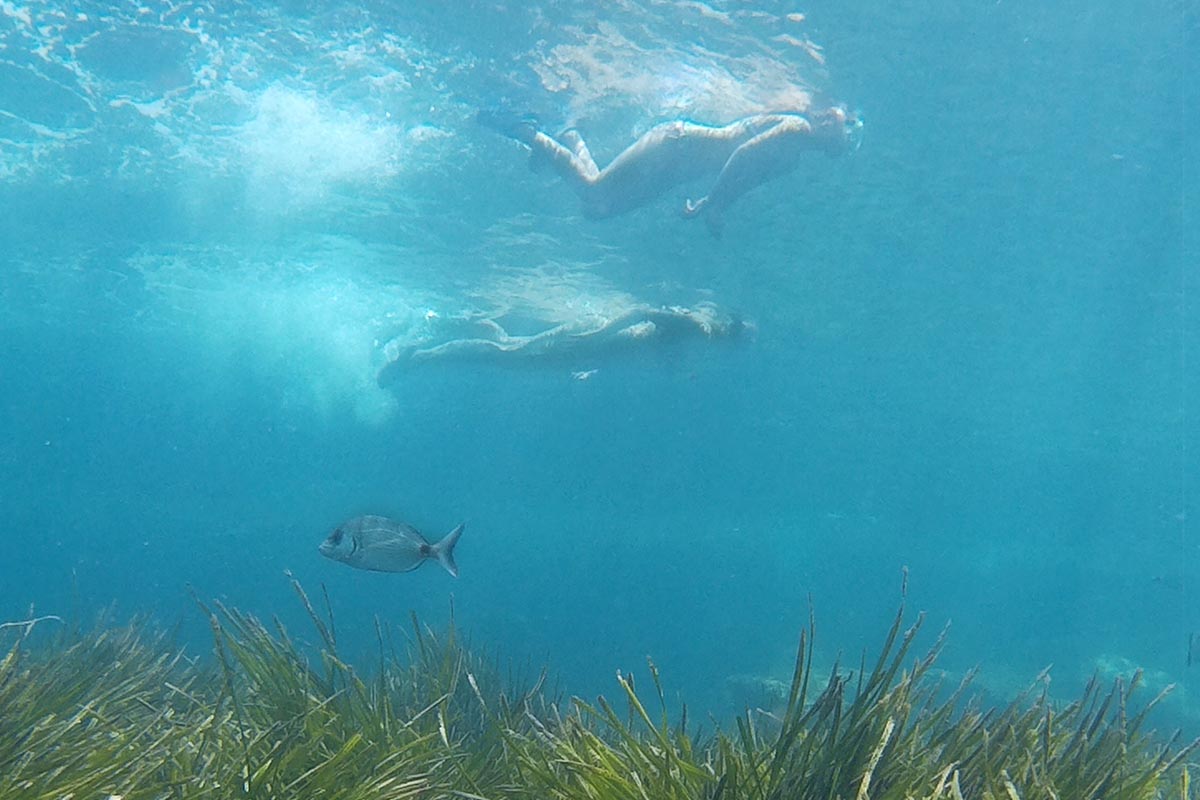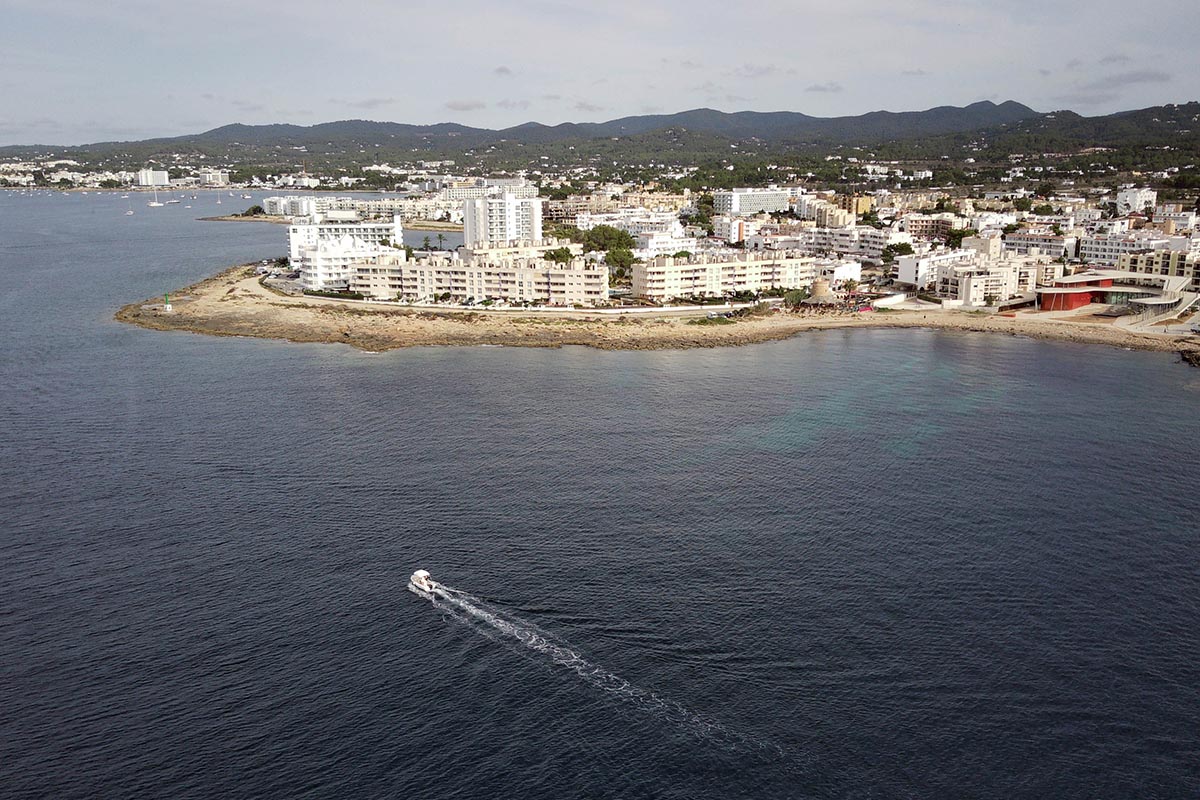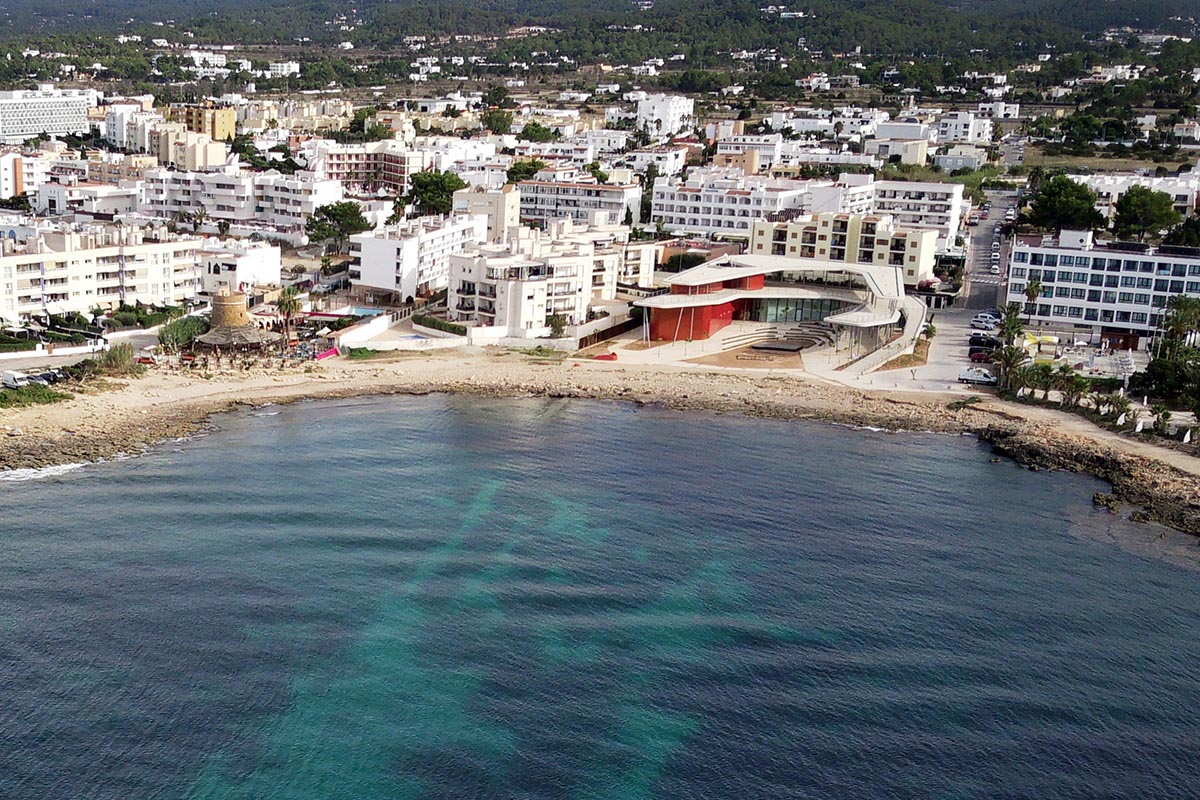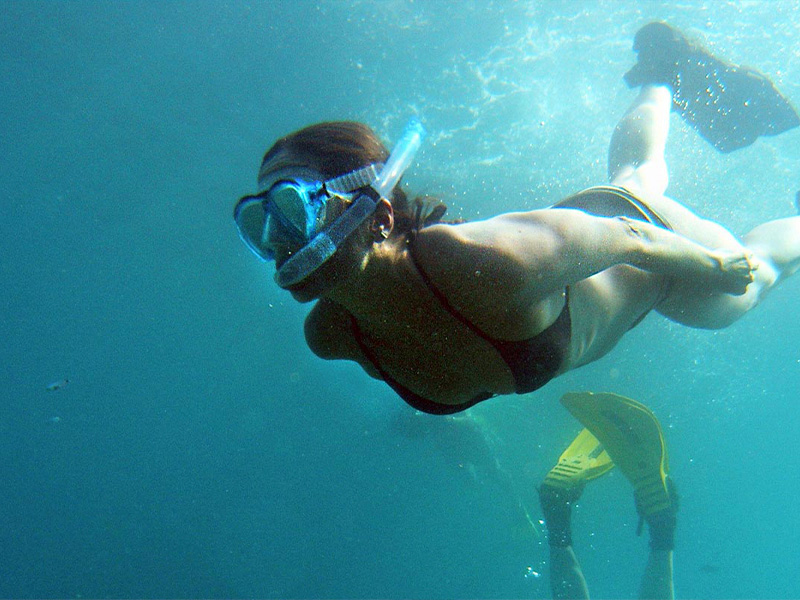
Snorkelling in the waters around Sant Josep
With over 80 kilometres of coastline skirting the municipal district of Sant Josep, and crystal-clear waters, this is a place where snorkelling fans will find a perfect ecosystem that is a paradise for divers. Sant Josep has devised a list of snorkelling routes for exploring the sea depths that border the incredibly beautiful beaches and little coves. More information here!
Es Bol Nou
The Es Bol Nou route to the south can be found nearby the remaining vestiges of Phoenician occupation in Sa Caleta. Entering from the right you will encounter sandy areas with fields of seagrass descending to the rocky depths that border a little cove with fishermen’s huts. There, the rocks increase in size, providing a habitat for several fish species, such as white sea bream, damsel fish, goldline or dream fish and perhaps an octopus or two. Behind the fishermen’s huts there is a point followed by an opening on one side where you will find another solitary hut surrounded by smooth pebbles.
Cala Llentrisca
Cala Llentrisca is a beautiful, remote and little-known beach. This cove in the shape of a half moon has transparent waters that are perfect for diving to the right of the beach. The seabed is shallow and rocky and there are plenty of places for a multitude of marine life (damsel fish, rainbow wrasse, and peacock wrasse). Further out to sea, the amazing sea grass meadow is home to thriving marine life alternating with the sandy seabed in the centre where mullet, damsel fish and gudgeon abound. The other end of the beach has a very rocky area.
Cala Tarida
Cala Tarida is a beach with fine sand and crystal-clear waters. The route begins to the right of the cove’s central islet. The sandy cove gives way to rocks and once you get to the waters facing the boatyard huts you will find it easy to spot sand steenbras, red mullet and shoals of young fish seeking shelter in the rocky nooks and crannies. Close to the point, the thick growths of sea grass are home to large white seabream, two banded seabream and goldline or dream fish. You can dive as far down as 6 metres in perfect luminous light. There, among large slabs of rocks, you will find gilthead bream and sea bass.
Cala Vedella
The western point of Cala Vedella is best for more advanced divers. The route begins on the right close by the boatsheds. The seabed is extremely rocky, filled with dips and fissures and sharp peaks of up to 6 metres with sea grass at their base. Shoals of dream fish and bogue mingle with peacock wrasse and painted comber. Continuing further along the route, you reach a little island and behind this you will find an opening in the rock wall, and you can explore this cave if the waves are not too choppy.
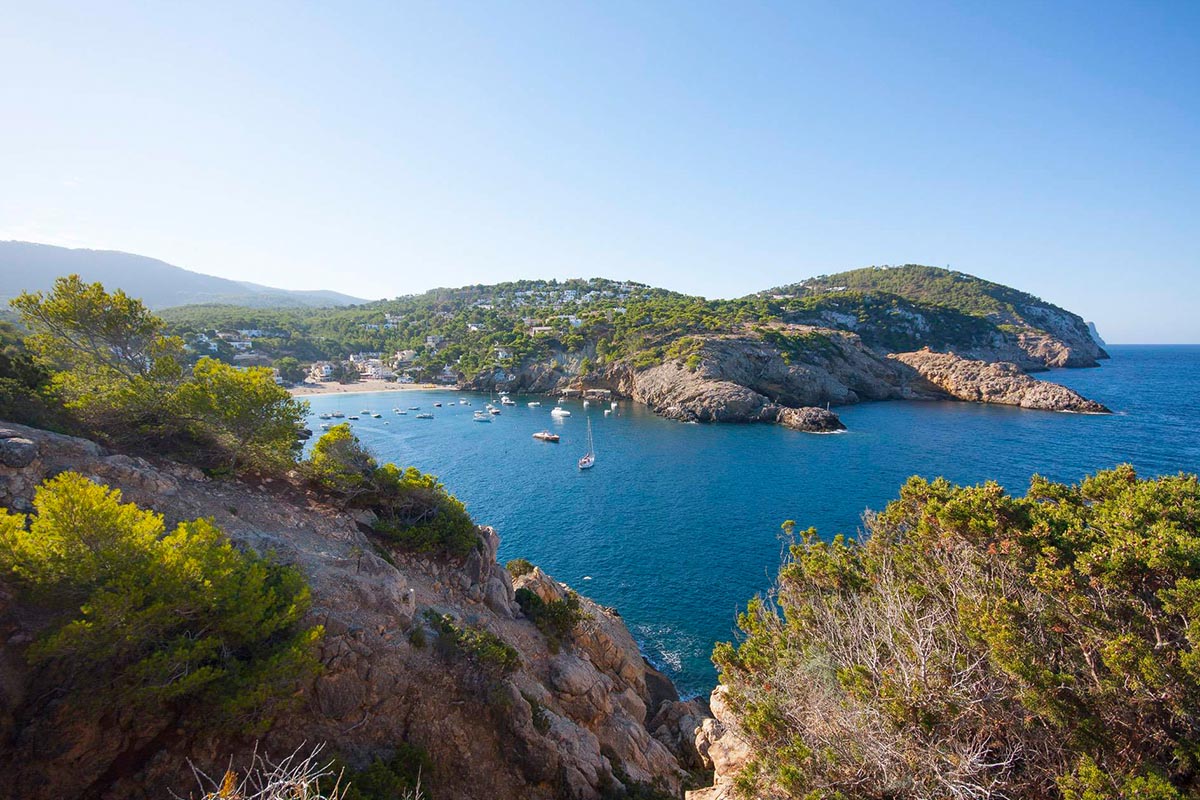
Platges de Comte
Platges de Comte is an idyllic west facing spot with a sandy seabed. The route begins close to the jetty, and you take a right turn over a huge slab of rock which follows the coastline where you may well spot an ornate wrasse feeding on sea urchins among the rocks. The rocks give way to sandy areas of the seabed where you might see red mullet, and there are vertical drops with depths of up to 5 metres.
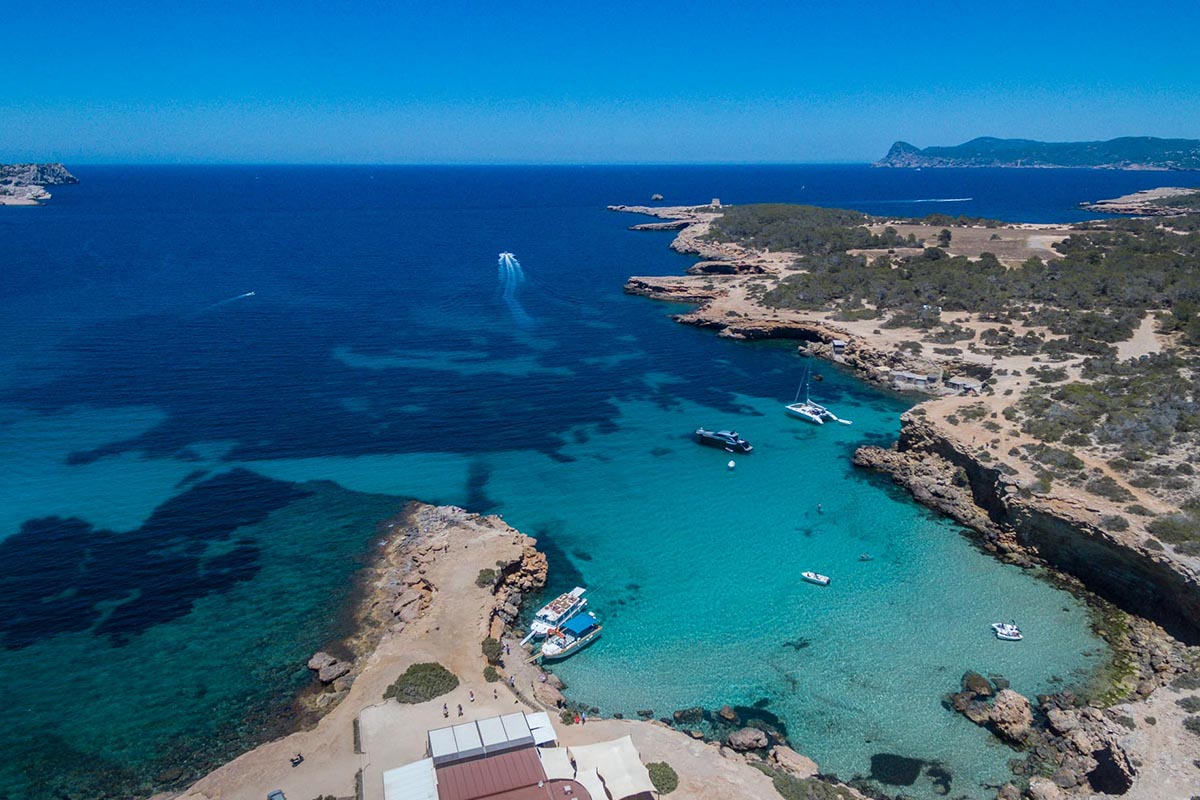
Port des Torrent
Port des Torrent is an easy route that starts close to the jetty. The rock base drops gradually to the seabed with sea grass meadows alternating with stretches of sand. Sometimes the levels drop to 5 metres where goldline or dreamfish, seabream and sand steenbras swim around the sandy bottoms. Without descending further, on the rocky platform, you will be able to see peacock wrasse, blenny, ornate wrasse, sea urchins and shoals of young fish. The rock wall has many folds and dips that provide hours of entertainment.
Sa Sal Rossa
Sa Sal Rossa is located in the Ses Salines natural park, close by the beach Platja d’en Bossa. At the foot of the lookout tower you can enjoy an easy and relaxed dive, setting off on your route from the right of the little dock, close by the boatyard huts. The shallow waters of the seabed are teeming with marine life, peacock wrasse, dreamfish, and rainbow wrasse, with sea urchins nestling in hollows and a sea cucumber here and there. Sea grass which shelters garfish among its fronds, is not the only plant life, sea grape and cymodecea provide further undersea greenery.
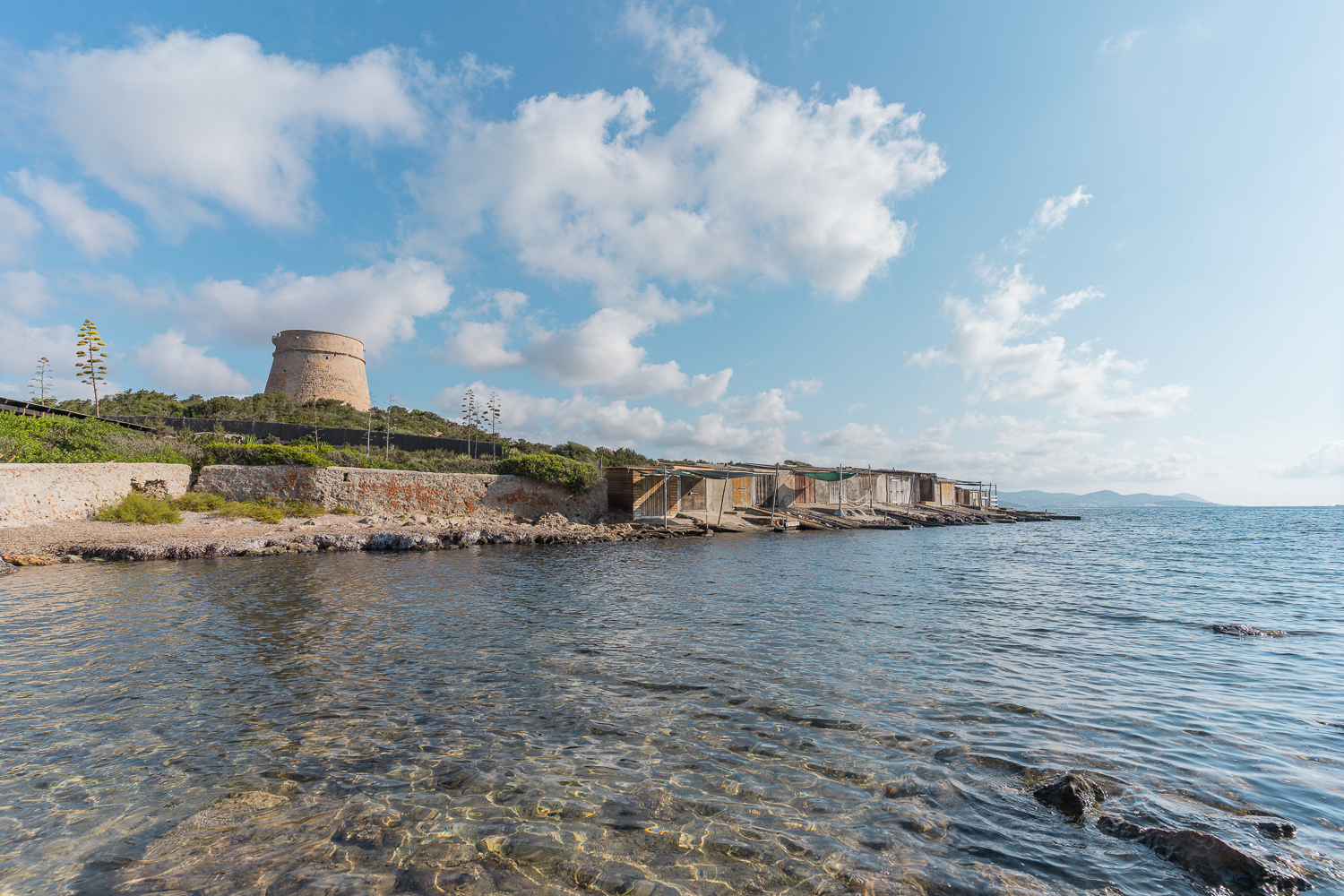
Cala Bassa
Cala Bassa is an idyllic beach where you can begin your dive next to the narrow channel that flows into a natural pool on the right. As you emerge from the channel you will see the sharp rock walls covered with sea grass where marine life abounds, young goldline or dream fish, damsel fish, bogue etc. Following the rock wall to the right you will come upon underwater islets with rocky outcrops reaching as far as Los Sastres Cave, which is a grotto inside the rock platform leading to an open air vault where the sea water flows in. Following the coastline you will pass some amazing channels in the rock, with sandy bottoms and sea grass meadows. Rainbow wrasse, ornate wrasse, red mullet, and pearly razor fish are commonly found in this zone.
Cala Codolar
Cala Codolar is an ideal route for advanced divers. Taking care to avoid the shipping channel, enter the water on the right side where you will find a rocky seabed covered with both white and brown algae. Away from the rock wall, the seabed is stepped, displaying the rock strata. Here you will find abundant marine life such as White Sea bream, ornate wrasse and gudgeon as they seek out sea urchins. The water is crystal clear and rocks bright white. The coastline consists of a series of folds and hollows, and nearby a rocky outcrop that is submerged to a depth of 5 metres invites you to explore.
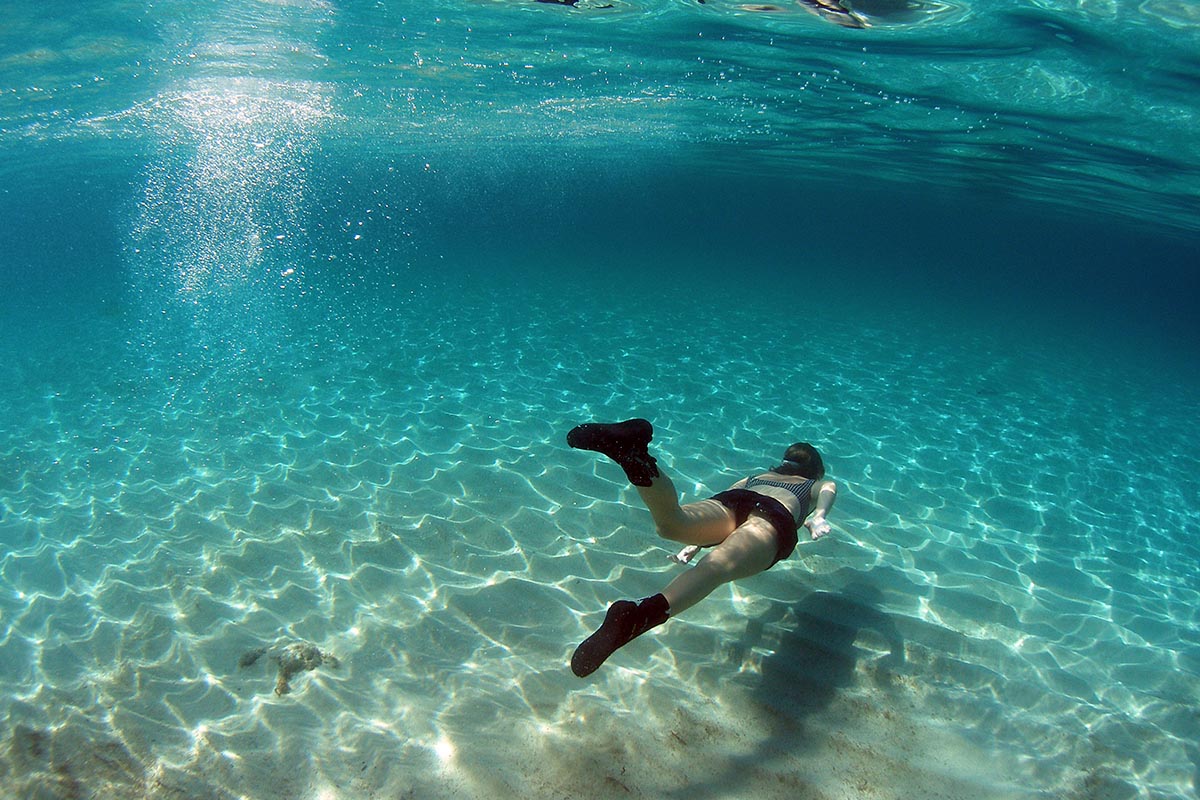
Punta d’en Xinxó
Punta d’en Xinxó, in the tranquil urban beach of Caló de s’Oli, offers a sandy and rocky seabed full of dips and shallows for curious divers of all levels to explore. There are shallow depths and deeper hollows further out from the coast 5 metres down, with abundant fields of sea grass. From the right of the beach, towards the green beacon, you pass by a rocky outcrop that gives the place its name and which is teeming with subterranean marine life. Sea urchins nestle in niches in the rock, providing an ideal food source for the rainbow wrasse, ornate wrasse and two banded sea bream. Among the fields of sea grass, you may spot large shoals of dream fish nibbling the leaves like the good vegetarians they are. It is important to be aware that this area is popular with fishermen so be careful and look out for any fishing lines and hooks.


